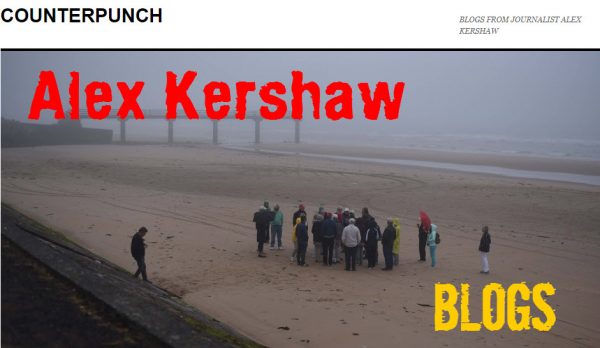The post A French Tragedy appeared first on World War Media.
]]>Arrested as a Jew under the racial laws, Novelist Irene Nemirovsky, died at Auschwitz at the age of 39. Successful in her day, she is now best known for the posthumously published Suite française. How France sent its greatest chronicler of the Nazi occupation to her death.
By Alex Kershaw – Author of ‘The Bedford Boys’, ‘ Avenue of Spies’ and ‘The Liberator’
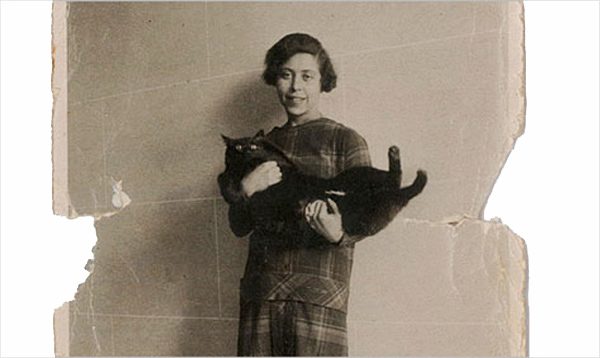
“In life, as on a shipwrecked boat, you have to cut off the hands of anyone who tries to hang on. Alone, you can stay afloat. If you waste time saving other people, you’re finished.”
Irene Nemirovsky, author of Suite Francaise.
On 11 July 1942, 39-year-old Irene Nemirovsky walked alone through beautiful countryside near Issy-l’Eveque, a village in the Bourgogne around two hundred miles south of Paris. Her home was a large building near a former livestock building in the village, just a short walk from the local police station. She had a wonderful view of the Morvan hills. Her husband, Michel, grew beetroot and other vegetables in a large garden nearby and so she and her two daughters had not gone hungry.
The Russian-born writer was a striking woman with large, highly intelligent eyes, her dark hair usually pulled back from her broad forehead. That day, she felt unusually carefree, her sense of dread and doom having abated. She had been forced to write these last months in minute lettering because of a shortage of paper and was near completing what would be her masterpiece, to be titled Suite Francaise. But as a Jewish author she could no longer publish her work and she had little hope, if any, of ever seeing it in print. Nor could she ride a bicycle or take a train to her beloved Paris, which she had fled in 1940 just ahead of the German advance.
She had recently been reading the journal of the writer Katherine Mansfield and had noted certain lines that matched her own mood: “Just when one thinks: “Now I’ve touched the bottom of the sea – now I can’t go down any lower,” one sinks deeper still. And so on for ever.” But she did not feel that way today, 11 July 1942, as she walked in the woods near her home. Pine trees towered above her as she down on her blue cardigan, which she had laid on a dank blanket of rotting leaves. She had a copy of the novel Anna Karenina and an orange in her bag. She listened to a steady drone of honeybees. Later that day, she would pen her last words in a letter to her editor in Paris: “I’ve written a great deal lately. I suppose they will be posthumous books but it still makes the time go by.”
Two days later, on Monday 13 July, the weather was again superb. It was around 10am when a car stopped in the Place du Monument aux Morts in Issy-l’Eveque. There was the sound of footsteps then a knock on the door. Two French policemen had a summons with them. Irene’s two children were with her and her husband. One was called Denise. She heard her parents go into their bedroom. Irene asked her husband to do all he could to secure her release through contacts with important people in Paris, those with connections to the Germans, especially high profile collaborators. There was a “dense silence”, recalled Denise, and then the gendarmes allowed her to kiss her mother goodbye. Irene threw a few things into a suitcase. Her voice frail, she told her children she had to go away for a while. Denise looked at her father. He was clearly very upset but he did not cry. Finally, Denise heard a car door slam shut and then the “dense silence” returned.
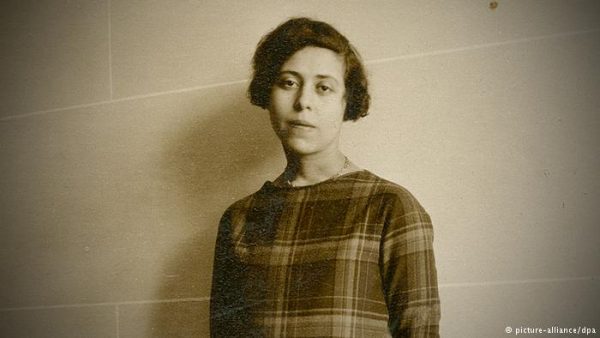
Irene was taken to a police station at Toulon-sur-Arroux, ten miles away. The next day, Irene wrote to her husband: “If you can send me anything, I think my second pair of glasses in the other suitcase (in the wallet). Books, please, and also if possible a bit of salted butter. Goodbye, my love!” Before they could be arrested, Irene’s children, Denise and Elizabeth, were taken to a safe house. They would miraculously survive the war. Meanwhile, Michel contacted anyone who might be able to help him secure Irene’s release. He was convined that some of his contacts, such as Rene de Chambrun and other “influential friends”, would exert pressure and save his wife.
The following evening, 14 July, Paul Epstein, Irene’s brother in law, had a face-to- face meeting with a prominent collaborator, a corporate lawyer called Rene de Chambrun, in Paris. It was Bastille Day but there had been no national celebration. Two days later, Epstein was in turn arrested. Andre Sabatier, Irene’s editor, tried to contact Rene de Chambrun, calling him urgently on the phone several times. It is not known if Rene returned any of the calls.
Paul Epstein was one of thousands caught up in the mass arrests that came to be known as the Grand Rafle, which began on the night of July 16 and lasted well into the following day as 13,152 Parisian Jews, including 4000 children, were arrested and around half of them taken to the Vel d’Hiver, a large velodrome beside the Seine. The round up, carried out with great efficiency by the French police, was the only thing people all over the talked about, it seemed, in every food line, office and hospital ward. The screams of Jews committing suicide pierced the terrible quiet in some quartiers. The famous German writer, Ernst Junger, serving in Paris, noted with matter of fact precision in his diary that he had heard “wailing in the streets” as families were literally torn apart, with adults being separated from their young children.
The medical conditions at the Vel D’Hiver, it was soon learned, were utterly atrocious. There were no lavatories. There was only one water tap for over seven thousand people. According to one account: “It was a rafle conducted in keeping with the best of French conditions, for at noon the policemen returned to their posts to have lunch while higher-ranked and better paid set off to nearby restaurants. Only after the sacred dejeuner could the manhunt continue.”
Women’s cries could soon be heard throughout the Vel D’Hiver. “On a soif!”
“We’re thirsty!” they called out.
Only two doctors were allowed inside the Velodrome, equipped with little more than aspirin. After five days, those incarcerated were transferred in cattle trucks to camps at Pithiviers, Beaune-la-Rolande and Drancy, a modernist high-rise development built in the 1930s also known as La Cité de la Muette – the City of Silence.
A young Parisian called Annette Monod watched a batch of young children, who had been separated from their parents, as they were taken by French police from the City of Silence: “The gendarmes tried to have a roll call. But children and names did not correspond. Rosenthal, Biegelmann, Radetski – it all meant nothing to them. They did not understand what was wanted of them, and several even wandered away from the group. That was how a little boy approached a gendarme, to play with the whistle hanging at his belt: a little girl made off to a small bank on which a few flowers were growing, and she picked some to make a bunch. The gendarmes did not know what to do. Then the order came to escort the children to the railway station nearby, without insisting on the roll call.”
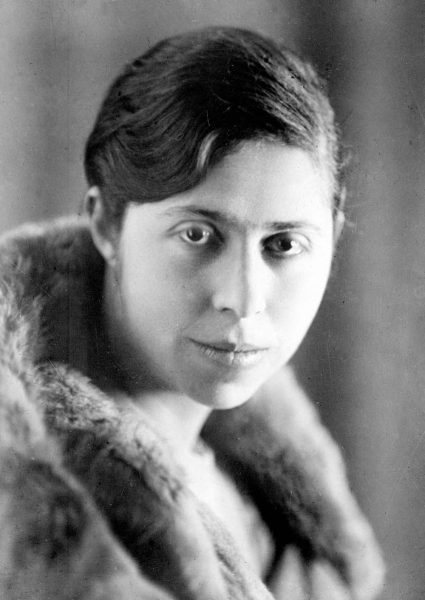
On 27 July, Irene Nemirovsky’s husband Michel wrote a letter to German ambassador in Paris, Otto Abetz: “I believe you alone can save my wife. I place in you my last hope.” To make sure the letter was delivered to Abetz, Michel sent it to his wife’s editor in Paris, asking him to pass it on to Rene de Chambrun for forwarding to Abetz. The next day, Irene’s editor duly sent the letter to Chambrun who may or may not have passed it on.
Meanwhile, along Avenue Foch and elsewhere, trucks loaded down with furniture and other Jewish possessions could be seen after deported Jews’ homes were ransacked. The looters belonged to the Einsatzstab Rosenberg, actually headquartered on Avenue Foch. Eventually, according to the Nazis, this looting saw 69,619 Jewish homes, 38,000 of which were in Paris, “emptied of everything in daily or ornamental use.”
At the end of July, after over 14,000 Parisian Jews had been rounded up, the Catholic Church in Paris made a belated appeal to Pierre Laval on the children’s behalf. But the Vichy premier was adamant: “They all must go.” And they did. Less than four percent of those sent to the east returned. Not one was a child. Those responsible for this genocide later claimed they had no idea that the deportations were in fact to death camps, not some mythical Jewish haven.
It was a shameful time for France, especially for those who had actively collaborated with the SS and Gestapo. Their new German friends were part of something monstrous – the mass murder of their fellow French citizens. It was impossible to pretend one did not know what was happening. Indeed, those with the best connections to the Nazi regime found themselves begged by relatives and others to do something given their influence. At the height of the deportations, Josee Laval, the wife of Rene de Chambrun, was fully aware of the tragedy. She received two letters asking her to help save Jewish friends of friends. Yet she remained utterly self-involved. On the first day of the round up, she had complained in her diary that her beloved father, Pierre Laval, the head of the Vichy regime, was “too busy” to have dinner with her. She did not mention why.
Her husband was as guilty of inaction as Josee. He had been begged in person to help save Irene Nemirovsky. He had the power to do so given his close connection to German ambassador Otto Abetz who had allowed the Vichy official Fernand de Brinon’s Jewish wife to avoid deportation in 1941. Indeed, with the right connections, it was possible to buy or trade anyone’s release. And he knew it. Rene also counted the smooth-talking Rene Bousquet, head of the French police, as an old friend, having belonged to the same rugby team in his youth. Yet there is not a shred of evidence to indicate that Rene took take up Nemirovsky’s case with either Abetz or Bousquet.
It was later learned that Nemirovsky, listed as “a woman of letters”, was deported from France on 16 July 1942 along with 119 other women. Her train had left promptly at 6.15am and arrived on 19 July at Auschwitz. Aged just 39, the author or the finest novel of the German occupation, Suite Francaise, breathed her last after just four weeks at the death camp. Two months later, the US government offered to provide refuge to a thousand Jewish children whose parents had, like Nemirovsky, been deported. Pierre Laval insisted that only “certified orphans” could leave for the US. Since nothing was officially known of the fate of the deported parents, the children were not allowed to go to the US. Most would die in the gas chambers. Nemirovsky’s husband, Michel Epstein, fared no better. He was arrested on 9 October 1942 and sent to Auschwitz. As with 77,000 other Jews in France, he would never return.
The post A French Tragedy appeared first on World War Media.
]]>The post U.S. Mortars of World War II appeared first on World War Media.
]]>
When history is visceral and experiential, it is typically more compelling and engaging than when it is taken out of the human context. The subject is notorious for being presented in dry and uninteresting ways, but that is mainly because most people are exposed almost exclusively to the sterility of classroom lecture. When it comes to the history of the Second World War, classroom instruction is critical to understanding the big picture of the conflict, but bringing clarity to the individual soldier experience is something that is typically best edified by good old-fashioned fieldwork.
by Martin K.A. Morgan and very special thanks to Brian Domitrovich
This can be done by visiting a battlefield or, in some countries, by live-firing the weapons used in a given war. As described in my January 22, 2017 post about shooting the German MG.42 machine gun, a day at the range can offer a powerful and memorable insight into the lives of those who experienced combat first hand. But even in the U.S.A. where it is possible to own just about every type of weapon used in ground combat between 1939 and 1945, one category is usually missing: mortars. Each country involved in World War II used them to great effect in circumstances where indirect, high-angle fire was needed but field artillery fire was unavailable. They were dangerously accurate, and they could operate in rain or shine – in the blistering heat or the numbing cold.
Despite their prolific use and significant importance to the story of World War II combat, most American collectors do not own mortars, and as a result they are largely only understood in the abstract. We read technical details about weight, range, accuracy and explosive power, but we just do not have access to them like we have access to rifles, pistols and machine guns. For that reason, I recently traveled to western Pennsylvania for a day at the range with Brian Domitrovich, owner of three live U.S. World War II mortars: a 60mm, an 81mm and a 4.2-inch. Brian’s possession of these weapons is regulated by the National Firearms Act of 1934, which designates them as “destructive devices” and holds him up to stringent qualifications for their ownership.
For him to be eligible to purchase these registered destructive devices, Brian had to be a U.S. citizen over the age of 21 with no criminal arrest record, he was required to pay a one-time $200 transfer tax for each weapon, and he had to wait between six and twelve months while each transfer application was reviewed by the Bureau of Alcohol, Tobacco, Firearms and Explosives (the “BATFE”). In other words, the 1934 National Firearms Act created a heavily regulated category of civilian ownership that Brian qualified for, thus allowing him to make it rain 60mm, 81mm and 4.2-inch mortar rounds. We hauled all three weapons out to the Beaver Valley Rifle and Pistol Club near the township of Patterson Heights, Pennsylvania and spent the day putting each tube through its paces.
For each mortar, we fired only inert projectiles – meaning that only propelling charges were used and none of what we fired exploded downrange. The only partial exception was the M2 mortar, through which we fired BATFE-approved 60mm reusable training projectiles made exclusively by ordnance.com. These projectiles are equipped with a proprietary fuze assembly that produces a non-lethal impact explosion through the use of a point-detonated 20-guage blank shotgun shell. Although they do not distribute deadly fragments, they do produce a report downrange that simulates the experience of shooting a 60mm M49A2 high explosive round.
The smallest and lightest of the three mortars being demonstrated that day, the M2, consists of a 12.8-pound tube, a 16.4-pound bi-pod/mount, and a 12.8-pound baseplate. With an overall 42-pound weight, the M2 gave U.S. fighting forces during the Second World War the kind of handy mobility that made it easy to provide company-level fire support, and even advance with an attacking echelon if necessary. Although it can deliver concentrations of fire to a maximum range of 2,000 yards, we had to keep our rounds within 200 yards so as not to lose any of the five-pound reusable training projectiles. When we went downrange to recover the rounds, they were all sticking out of the ground like lawn darts within a few feet of each other.
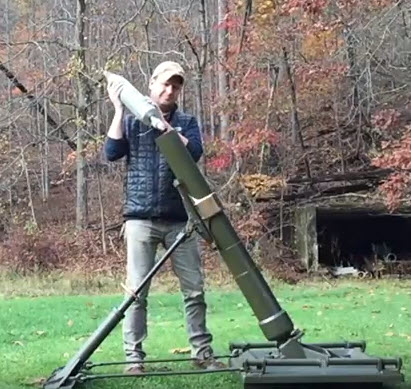
Moving up in size and weight, we fired the 81 mm M1 mortar next, but the space constraints at Beaver Valley Rifle and Pistol Club prevented us from realizing that weapon’s full range potential. With a full increment charge and a 6.87-pound M43A2 high explosive round, the M1 mortar could hit a target almost 3,300 yards away, giving it a significant range advantage over the 60mm M2 mortar. Using a minimum propellant charge, we were able to keep all of our 8-pound, 81 mm projectiles in one area but they still dug deeper into the ground than the lighter 60mm projectiles did. The M1’s greater capabilities come with a cost though: greater weight. With a 44.5-pound tube, a 46.5-pound mount, and a 45-pound base plate, the total package is almost 100-pounds heavier than the 60mm mortar.
Despite its weight though, the 81mm mortar was an important part of the Table of Organization and Equipment of U.S. Army and U.S. Marine Corps maneuver battalions throughout World War II. It was even a tool used by airborne units, and was dropped in parachute bundles during Operations Neptune, Market Garden, and Varsity. Ground combat units appreciated the 81mm mortar because of its mobile and hard-hitting qualities, and that is why it occupied a prominent place in the arsenal of American fighting forces during the Second World War.
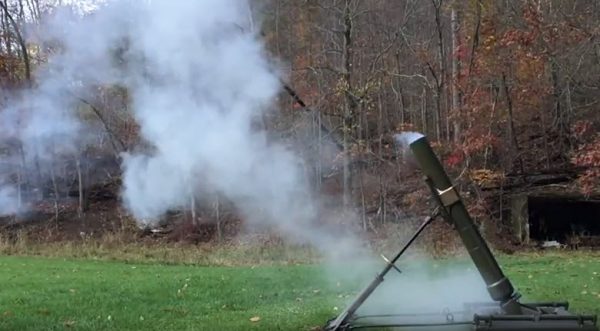
Last but not least, we fired the mighty 4.2-inch M2 chemical mortar. Developed before World War II as a means of delivering toxic agents (thus the name “chemical mortar”), the U.S. Army Chemical Weapons Service eventually turned the 4.2 into a weapon capable of delivering high-explosive fire. But TNT, and Mustard Gas rounds were not on the menu for our live fire exercise, so M335A2 Illuminating Rounds were used instead. Weighing 17-pounds each, they tumbled through the air like parabolic watermelons and half-buried themselves in the mud at the very edge of the designated long-range lane. While convenient for our purposes, the M335A2 rounds need the weight of the illuminating chemicals in them to stabilize in flight. The ones we fired that day were inert and (therefore) empty, so there was only so much the barrel could do.
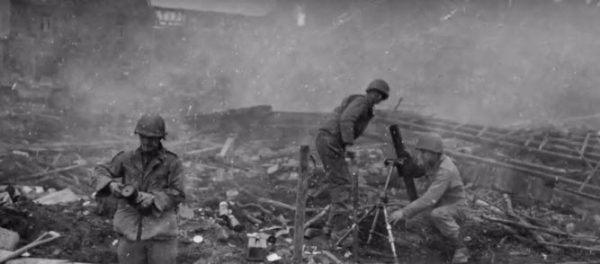
Unlike the 60mm and the 81mm mortars, the “four deuce” uses a rifled barrel to stabilize its projectiles in flight, and those projectiles engage that rifling through the use of a brass obturating plate. While the barrel did its job with no problem and the rounds caught the rifling as they were designed to, after leaving the tube’s muzzle at 700 feet per second they gradually lost their stability and started to tumble. Still, it was lots of fun throwing them skyward in an offering to the spirit of Saint Barbara. Once again though, we had to generate as little range as possible, which was not an insignificant challenge with the “four deuce.” That weapon can throw a round out to 4,400 yards (2.5 miles) and we had only 300 yards to play with, so we were barely scratching the surface of what that tube could do.
Weighing-in at 333-pounds overall, the “four deuce” is a beast of a weapon. Just to put this in perspective, it weighs the same as eight 60mm mortars or two and a half 81mm mortars. It’s base plate alone weighs as much as I do, which only became an issue when we had to carry it up the stairs from Brian’s basement to get it to his truck. Every bit of that effort was worthwhile though because it offered a priceless opportunity to appreciate the difficulty of manhandling this weapon that contributed so meaningfully to allied victory in World War II. The 4.2-inch mortar fought for the first time in the Sicily campaign in 1943 during which it fired over 35,000 rounds in 38-days. It then went-on to fight it’s way across difficult terrain in Europe and islands in the Pacific.
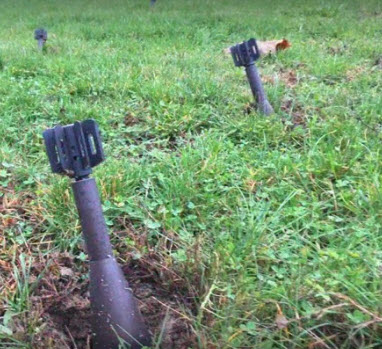
The Army used it, the Marine Corps used it, and even the U.S. Navy used it on landing craft converted into mortar gunboats under the designation LCI(M). Though it never delivered a gas attack in combat, it did put down vast quantities of TNT and smoke during World War II and again during the war in Korea. Having the chance to shoot the “four deuce” – alongside its 60 mm and 81 mm cousins – provided the kind of visceral and tactile experience that I value because it helps bring another element of the story of World War II into sharper focus.
The post U.S. Mortars of World War II appeared first on World War Media.
]]>The post Tank Training Site in England appeared first on World War Media.
]]>Fritton Lake and the surrounding land was used by the 79th Armoured Division as a training and experimental site from 1943 through to 1947. It was used to secretly develop techniques and to instruct tank crews in the operation of amphibious tanks, known as Duplex Drive or DD Tanks, primarily for use in the allied invasion of France during World War 2.
by Stuart Burgess
It originally consisted of an accommodation area, workshop and maintenance buildings, dummy landing craft slipways, specific training structures, a large tank park and numerous tracks and roadways linking the various components.
Due to the secret nature of this establishment relatively little is known about its layout and operation. Following its decommissioning, the site was cleared and the majority of above ground structures demolished. Despite this, significant evidence is preserved at this site in the form of foundations, floor slabs, track ways, and areas of hard-standing as well as the structural remains of the landing craft slipways. There is also at least one extant building with significant portions of a second standing nearby. Many of these remains are relatively slight and are in danger of being destroyed or simply being lost. To mitigate against this and as an aid to further the understanding of this site, a survey of all the known extant remains was carried out. The main the aim of the survey was to produce a plan of the training establishment and to undertake a basic descriptive record of the remains.
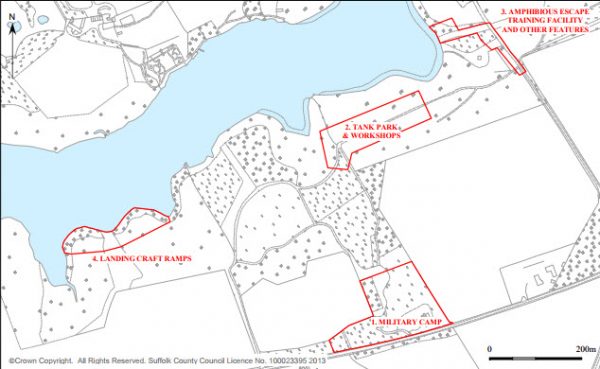
The area around Fritton Lake, situated in the Suffolk parish of Somerleyton, Ashby and Herringfleet (formerly three separate parishes, now a single entity), was used by the 79th Armoured Division of the British Army, during the 1940’s, for the development of amphibious tanks and as a training establishment for crews to familiarize themselves with their use. The main drive behind the training program was the proposed D-Day landings, which comprised a significant part of the Allied invasion of Europe leading to the end of World War Two. The amphibious tanks were known as DD Tanks, which stood for ‘Duplex Drive’ and was a reference to the tank’s twin drive system needed to incorporate propellers for use when floating. The act of using the tank on water was known as ‘swimming’ and they were often confusingly referred to as ‘swimming tanks’.
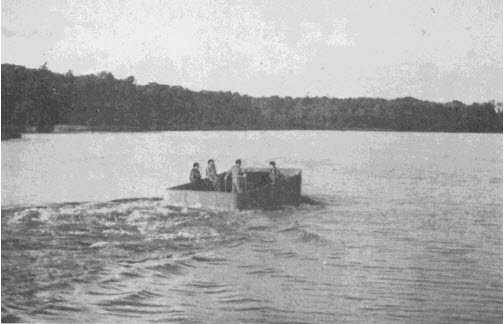
The site was in use until 1947 after which it was dismantled and the site returned to the original owners. Part of what had been an area of accommodation for men based at the site, including at least two extant buildings, was leased to the Scouting Organisation for use as a Scout Camp. The remainder of the land was restored and replanted as cover for game birds or returned to forestry. The entire site then lay undisturbed and virtually forgotten until the early part of the 21st century when the then Country Park Manger of the Somerleyton Estate, Stuart Burgess, recognized that significant components of the camp survived within the woodland on the south side of the lake and undertook a program of personal research and investigation into the site’s history with the ultimate aim of bringing recognition to the site’s historical
significance and to further understanding of the important role it played in World War Two. Although numerous remains are present scattered across the area, no attempts to assess the extent of the site’s survival had been undertaken. In order to rectify this, funding was obtained from the European Interreg IV A Project to undertake a basic survey of the extant remains.
Valentine and Sherman Tanks were adapted to make them amphibious, so that they could “swim” to shore and provide close fire support to the first wave of troops landing on enemy beaches. These tanks were part of a series of tanks that had been modified to do something more than just fight in the regular way, and were collectively known as “funnies”. The Lake became a significant training facility in 1943 and went on to train in excess of 2000 men prior to D Day and a further 500 after D Day. The DD tanks and their crews proved themselves as key and effective weapons for the D Day Landings, and as such became versatile in subsequent European Operations associated with Estuary and River crossing.
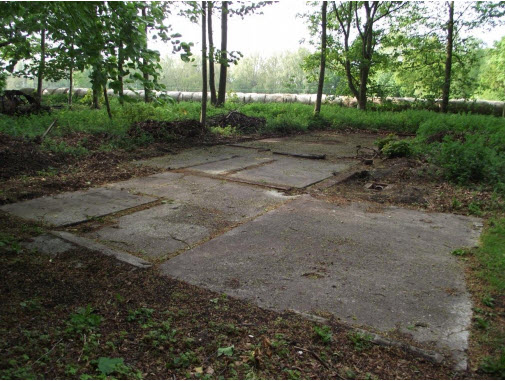
The significance of the Freshwater Training Wing cannot be underestimated in relation to the development of the Duplex Drive Tanks. Its archaeology concerns the Military Camp and functional infrastructure associated with the provision of elementary training, tactical development, amphibious tank escape as well as post war experimentation and trials. The 60 acre site is well preserved, with surviving features such as a tank park, contemporary Landing Craft slipways, subterranean structures and the footings of a large number of huts, stores and other buildings connected with the workshop and maintenance facility.
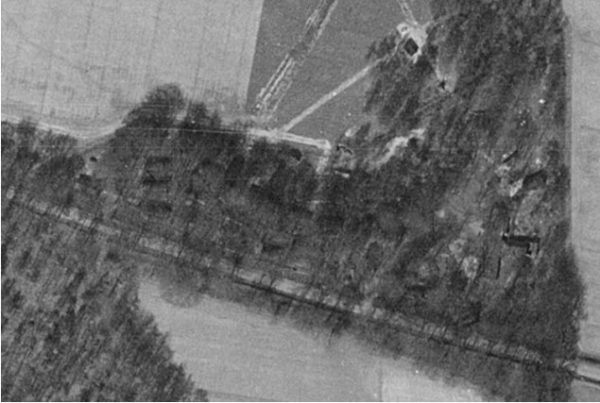
Two regiments – the 15th/ 19th Hussars and the Staffordshire Yeomanry undertook training at Fritton in preparation for their role in crossing European rivers with the DDs. As it transpires only the Staffordshire Regiment eventually undertook River Crossing Training at a special wing at Burton upon Stather, before undertaking European Operations with their DD tanks. During these operations it became evident that the heavy Sherman DDs encountered difficulties exiting the soft silty riverbanks, and to this end Fritton – as well as Burton upon Stather – assumed a secondary role – that of overcoming river obstacles. Additionally at this time, the 79th Armoured Division were being replaced by the Assault Training and Development Centre (ATDC). Research and trails continued at Fritton for a further 18 months under ATDC, before they were replaced by SADE – Specialised Armour Development Establishment.
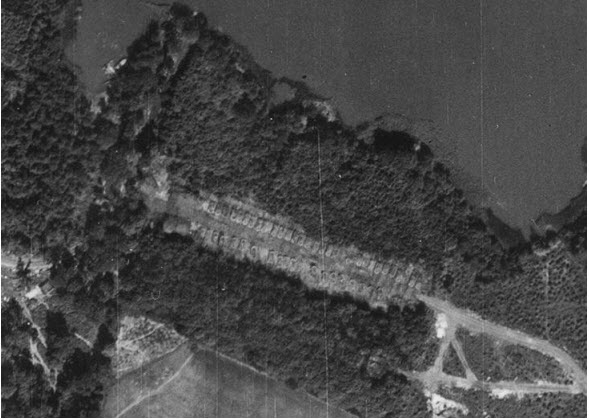
Training continued at Fritton under SADE until 1947, where upon swimming tanks were becoming larger and more impractical to be launched at sea. A facility continued at Gosport for a number of years, and by 1951 that too was eventually closed. Infrastructure at Fritton was removed by 1950 and the woods and lake returned to the Estate. Part of the military camp was leased out to the Scouting Organisation, and the remainder of the land was replanted as cover for game birds and forestry.
Thus Duplex Drive Tank Development came to an end. Its role on D Day was a unique and significant. As a weapon hurriedly devised and tested during WWII it proved its effectiveness as a dual purpose vehicle. Every credit should go to the men who developed, trained and ultimately operated these tanks, many of whom were present at Fritton Lake from 1943-1947.
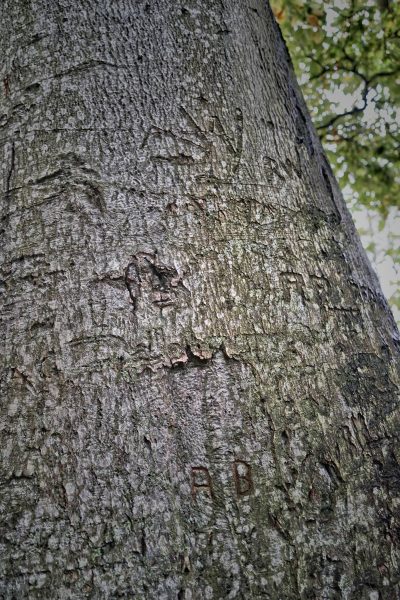
Photo by Jo Segers
The post Tank Training Site in England appeared first on World War Media.
]]>The post From Gliders To The Bois Jacques appeared first on World War Media.
]]>It’s a grainy, relatively unknown photograph of a bunch of dirty, unshaven soldiers standing around a makeshift Christmas tree in the middle of a snowy field. Taken “somewhere near Bastogne”, little else was known about who was depicted and how they came to be in that field. But slowly, the story behind the picture started to come together after a sizeable amount of research and bit of consultation. The men featured were members of the 81 mm Mortar Platoon, Headquarters Company, 2nd Battalion, 506th Parachute Infantry Regiment, 101st Airborne Division, and the man that became the linchpin to the story behind the photo was Hugh “Ben” Rous. This is the winding journey of Ben in World War II.
Ben, a native of Avery, Idaho, was scooped up by the draft like a lot of men after the attack on Pearl Harbor. “The Adams County draft board ordered me to go to Milwaukee for examination on Dec. 3, 1942. I went along with a bus-load and since I was still breathing, passed the ‘physical’ exam and was put on class 1-A.” After initial processing at Ft. Sheridan, Illinois, Ben was sent to Ft. Bragg, North Carolina, to join the 82nd Airborne Division’s 326th Glider Infantry Regiment.
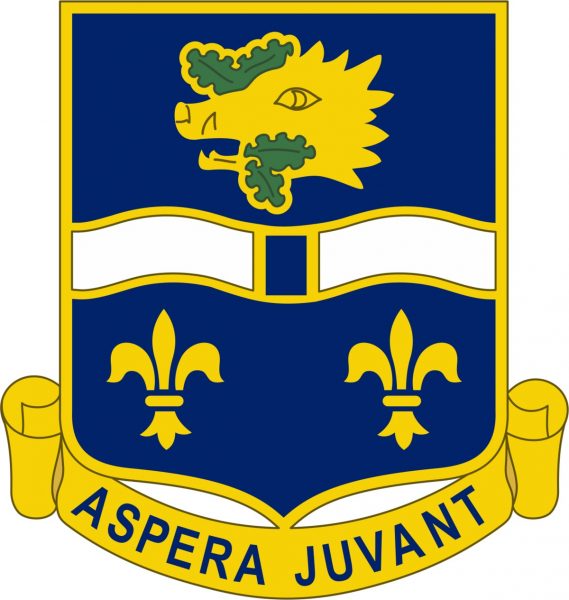
Ben completed his basic training at Ft. Bragg, and afterwards, he and the other members of the 326th were transported by train to Alliance, Nebraska for another grueling round of training. While in Alliance, Ben was assigned to an 81 mm mortar platoon and repetition became the platoon’s the catchphrase. “We took the gunner’s tests and observers tests time after time. We also took many, many glider rides.” As they trained, the men couldn’t help but notice that the rate of attrition for young officers was quite high, with 2nd lieutenants seemingly arriving and leaving almost the same day. As a result, Ben and his fellow glider riders often joked that the purpose of their training was to “train officers.”
After training stints back at Ft. Bragg and then at Camp Mackall, the 326th readied itself for movement to England. Many senior Allied leaders feared that there would extensive casualties among the parachute units during the invasion of Normandy and felt it was necessary to reinforce those units. As a result, many of the 326th troopers received transfer orders to paratroop units once they arrived in England.
While Ben wasn’t one of those transferred, he eventually volunteered for the paratroops as well. “Our willingness was immediately seized upon and off we went to Jump School (in England)!” After completing the training Ben received his Parachute Wings. “Along with being (awarded) one of the most prestigious badges in the services, I started collecting the famous “Jump-Pay” of an extra $50.00 a month for hazardous duty… we had gotten out of the “flying coffins” (and we were) happy to be in that special group. We wore our new “Wings” very proudly,” said Ben.
Ben received orders assigning him to Company E, 506th PIR. After arriving at their billeting area of Nissen Huts and horse stables, he reported to the company commander, Captain Richard Winters. The youngish looking captain, in reviewing Ben’s service jacket, noticed that he had qualified expert on the 81 mm mortar. “He asked me if I preferred being in a mortar platoon. My thinly restrained reply was, “Sir, if you had trained constantly for 18 months in 81‘s where do you think you would prefer to be?’ His reply was, I’ll talk to the Hq. Co. Commander, and if he needs a mortar-man, I’ll transfer you”. It would not be the last time he would serve under Captain Winters.
“So with that (transfer) I had found a “home” in the Hq. Co. 2nd Bn., doing the things I had spent all my time up to now training for…I also learned some combat tricks from these seasoned troopers…the few survivors from Normandy’s battles!” Being several years older than the majority of his fellow troopers as well as married, the men quickly took to calling Ben, “Pop”.
With Ben firmly entrenched in the 81 Mortar Platoon, alerts quickly arrived for the unit to take part in several combat jumps in France. “We actually got sent to Airfield Marshaling areas and scheduled for missions 3 different times. Each time the mission got canceled just before we took off. One time we were totally loaded in the planes, with motors revving up just as the call came down that Patton had already taken the area we were scheduled to jump on and the mission was canceled! What a letdown and big relief in a way all at the same time.”
The letdown wouldn’t last long for Ben. On 17 September 1944, the alert became real. The men would jump into Holland as part of Operation Market-Garden. During the approach to the drop zone, Ben’s C-47 took quite a bit of ground fire. One round hit the starboard wing tip, causing the aircraft to pitch to that side. This threw Ben and the other paratroopers away from the jump door. They struggled to move to the door and literally had to throw themselves out.
Ben’s ‘adventure’ did not end there. He descended rapidly due to his weight and the weight of his attached equipment. That caused him to fall into the top of an orange parachute carrying an equipment buddle. With his heart racing, Ben hurriedly ‘walked’ off the chute and continued his descent. Even his landing ended up giving him trouble. When Ben made contact with terra firma, the butt stock of his M1 Garand rose up and socked him in the chin. He had a sore jaw but at least he was on the ground and in one piece. As he dusted himself off and adjusted his equipment, Ben heard German 88’s firing in the distance.
The sound of those big guns signaled the start of a campaign that began with a number of moves and counter moves as the 506th attempted to keep their portion of Hell’s Highway open for business. The men found themselves marching off like firemen attempting to put out house fires, only to be ordered off to another location to close off German penetrations in a different portion of the highway. During one 24 hour, seesaw period, Ben had three different rifles destroyed by enemy fire and each time he obtained a replacement from a wounded or dead paratrooper.
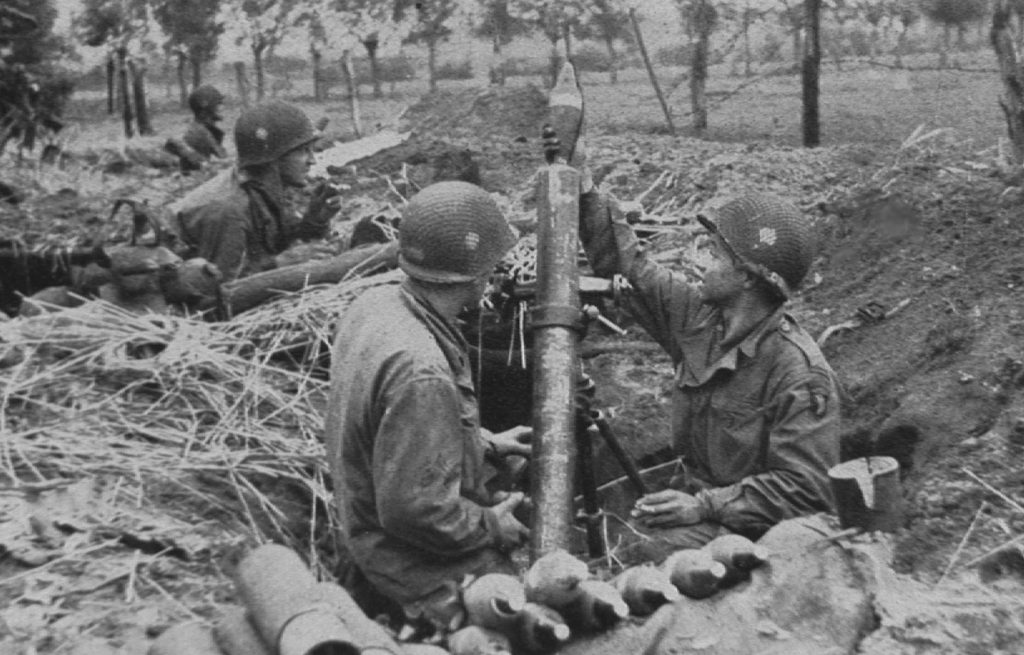
Finally the seesaw fighting ceased as 2nd Battalion was ordered to The Island. Ben would spend the remainder of his time in Holland firing his mortar in support of the line companies while alternately bailing the water out of his mortar pit. While the conditions were miserable, Ben always remembered the kindness of the Dutch people, especially their willingness to share their meager rations with him and his fellow paratroopers. One of his fondest souvenirs from Market-Garden was a small Dutch flag given to him by a young mother as they approached Eindhoven. He kept that flag right next to a swatch of his parachute that he had cut out after landing. After seventy-six days on the line, Ben and the rest of the 506th, was pulled back to Mourmelon, France to rest and refit. The respite did not last long.
Ben and his buddies had barely spent twenty days in Mourmelon when the alert came. They had been dreaming of passes to Paris and the upcoming Turkey dinner that would undoubtedly accompany the arrival of Christmas. But it was all for naught. His platoon sergeant told them to gather their gear and be prepared to move out. “Grab whatever you can because I don’t know when we’ll be resupplied. “But Sarge, the ‘81’ is still at the armory for maintenance!” It didn’t matter, he said. Orders were orders and the man giving those orders was none other than his former company commander, Captain Richard Winters.
Ben and the other members of his platoon rummaged through their duffel and barracks bags, hoping to find a stray clip of ammo, grenade or K ration. Pockets were stuffed with extra socks. They were critically short of ammunition for their mortar, winter clothing and many other supplies. As they mustered outside the barracks near the cattle cars that would carry them into battle, the men came to the stark realization that they had about five rounds of rifle ammunition per man. This was hardly the ideal way to head into a combat situation.
As they drove through the night, the situation was not lost on Ben and his fellow mortar-men. Thankfully, all hope was not lost due to a bit of happenstance. “The picture was totally bleak already and we hadn’t quite arrived yet! The bright spot, the ONLY bright spot, was that as we went along sometime during the trip, we passed an abandoned jeep with a load of rifle and machine gun ammunition. We finally got some of the precious ammo we needed.”
Sometime after dark, the convoy arrived outside the small Belgian town of Bastogne. They had stood in the back of the cattle cars, huddled together to share body heat, but by the time they arrived the men were cold and stiff from the long, frigid trip. As they attempted to regain feeling in their arms and legs, Ben and the others were ordered to form up into columns. They proceeded to walk towards an open field where they were ordered to dig defensive positions.
The next morning, the battalion was ordered to move into a wooded area that they would come to know all too well over the next few weeks. The name of that forest was Jack’s Woods or the Bois Jacques. Once again, Ben and the others found themselves digging in. “Why the hell are we digging mortar pits when we ain’t got no mortar?”, one of Ben’s platoon mates complained. “Don’t worry…they’ll catch up to us…hopefully before the Krauts come-a-callin’,” was the reply. Hours later, a jeep pulled up bearing their mortar and some ammunition. They were back in business.
On December 23rd, the men received a welcome present…an airdrop of supplies. “The sun broke through and Glory-be, the damn sky was FULL of Allied/American supply aircraft! What a relief! Oh! It was a gorgeous and thrilling thing to stand there in the cold and snow up to your “you-know (what)” and see the equipment bundles full of food, ammunition and at last some winter clothing etc., tumbling out of the planes, the chutes billowing out and their loads whomping down in to the snow.”
In addition to ammunition, food and medical supplies, the men received the gift of warm feet. “As we retrieved the bundles, first we cut up the bag material and wrapped our feet in it, to help keep our feet warm. Then we proceeded to take care of the supplies and ammunition we so sorely needed. How great it was to have warm feet!”
The following day, according to Ben, the German artillery had been quiet and as a result, the men of the platoon decided to celebrate Christmas by trimming a tree. They scrambled to find anything with color…scraps from colored supply parachutes, but mostly they decorated it with strings of foil chaff that had been dropped by friendly aircraft to fool German radar. “Then we put some full and empty ration boxes to represent our presents under the tree. We even used a couple of live mortar shells! For a brief few moments on Christmas each of us was at home with loved ones! At least in our minds!”
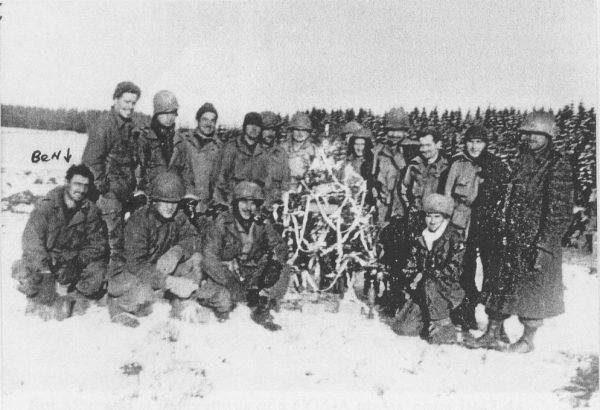
Once word spread of their tree, Regimental Headquarters sent a photographer down to take their picture. The platoon gathered around the tree, with Ben kneeling at the far left. The other men featured in the photo were: (Kneeling, left to right) PFC Hugh B. “Ben” Rous, PFC Wilford J. Grant, PVT Stanley L. Hagerman, T/5 James G. “Jim” O’Leary, (Standing, left to right) PFC John C. Joyal, SGT Wyndell E. Russell, S/SGT Charles L. Roeser, PFC Darce K. Hardin, PFC Nicholas J. “Nick” Blahon, Joe MacKorn, K. Chidden, S/SGT Norman A. Jorgensen, PFC Lincoln F. Keeler Jr., PFC Joe C. Trujillo, PFC Harry A. Gibson, PFC Steve Mihok, unknown Reg HQ man.
After all the excitement of the photo opportunity had died down, the platoon got back to their ‘normal’ routine in the woods. They fired in support of several patrol actions for the next 10 or so days until they received the order that they would be moving out. After Company E and elements of 3rd Battalion cleared the town of Foy, Ben and the mortar platoon moved up towards the town of Noville.
“We had started to dig a mortar emplacement and some foxholes. Suddenly I dove into my foxhole going in headfirst. I don’t recall ever going in head first before, but it was lucky I did because I caught a fragment from a “screaming meemie” right through my calf of my leg. Later it was described as a two and one half inch by six and one half inch wound! I recall thinking that it was a good thing I had gone in head first…what if my neck had been sticking up there?”
Ben’s quick-thinking sergeant, a man named Leland Peterson, got on a field phone and called for a medical jeep to come and evacuate his stricken mortar-man. “We hadn’t seen a vehicle for days it seemed. Suddenly there it was! Ready to evacuate me to Bastogne proper which was only two miles way. Later on I was moved to an evacuation hospital near Paris. Finally, I had my pass to Paris and dang it, here I was with only one good leg! Oh, the cruelty of war!”
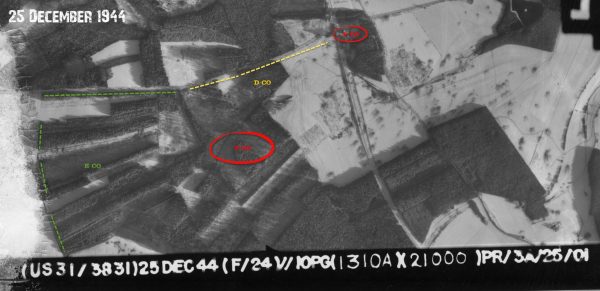
Ben’s stay in the hospital took him from Bastogne, to Paris and then to England on January 21st. He boarded a ship in late April 1945 and by May 13th, he was back in the States. Ben Rous had come a long way to get home. Throughout it all he kept a smile on his face and that smile can still be seen in a relatively obscure photo of a group of dirty soldiers gathered around a Christmas tree in the snow.
Ben Rous passed away in 2007 and was active in both the 82nd Airborne Division and 101st Airborne Division association’s right up until his death. He was buried with full military honors.
The post From Gliders To The Bois Jacques appeared first on World War Media.
]]>The post Dunkirk From The Air appeared first on World War Media.
]]>By May 26 1940, around 250,000 British troops, the rump of what remained of the British Expeditionary Force (BEF), were surrounded in the French port of Dunkirk and being mercilessly attacked by Göring’s Stuka dive-bombers. From the air it seemed that the nearby beaches swarmed with a huge army of ants that rippled with fear as German pilots made strafing runs.
By Alex Kershaw, author of The Bedford Boys, The Longest Winter, Avenue of Spies, The Liberator.
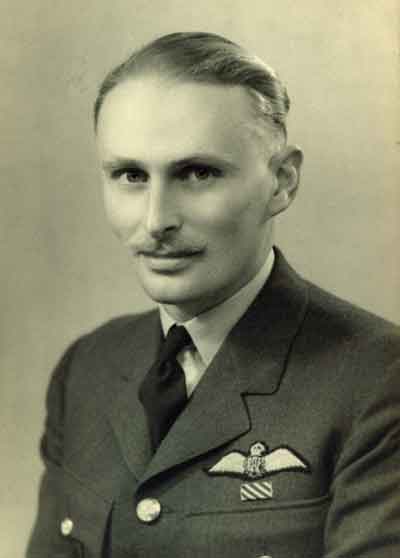
Flight Lieutenant Frank Howell, RAF 609 Squadron.
The mood was grim, both on the sand dunes where starving, exhausted Tommies waited for rescue, and in London, where even in Churchill’s War Cabinet there was talk of a compromise peace with Hitler. Churchill ended all such defeatist sentiment, telling his cabinet in an emotionally charged meeting on May 28: “I am convinced that every one of you would rise up and tear me down from my place if I were for one moment to contemplate parley or surrender. If this long island story of ours is to come to an end at last, let it end only when each of us lies choking in his own blood upon the ground.”
Churchill’s defiance was met with cheers and hurrahs. It was clear that he now had every one of his cabinet firmly on his side. “Quite a number,” he recalled, “seemed to jump from the table and come running to my chair, shouting and patting me on the back . . . had I at this juncture faltered at all in leading the nation I should have been hurled out of office. I am sure that every Minister was ready to be killed quite soon, and have all his family and possessions destroyed, rather than give in.”
Just as the cabinet had rallied to Churchill, so would the nation. But first, something had to be salvaged from the disaster unfolding at Dunkirk. Senior commanders hoped that perhaps thirty thousand men, a fraction of the British Expeditionary Force, might be saved. In London, Ambassador Kennedy added his own assessment to the general air of doom, cabling President Roosevelt that: “Only a miracle can save the BEF from being wiped out or, as I said yesterday, surrender . . . the English people, while they suspect a terrible situation, really do not realize how bad it is. When they do I don’t know what group they will follow, the do or die or the group that wants a settlement.”
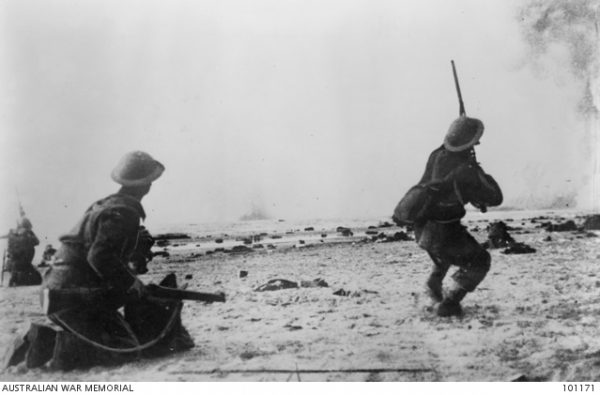
But all was not yet lost. The seafaring nation was beginning to respond to a call for all available vessels to make the hazardous Channel crossing and evacuate men from the bloodstained beaches. All manner of craft, from private dinghies to Thames tugboats, were headed toward Dunkirk. Above the beaches, Fighter Command’s Spitfire and Hurricane squadrons were also now in action, fighting with unprecedented aggression, many of their pilots furious at the sight of their countrymen being mowed down as they waded in long snaking lines toward rescue boats. Even veteran Luftwaffe pilots, who had readily strafed columns of refugees in Spain and destroyed Guernica, soon began to sicken of the slaughter. For twenty-four-year-old Captain Paul Temme, flying at three hundred feet above his victims, it was “just unadulterated killing. The beaches were jammed full of soldiers. I went up and down ‘hose-piping.’ It was cold-blooded point-blank murder.”
The fighting over Dunkirk would be a prelude to the Battle of Britain, and the Luftwaffe and the RAF took careful measure of each other. For the first time, the Germans encountered the full force of Fighter Command, and it was soon clear that the RAF’s Spitfires and Hurricanes were just as lethal as the Messerschmitt Me-109, the Germans’ best fighter. Another thing was quickly obvious: the British pilots were as well disciplined and courageous as their foe in the air, confirming the warning of influential First World War veteran Theo Osterkamp: “Now we fight ‘The Lords,’ and that is something else again. They are hard fighters and they are good fighters.”
For many RAF pilots, Dunkirk was a chaotic and brutal baptism of fire. “The Me-109s were quicksilver,” recalled one squadron leader. “It would have been ideal to come against them as a controlled formation, but the Germans always split up, so somehow you did, too. Then it was every man for himself—which was all right if you were good.” Thankfully, some were very good indeed. They included twenty-eight-year-old Flight Lieutenant Frank Howell of 609 West Riding Squadron, a strikingly handsome, blond-haired former mechanic who, on June 1, 1940, was appointed a flight leader after two days of fierce combat.
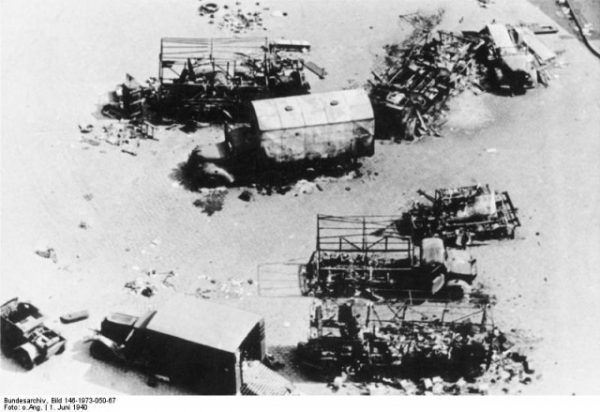
In a remarkable letter to his brother, Howell provided a vivid account of what it was like to fly above the hell of Dunkirk: “The place was still burning furiously, a great pall of smoke stretching 7,000 feet in the sky over Belgium . . Thousands and thousands of A/A [anti-aircraft] shells were bursting over the town . . . I looked down to see salvo after salvo of bombs bursting with terrific splashes in the water near some shipping, and there was a Heinkel, only 500 feet below going in the opposite direction so I did a half roll, and came up its arse, giving it a pretty 2 seconds fire . . . All the way back to England I flew full throttle at about 15 feet above the water and the shipping between England and Dunkirk was a sight worth seeing. Paddle boats, destroyers, sloops, tugs, fishing trawlers, river launches . . . anything with a motor towing anything without one . . . I am indeed lucky to have got away scot free. Dizzy was killed and five other chaps are missing. One was my flight commander so I am now in charge of A Flight, and will get another stripe, and it’s a rotten way to get it.”
On June 1, Winston Churchill was back in Paris, again trying to rally the French and sharing with them the heartening news that more than 165,000 troops had been pulled off the beaches at Dunkirk. Distressingly, his exhortations to fight on to the very end appeared to fall on deaf ears. Churchill’s escort from Paris back to England was to be provided by 601 Squadron, otherwise known as the Millionaires’ Squadron because several of its pilots came from wealthy families. “Winston was ebullient as ever,” recalled an aide. “When we started back he insisted on pacing round the aerodrome to review [601’s] nine Hurricanes, tramping through the tall grass in the flurry of propellers with his cigar like a pennant.”
British Major General Sir Edward Spears remembered “nine fighter planes drawn up in a wide semi-circle around the Prime Minister’s Flamingo . . . Churchill walked toward the machines, grinning, waving his stick, saying a word or two to each pilot as he went from one to the other, and, as I watched their faces light up and smile in answer to his, I thought they looked like the angels of my childhood. These men may have been naturally handsome, but that morning they were far more than that, creatures of an essence that was not of our world: their expressions of happy confidence as they got ready to ascend into their element, the sky, left me inspired, awed and earthbound.”
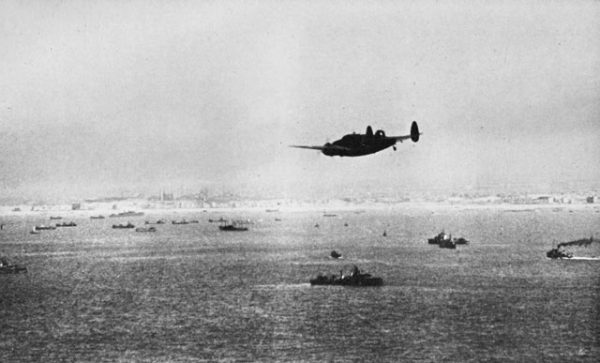
One of these angels, Flying Officer Gordon “Mouse” Cleaver, remembered that morning somewhat differently.13 The night before, the Millionaires had become rip-roaring drunk: “There assembled at Villacou-blay just about as hungover a crew of dirty, smelly, unshaven, unwashed fighter pilots as I doubt has ever been seen. Willie [Rhodes-Moorehouse] if I remember right was being sick behind his aeroplane, when the Great Man arrived and expressed a desire to meet the escort. We must have appeared vaguely human at least, as he seemed to accept our appearance without comment, and we took off for England.”14 By June 4, the evacuation of Dunkirk was officially over with an incredible 338,226 Allied troops removed from the beaches to England. Göring’s promise that “not a British soldier will escape” had been ludicrous. He had simply been “talking big again” as General Alfred Jodl, Chief of Hitler’s General Staff, was quick to point out.15 In a week of almost constant combat above Dunkirk, the RAF had shot down 132 German planes for a loss of 99 of its own fighters, 5 from Flight Leader Frank Howell’s 609 Squadron. It was a remarkable performance, or as Churchill described it to his War Cabinet, “a signal victory which gives cause for high hopes of our successes in the future.”
The British Expeditionary Force had been saved by some 693 boats of all sizes, many of them “little ships”—dinghies, pleasure yachts, skiffs, tugboats—a quarter of which were sunk. But now it had nothing to fight with. Almost all the BEF’s armor and weapons had been left behind, leaving England practically defenseless. The evacuation of Dunkirk could certainly not be described as a victory, but it was nevertheless a powerful tonic to both the British people and the rest of the free world.
The post Dunkirk From The Air appeared first on World War Media.
]]>The post The Modified M3 Grease Gun in WWII appeared first on World War Media.
]]>
The .45 caliber submachine gun M3 is often indicated as being a success story of small arms design and development during World War II. Born of the necessities and exigencies of a full national wartime mobilization, it is best known for the economy of scale it provided and the modesty of its manufacturing costs.
by Martin K A Morgan
At peak production, M3s were a bargain at $20.94 each – that’s less than half the cost of the cheaper, mass-production version of the Thompson submachine gun. Although low cost was a major factor in the M3’s success, so too was the speed of its development and adoption. The project went from a concept on paper, to the T20 prototype, to adoption and production within just seven months, a record that no other firearm in U.S. military history has ever challenged. When it went into production in May 1943 at GM’s Guide Lamp Division plant in Anderson, Indiana, the M3 was a reliable open-bolt submachine gun weighing just over eight pounds with a fully loaded 30-round detachable box magazine. It’s design made extensive use of sheet metal stampings to include the two halves of the receiver assembly, the trigger, the rear sight, and a crank handle on the right side of the gun used to retract the bolt before firing. The M3’s sheet metal construction made it lighter and cheaper to produce, and gave it an appearance resembling an auto mechanics grease gun. But sheet stampings also created one weakness that would soon reveal itself on the battlefield.
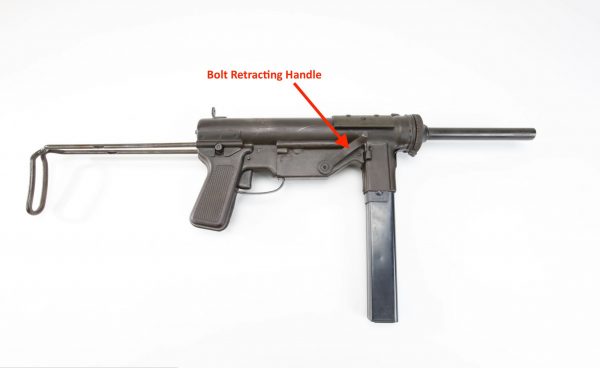
A right side view of M3 submachine gun #0061260 – an early pattern Grease Gun produced at GM’s Guide Lamp Division plant in Anderson, Indiana in 1943. The red arrow shows the delicate bolt retracting “crank handle” that created the need for a field modification. (Photo courtesy of the National Firearms Museum)
On Tuesday, June 6, 1944, U.S. troops used the M3 Grease Gun in action for the first time. During the weeks that followed, it fought a vigorous campaign stretching from Normandy through to the liberation of Paris and the push to the Siegfried Line. Soldiers carried it up hill and down valley through the adversity of dust, rain and, eventually, even the snow. They were beat-up as the troops climbed on and off of trucks, half-tracks, and tanks. While an M3 could survive being dropped on its left side without affecting its ability to function, dropping one on its right side was another matter entirely because that is where the weapon’s fragile sheet metal retracting handle was mounted to the trigger housing assembly.
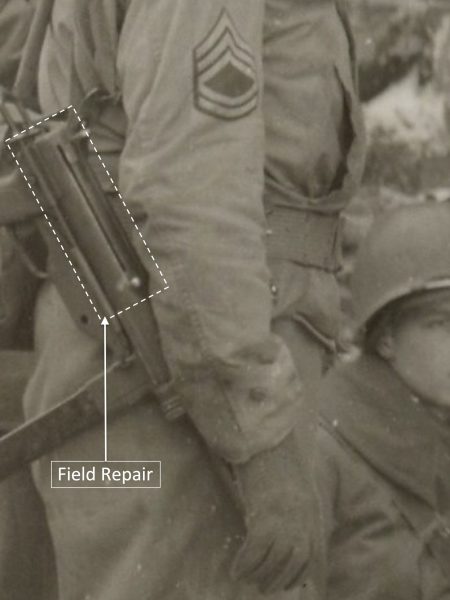
An officer in the headquarters of the 253rd Armored Field Artillery Battalion/6th Armored Division reads the “Articles of War” to his men on January 20, 1945 in the village of Mageret, Belgium three miles east of Bastogne. Note the Sergeant First Class at far left is armed with a field modified M3 submachine gun. (Official U.S. Army photograph)
On numerous occasions during the closing months of 1944, U.S. Army soldiers dropped M3 Grease Guns in such a way that they broke off crank handles. With no retracting mechanism, the bolt could not be drawn to the rear and, the weapon could not be used. At the time, the Army’s ordnance companies were ready to repair just about any infantry weapon in inventory, but not the brand new Grease Gun. In the rush to develop and the adopt the weapon, the potential for breakage of the inherently vulnerable crank handle was overlooked with the result that, when it finally began to happen in France after the D-Day, there was no prescribed method of repairing the problem and, more importantly, no spare parts. This meant that repairmen had to improvise and make due with what they had on hand.
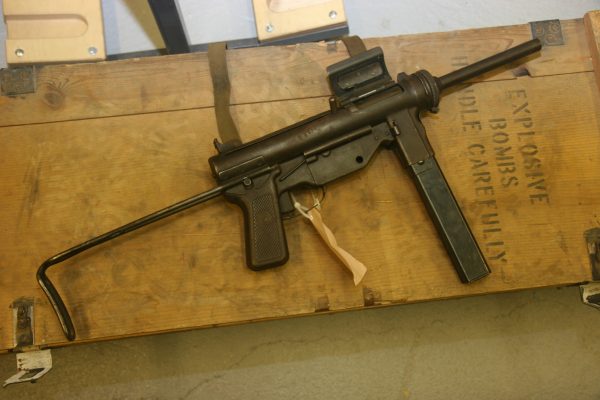
A field modified M3 submachine gun in the collection of Musée National d’Histoire Militaire (the National Military History Museum) in Diekirch, Luxembourg. The weapon’s crank handle has been removed, a slot has been cut in the receiver and a makeshift cocking handle has been added to the bolt.
The solution was straightforward and simple: ordnance company personnel started by removing what was left of the retracting handle assembly from each damaged weapon, then used an end mill to cut a seven-inch long slot into the right hand side of the receiver at the 2 o’clock position running from just behind the weapon’s ejection port. This accommodated a crudely hewn steel bolt handle that inserted through an enlarged opening at the forward end of the slot and entered a hole drilled into the back end of the bolt assembly. It was not a pretty repair, but it worked. A few archival photographs of men from General George Patton’s Third Army taken around the time of the Battle of the Bulge show Grease Guns repaired in this manner. In addition to that, the collection of Musée National d’Histoire Militaire (the National Military History Museum) in Diekirch, Luxembourg has in its collection five M3s that have received this field modification. Considering the fact that the Third Army operated in Luxembourg during and after the Battle of the Bulge, it looks like this field modification may have been confined to the ranks of that specific unit. Interestingly enough though, a product improvement was already in development back in the USA that would make this design shortcoming superfluous.
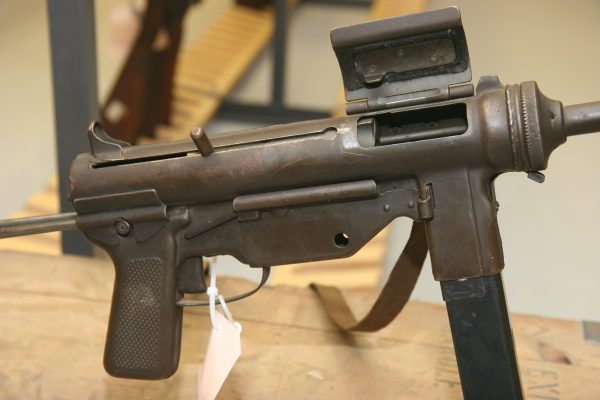
A field modified M3 submachine gun in the collection of Musée National d’Histoire Militaire (the National Military History Museum) in Diekirch, Luxembourg. The weapon’s crank handle has been removed, a slot has been cut in the receiver and a makeshift cocking handle has been added to the bolt.
As early as April 1944, Guide Lamp was working on the modified M3E1 submachine gun. In addition to a number of other design refinements, it featured the complete elimination of the M3’s crank handle assembly and its replacement with a simplified, and indestructible, finger hole in the bolt. The substantial weight of the M3’s bolt was such that the pressure exerted by the weapon’s dual mainsprings was only eighteen-pounds. This meant that the old crank handle apparatus was not just unnecessarily complex, it was unnecessary altogether because the physical effort of retracting the bolt could be managed comfortably by the shooter’s index finger alone. No lever device necessary. On December 21, 1944, the M3E1 was officially adopted as the .45-caliber submachine gun, M3A1 – coincidentally at the same time that field modified M3s were fighting the German onslaught 4,000 miles away in the Ardennes Forrest. Although the fragile crank handle issue was fully resolved with the introduction of the M3A1, the crude and yet perfectly functional field modification that it produced nevertheless says something complimentary about ordnance technicians during World War II. When confronted with a significant repair job on a new weapon with no replacement parts available, they had to adapt, adjust and overcome, and they had to do it quickly. It is a testament to the skill and know-how of these Army gunsmiths that they came up with a practical solution under less than ideal circumstances.
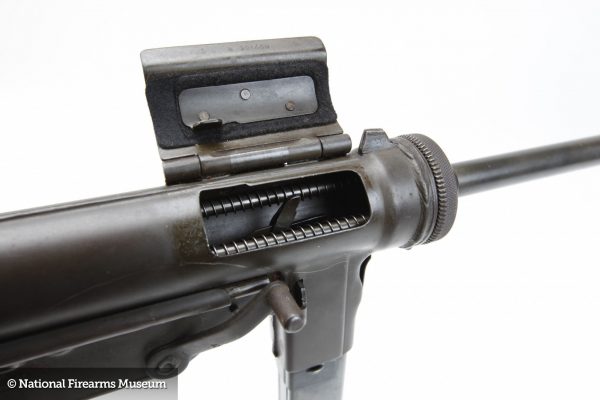
A close-up view of M3 submachine gun #0061260 showing its bolt retracting “crank handle” and ejection port. (Photo courtesy of the National Firearms Museum)
The post The Modified M3 Grease Gun in WWII appeared first on World War Media.
]]>The post In Silent Tribute appeared first on World War Media.
]]>IN SILENT TRIBUTE- Back in 2002 while writing Tonight We Die as Men (TWDAM) with Roger Day we described a plane crash on June 6, 1944, near a small isolated Norman farmhouse known as Les Rats situated one mile north of the wooden bridges at Brevands. The two bridges were the D-Day objectives of 3rd Battalion, 506th Parachute Infantry Regiment, 101st Airborne Division, who were the main subject matter of our now historic book.
By Ian Gardner- Author of Tonight we die as men, Deliver us from darkness, No victory in valhalla and Airborne: the combat story of Ed Shames
Time had dimmed the collective memories of our French and American veteran contributors but undaunted we persevered and eventually concluded that ‘our plane’ was probably a single-engine US fighter – possibly even a P-47 Thunderbolt. After we learned that a group of nomadic gypsies had cleared away the wreckage in the late 1940s we felt there was little point in any further investigation and besides it had no real synergy with our story at the bridges.
Following its release in 2009, TWDAM peaked the interest of British ex-pat Tony Graves, who after several visits to the long overgrown and now water-filled crater at Les Rats, gained permission from the French authorities and began a series of excavations that would span the next two years. The following summer Tony was shocked to discover that ‘our P-47’ was in fact a British Avro Lancaster, codenamed ND739Z belonging to 97 Squadron from the Royal Air Force. The Ministry of Defence (MOD) here in the UK still had the aircraft and crew listed as ‘missing’. It is also interesting to note that right from the outset the MOD were very much against Tony digging but were powerless to stop the exhumation of what they considered to be a potential war grave. However, by now Tony was on a mission to locate what might remain of the wreckage and with it hopefully the missing crew. It soon became apparent that ND739Z was no ordinary ‘Lanc’ nor was its pilot, Wing Commander Edward Carter and his seven crew members (one more than usual) who collectively were among the highest ranked and decorated in Bomber Command.
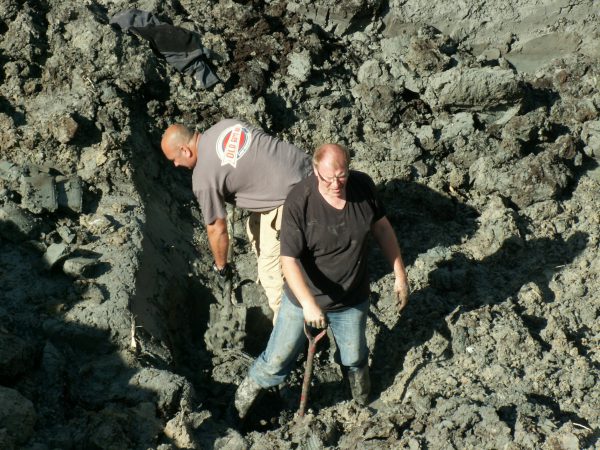
During the early morning hours of D-Day, 97 Squadron’s task was to bomb the German coastal artillery site at Pointe du Hoc. As lead aircraft, ND739Z was equipped with H2S, a highly specialised and secret ground scanning radar system, first introduced in 1943 (hence the need for an extra crewman). Ironically, unbeknown to the men or their RAF superiors, the guns at the Pointe had been moved to a nearby country lane overlooking Utah Beach and as such, the mission was already doomed to failure. Shortly before 5am, after successfully bombing the target, Carter and his squadron came under unexpected attack from a Focke Wolfe FW190, flown by Hauptmann Helmut Eberspächer. Leaving a trail of smoke and flames in their wake, Carter’s plane lit up the early morning skies off the Normandy coast before slamming vertically into the ground at Les Rats. Based near Tours and by pure chance Eberspächer just happened to be patrolling along the beaches when he spotted the Lancaster’s silhouetted above him. Within four minutes the German night fighter ace had brought down three British bombers including ND739Z.
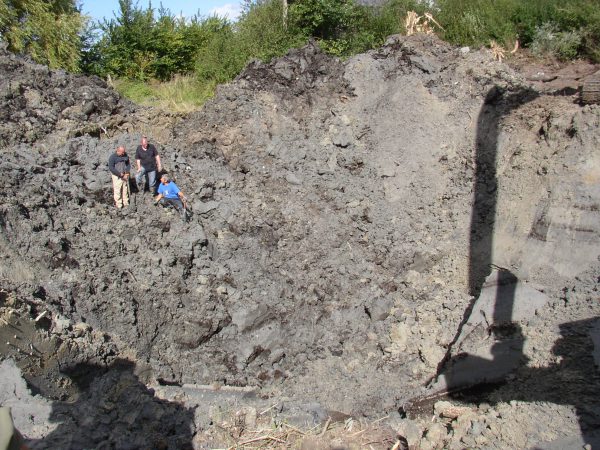
In late September 2012 Tony Graves invited me to join him and his team for what was to be their last and final dig at Les Rats. From a depth of around 30 feet, two Merlin engines, several tons of wreckage and a number of personal items came to the surface but bizarrely the remains of the crew were nowhere to be found? This led Tony and myself to speculate that any human remains had probably been removed and reburied by the gypsies who salvaged much of the shallow surface debris for scrap after the war. Tony kindly allowed me to take a souvenir back to the UK – a shattered piece of engine block complete with bolts, split pins and inspection stamps.
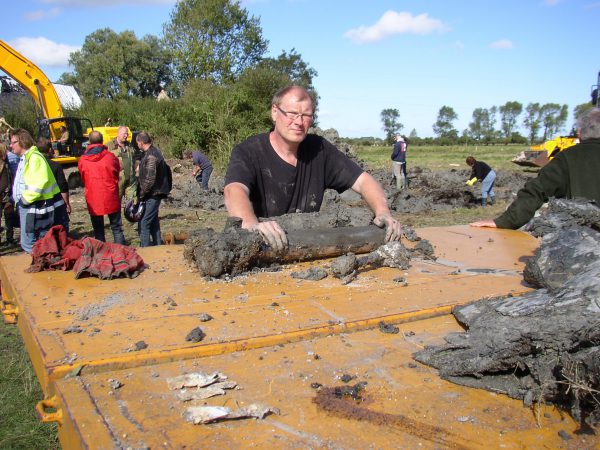
On October 4, 2012, my local newspaper The Camberley News and Mail published an article about the dig. A few days later I received an emotionally charged phone call from James Chapple, the journalist who had covered my story. James told me to sit down and then said, “Ian, you won’t believe this but I have just spoken to Keith Dunning, whose father Guy, was the Flight Engineer on that plane!”
Unbelievably Pilot Officer Guy Dunning had lived in Camberley (three miles from where I live now) before the war where he had met his wife Lillias. By an amazing twist of fate, Keith who was 18 months old when his dad was posted as missing now resides in the nearby town of Yateley – literally just around the corner from my mother Joan! The next week after his article was published as a follow up to mine, Keith showed me all of his dad’s letters (including his last) and explained that the attack on Pointe du Hoc was Guy’s 54th operational sortie and that in the April he had not only qualified as a Pathfinder but had also been commissioned and awarded The Distinguished Flying Medal. Sadly Keith’s mum Lillias, had died a few years before the crash site was discovered, always believed that her husband’s aircraft had come down in the English Channel. Strangely she felt that Guy had survived and held on to this unshakable belief until the late 1950s when she finally accepted the fact that her husband was never coming home.
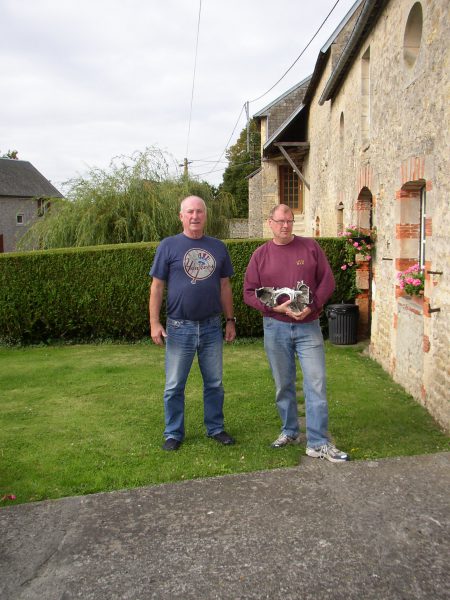
I donated my souvenir piece of engine wreckage to Keith and it now rests in his fireplace on a plinth in silent tribute to the father he never knew. This story is still unfinished and perhaps one day someone will stumble across the final resting place of Guy Dunning and his comrades – until then their names will remain on the Air Forces Memorial at Runnymede along with 20,276 other men and women who have no known grave.
The post In Silent Tribute appeared first on World War Media.
]]>The post Shooting a Vickers Machine Gun at 240 frames per second appeared first on World War Media.
]]>The Vickers machine gun has what is perhaps the greatest reputation among recoil operated belt-fed water-cooled machine guns. Adopted by the U.K. in 1912, it proved itself in the crucible of World War I trench warfare a superlative of ruggedness and reliability.
By Martin K.A. Morgan
In one notable example from the Battle of the Somme, the 100th Machine Gun Company was assigned the task of delivering a 12-hour barrage of sustained fire against German trenches 2,000 yards away. Ten Vickers machine guns were put to the task, and they opened fire during the afternoon of August 23, 1916. When the guns ceased fire the next day, they had expended just under one million rounds of .303 ammunition.
Each Vickers had ripped through almost 100,000 rounds with only occasional interruptions to change barrels. The fact that each of these 10 guns could sustain such an incredibly high volume of fire clearly indicated the asthonishing engineering strength of the Vickers machine gun system – a system that would serve U.K. forces for over five decades. Only a small fraternity of military firearms enjoys unquestioned esteem and admiration the way that the Vickers does. It carved its name into the military history of the 20th Century through decades of reliable service, and it continues to reaffirm its prodigious reputation here in the 21st Century.
During a recent day of shooting in southern Louisiana a 100 year old Vickers that was made at the Crayford Works just east of London was put to work firing brand new .303 ammunition made in Serbia by Prvi Partizan. Although it was not asked to fire 100,000 rounds in 12 hours, it nevertheless turned-in a predictably flawless performance, the proof of which can be seen in this video.
The post Shooting a Vickers Machine Gun at 240 frames per second appeared first on World War Media.
]]>The post The Escape Route of Joachim Peiper- Interactive appeared first on World War Media.
]]>“After daybreak cleared, Peiper pointed to a fir tree, sparkling brilliantly in the sun. “Major, he said with a sardonic smile, “the other night I promised you I would get you a tree for Christmas. There it is.”
By Ann Hamilton-Shields
I was hooked by those two sentences. The summer of 1984 flew by as I plowed through the Time/Life WWII series – but it was Peiper and the Battle of the Bulge that wouldn’t let me go. Who were these soldiers escaping through a snowy forest on Christmas day, 800 Germans with a lone American hostage? Thus began a 32 year fascination with Kampfgruppe Peiper’s 1944 breakout from La Gleize.
Skipping forward to 2004, I was a civilian nurse for the US Army living in Germany with my family. We had visited La Gleize a time or two and Peiper’s breakout pulled at me every time. But where to start? Out of the blue a friend sent me Major General Micheal Reynold’s article “Escape from the Cauldron”, prompting an avalanche of reading on the Bulge and more specifically, Jochen Peiper.
Over the years my amateur study of WWII blossomed. We attended veteran affairs, trekked through battlefields, toured museums, and became acquainted with the dedicated network of WWII experts in the European Theater.
Meeting author Danny Parker at a 2007 museum opening in Baugnez kicked off a new phase in my interest. We chatted: “So, you’re writing a bio of Peiper? He’s my favorite German bad boy – a paradox of good and evil.” The conversation flowed and a week later I was one of Danny’s many manuscript readers.
My role soon expanded into scouting and photographing locations from Peiper’s life. In Berlin, chasing Peiper’s history was not difficult: a flat in his Ruedesheimer Platz building, the building next door to his bombed-out childhood home, his elementary school, the Wansee yacht club (where I snuck in with help from the kitchen staff), his wedding and reception site, an apartment in the building where “Little Bunny” Potthast lived, and of course the Lichterfelde Barracks complex. The cooperation of the Berliners was astonishing.
In 2008, my husband and I arrived at the La Gleize museum after a day tracking Kampfgruppe Peiper’s route. Mr Gregoire walked me outside and pointed to the rocky trail where Peiper and his men slipped out of town. Twentyfour years had passed since I first read about MAJ McCown and Peiper – now it was time to put on the hiking boots.
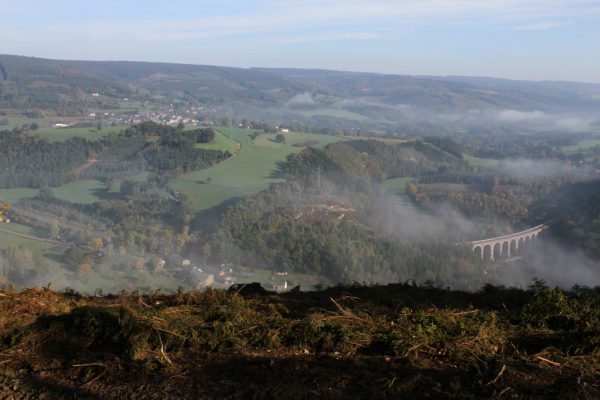
Danny Parker’s meticulous research provided the backbone for my numerous hikes. The lack of specific directions was frustrating until I realized the Germans themselves didn’t know exactly where they had walked during that grueling 36 hours. My early hikes (2009-2011) were solo endeavors as I scouted out each segment with a sweaty conglomeration of maps and documents, struggling to meet my worried husband at a pre-arranged time and place. I fought brambles, insects, blisters, mud – and the staff at Wanne chateau, where I was asked to leave!
In 2011 my worry about descending the steep face of Mt St Vincent alone was solved when I met Doug Mitchell. This ex-pat US Marine had what I didn’t: a military sense of tactics and terrain, excellent photographic skills, and fluent German. Add an affable spirit with well-used hiking boots and we were a pair. Tracking Peiper’s trail in its entirety was happening!
During the summer of 2012 Doug and I walked the breakout using our combined sources. I won’t go into the wrong turns and painful backtracks involved – and must mention that in true USMC fashion Doug didn’t complain! Major General Michael Reynolds graciously reviewed our work, including over 200 photographs, and pronounced it a match with the eyewitness reports he’d collected in the 1970’s from German vets.
Over the course of our research, many WWII history friends had expressed interest in walking the route of Peiper’s breakout. This idea became a reality in October 2012 as our hardy group left La Gleize on a fall morning, arriving in Wanne about eight and a half hours later. It was a fourteen mile day of ascents and descents, sun and rain, and “aha!” moments when sites recorded almost seventy years ago popped into view. There was no snow, no hunger, and no machine gun fire….just history under our boots, and the satisfaction of nailing down a mystery before it was too late.
The post The Escape Route of Joachim Peiper- Interactive appeared first on World War Media.
]]>The post Operation Stösser: Kampfgruppe Von der Heydte in the Ardennes (Part II) appeared first on World War Media.
]]>In picturesque Monschau– famous for its slate-roofed half-timbered houses– exhausted Fallschirmjäger desiring to surrender to U.S. forces sought out towns people. Better to give up to fellow Germans than risk being shot when surrendering to the enemy. This gained new import with rumors from the Latrinenparole that SS men– Kampgruppe Peiper– had murdered surrendering Americans just south of where they had landed. Between 21 and 24 December, over a hundred Fallschirmjäger gave themselves up to civilians in the town. “Sometimes we went out to take the paratroopers into custody,” remembered Paul Henze with its military government, “but usually we told the tactical troops of the MPs where the paratroopers were located and they went to pick them up. Nearly all were suffering from exposure and trench foot.”
by Danny S Parker author of FATAL CROSSROADS & HITLERS WARRIOR www.dannysparker.com
Also read Operation Stösser: Kampfgruppe Von der Heydte in the Ardennes (Part I)
The American military government officials knew nothing of the extent of the parachute operation– many estimating it to contain several thousand men that might suddenly rise up confront the unwary. The military government had made its headquarters in the Hotel Horchem– the finest of the twelve hotels in the town, disproportionately endowed as Monschau was a famous destination for honeymooners. Captain Robert A. Goetscheus, the head of the military government and a lawyer from Indianapolis, could not be too sure that his otherwise complacent citizens might suddenly revert to their previous sympathies.
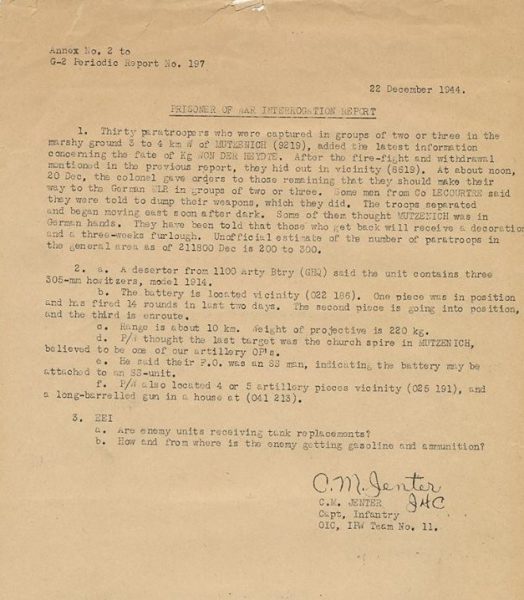
The relationship of the 2,600 natives of Monschau to the early occupation had been uneasy since the Americans had taken over in September. Food, medical supplies and clothing had been short all autumn and many citizens were bored, unable to freely come and go and limited by curfews. Several locals made the observation that the Nazi government had never been this oppressive. However, the worst had come in October when, the members of Combat Command B of the 5th Armored Division– whose commander was wildly anti-German– had suddenly forcibly evacuated all the residents of nearby Kalterherberg and proceeded to loot the town. Even in Monschau there was a huge problem with thievery, GIs making off with furniture, radios, stoves and even cars. Then too, the non-fraternization policy was a total failure and by November, every willing German woman in Monschau had been seduced.
For weeks, the U.S. V Corps worried that sympathizers in the town were feeding information to the Germans, but the local government did not dwell of that certainty– as it was, enemy forces– known to include the 272nd Volksgrenadier Division– were on the sharp ridge line that looked right down into the town’s narrow cobble-stone streets. They could see everything and sometimes would even send artillery cascading into the town. Indeed a 15-man German patrol came into the town on 1 October and threatened the Burgomeister at pistol point at his own home for cooperating with the Americans.
The danger of living with the enemy so close became clear to the American occupational forces on Saturday, 16 December. That morning Monschau and the towns on either side, became the northernmost objective for Dietrich’s 6. Panzer Armee assault charged to the LXVII Armeekorps. In the German plan, the Vorausabteilung– the single partly-motorized detachment of the 326. Volksgrenadier Division built around 4 assault guns and the fusilier company was to strike through Monschau and push along the Eupen road to possibly help link up with Kampfgruppe von der Heydte. The northern talon of the German assault would unhinge the American forces defending in the Elsenborn area. Hitler himself had personally called for a super-heavy Jagdtiger Battalion (s. Panzerjäger Abteilung 653) to be participate in the advance on Eüpen, but delayed by the air power-pulverized German rail system to the rear, the single available company of 80 ton monsters had not arrived on the eve of the offensive. Still, very heavy artillery support was assigned: 405.Volksartillerie Korps and the 17. Volkswerfer Brigade turned tubes to the west for a massive barrage to help blast the infantry companies forward.
However, word had it that Genfldm. Model, himself had expressly forbidden artillery fire on Monschau, the fairy-tale resort and a favorite destination for honeymooners. Thus, the town largely escaped the pounding barrage that hit both the sectors to the north and south at 5:30 AM. One of the few shells to fall into Monschau a dawn struck right outside the Hotel Horchem spraying the dining room of the U.S. headquarters with shrapnel and sending everyone leaping under tables.
Thirty minutes later, a surprise attempt by the 326. Volksgrenadier Division to rush into Monschau along the winding Rohren road– materialized when the German infantry attempted to cross the road block on Rosenthalstrasse. Alerted by the shelling, troopers of F Company, 38th Cavalry Reconnaissance Squadron fired lethal canister from M5 Stuart light tanks at close range. The brazen German infantry pulled back with heavy losses. A second attempt, to enter the town at 8:30 AM from the “snake road” leading from Imgenbroich to the north and nearby wooded draws was also punished by American artillery, with the columns retreating in disarray. Meantime, unsophisticated human-wave assaults south of the town against the 3rd Battalion of the 99th Infantry in Höfen were similarly destroyed. These offensive jabs were so costly to Genmaj. Erwin Kaschner’s grenadiers– 20% casualties– that the division would make no further real contribution to Wacht Am Rhein. The Volksgrenadier mission to link up with Kampfgruppe von der Heydte never got started.
Back in the German village of Monschau, everyone was shaken. Over the succeeding nights, “artificial moonlight” eerily lit up the Monschau skyline. The illumination came from lines of searchlights on the German side, intended to help nighttime infantry assaults move forward. Enemy artillery barrages fell to the north and south upon nearby Mützenich hill and Höfen. Meanwhile, scores of German aircraft passed directly overhead on the night of December 17th while strong infantry assaults eddied back and forth against Höfen and Mützenich. The German assault followed on each of the following two days. These incursions were only turned back by the U.S. forces with great difficulty and the mood in town was somber.
With electricity out, on the night of 18 December, Capt. Goetcheus and his staff, has supper inside the Hotel Horchem under the light of Hitler Jugend torches that had been discovered in the basement. They were under pressure from V Corps to evacuate the town, but managed to resist this notion at least partly due to the certainty that Monschau like Kalterherberg would have been roundly pillaged. “One shooting; two looting,” went the joke. 9th Infantry Division, now arriving in town, had shown that tendency.
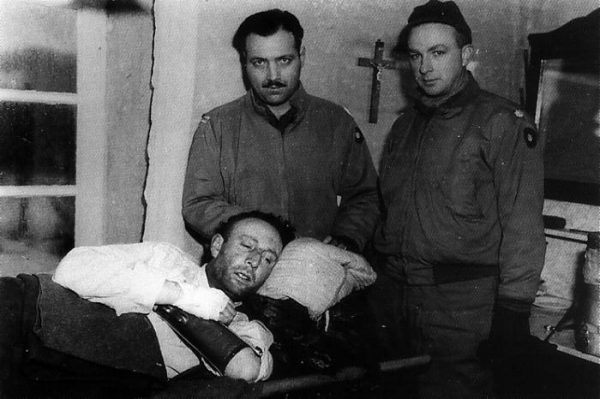
Von der Heydte wounded-captive
Still, with reports of a large-scale German parachute operation in the vicinity, by 20 December, the nervous tension in Monschau reached a fever pitch for both panicked civilians and the military government alike. Elaborate searches began of the woods and swamps between the town, Eupen and Malmédy. The operation to flush out von der Heydte’s men in hiding consumed the 18th Regiment of the U.S. 1st Infantry Division and a Combat Command B of the 3th Armored Division. “American soldiers were seeing German paratroopers behind every bush.” In Monschau itself a fruitless house-to-house search began on the night of the 21st. Even if none were immediately found, that disappointment was not to last.
Then in the late afternoon, the three men awoke to plod down toward Monschau crossing the Rur River. But now, reaching the edge of the village and finding no friendly forces– American soldiers only– von der Heydte stopped in disappointment. Barely able to walk, he couldn’t continue. He insisted the other men go on without him around Monschau and seek German lines. He would just hold them up. Only with his direct orders, did they leave their Colonel hiding in the brush. Shivering in wait until dark that Thursday evening of 21 December, von der Heydte finally got to his feet and staggered ahead into town. At 11 PM, the Baron pushed the doorbell of one of the first house he came to in Monschau. It was a squat two story structure with a slate-covered dormer roof at Monschau at Am Oberer Kalk 6 just west of the main road.
Hearing the doorbell, 56-year old schoolteacher, Karl Bouschery found an ailing German officer outside the lattice work door. The man was shivering and hurt; Bouschery led the man inside, supporting one shoulder. Baron Von der Heydte promptly collapsed in the warm kitchen to the wooden floor. The family gathered around him by the glowing wood stove. Bouschery had himself been in the trenches in World War I and although everyone in Monschau had watched the tanks surge triumphantly through the town in 1940, four years later he was disparaged the war and the NSDAP. When the family was able to speak to Von der Heydte, he seemed to feel the same way. “I’m sick and too weak to fight,” he said. He was on the verge of pneumonia. “In the morning I will surrender.” The Baron drank the ersatz coffee made from wheat berries the family fed him, but was too sick to eat any food. Eugene was trained in first aid and splinted von der Heydte’s broken fingers with tongue depressors.
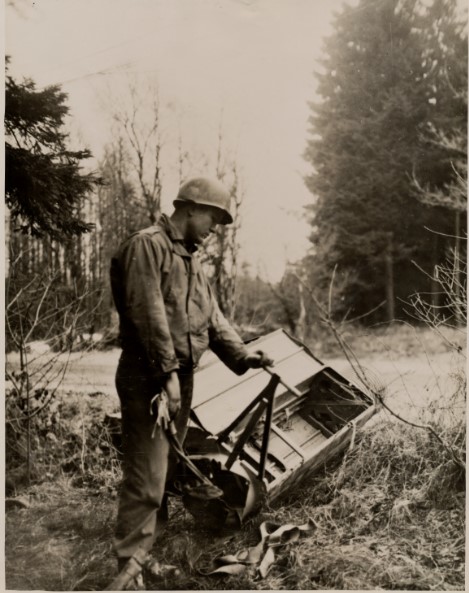
Admiring the von der Heydte’s camouflage uniform, Eugene, proudly announced he was a Jungvolk, even though the Americans now controlled the town. Von der Heydte said nothing and weakly asked for pen and paper. He was fed up with the war. Although he had at first agreed with Hitler’s regime, he now knew it was rotten down deep. All the Jews had vanished from Low Bavaria to disappear into extermination camps in Czechoslovakia and Poland. The proud army he had once fought for was now virtually destroyed. If ever allegiant to Germany, he was still fighting for Hitler; he scribbled a note:
22 December
“To the American Commander of the Military Government of Monschau,
Dear Sir,
I tried to meet German soldiers near Monschau. As I could find there no German troops, I surrender because I am hurt and ill and at the end of my physical resources. Please be kind enough to send a doctor and ambulance because I cannot go further. I lie in the bed of Herr Bouschery and await your help and orders.
Yours sincerely,
Freiherr von der Heydte
Obstl Commando of the German Fallschrimjäger trooops, region Eupen – Monschau.”
The paratroop officer was running a fever of 40 degrees Centigrade. The family put him to bed on a sofa by the stove and covered him with blankets. He fell asleep to the melodic ticking of the family clock. On the morning of 22 December 1944, young Eugene Bouschery took the letter to the Hotel Horchem in town where he knew there were some Americans. There, Captain Goetscheus was electrified by the news. Here in his town was the head of the German parachute operation and he was surrendering! Goetscheus excitedly took the note to the Monschau Postamt to the headquarters of the 47th Infantry Regiment, 9th Infantry Division.
Soon Lt. Col. Lawrence Q. Langland, of headquarters 9th Infantry Division, left in a jeep with an American doctor, a crewed ambulance and several jeep and a halftrack of heavily armed GIs. Yet reaching the Bouschery home at 9 AM and entering “with great drama,” Langland and the others went in to find von der Heydte hardly a threat. He was very ill. Shortly after, being examined by the doctor, he was loaded onto a stretcher, the American GIs posed with the captured Baron. By 10 AM, von der Heydte, was on his way to the headquarters of the V Corps in Eupen.
Still, U.S. Army interrogators the following day found von der Heydte a tough prospect, security minded and intelligent. And if fed up with the unsavory war, he still oozed with arrogant allegiance. Industry in his country had de-centralized, he told his interrogators. “You can destroy our cities, but it is impossible to destroy German industry.” He opined the war would continue for a long time “until a stalemate is reached on the Western Front and the Allies finally come to realize that the real menace to civilization is Bolshevism.” The war still could be won he said because “we are smarter than you are.” The final word from von der Heydte to his interrogators was humorous and cocksure. He was exhausted and had to sleep, but reminded his captors, “Should you hear over the radio that I received the Schwerter zum Ritterkreuz,” he told those taking notes, “please notify me.”
If that confrontation seemed arrogant, as Christmas time drew near in Eupen, the very Catholic commander, known to some of his men as the “Rosary Fallschirmjäger,” showed a softer side:
“There, an officer asked me if I wished to confess. And I thought, ‘My goodness, now at the end I shall be shot!’ But it was only an American Chaplin and because it was Christmas night, he asked me if I wished to confess and take the communion.”
That same Christmas Eve, Freifrau Gabriele von der Heydte was at her home at the Schloss in Egglkofen in Upper Bavaria. As always, she and her brother listened to the news on the BBC at noon. They spoke English and it was a way of getting news from the war without Goebbel’s propagandistic varnish. As it was Christmas Eve, the whole family now gathered that day in the dining room to listen. There was startling news with a south London accent: “BBC reports that the Lion of Carentan, Colonel Friedrich von der Heydte, was taken prisoner by U.S. forces in the Ardennes yesterday….” There was a collective gasp– then tears. He was alive and safe. Gabriele was beside herself with joy, vowing more prayers at high mass that holy evening. “It was the very best Christmas gift of my life,” she would later say.
At Hitler’s bunkered headquarters near Ziegenberg, there was no such good feeling. “No further word from Gruppe von der Heydte,” OB West reported ominously. What von Runstedt’s intelligence service did report was a steady stream of American reinforcements pouring into the Ardennes from the north. The 3rd Armored Division was now chasing down German paratroopers in the woods south of Eupen and putting a clamp-like squeeze on Kampgruppe Peiper in La Gleize. Looking over the red map symbols crowding the right flank of his great offensive, Hitler insisted someone find who was responsible for the oversight. He had seen the danger from that sector.
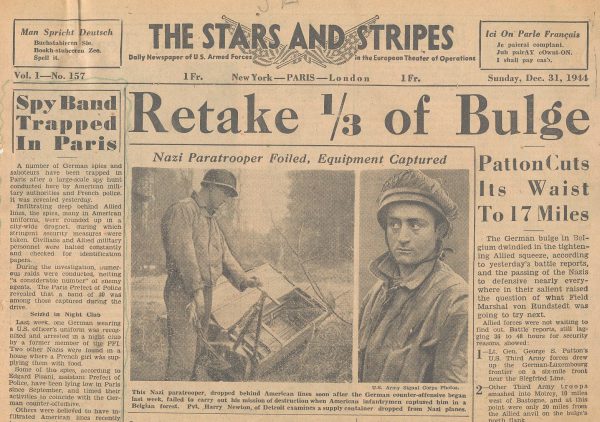
“Where are the Jagdtigers?” the German leader demanded to his household military staff. It was a typical question; from the Führer who was always obsessed that last muscular unit in any fight that might tip the military balance. Hitler had intended schwere Panzerjäger Abteilung 653 to help the Volksgrenadiers seize Monschau and push on to establish an armored cordon behind their 128mm guns to rope off the northern flank in the Ardennes below Aachen. That would protect Peiper’s dash to the Meuse.
Some time went by, with phone calls made, but presently the Gen Jodl’s Luftwaffe adjutant moved up to the map room. “A check has been made,” Herbert Büchs began, “and the trains bringing the battalion forward have been blocked by attacks on rail lines.” The nine available Jagdtigers had not even crossed the Rhine River, although over a dozen more of the 77 ton juggernauts just off production were joining Maj. Rudolf Gillenberger’s battalion although scattered across the Reichsbahn. Hitler was flummoxed; no he was furious. Büchs gave him wide berth. “They must be mad!” the German leader cried shaking his head, “If the enemy attacks us with a dozen heavy tanks, everyone is screaming. But when we have 24 of the heaviest tanks in the world, they aren’t even used!”
Not that it mattered now; von der Heydte had been vanquished from his blocking position, his paratrooper battle group completely scattered and destroyed. At the close of the day, Jochen Peiper and the full panzer strength of the Führer’s namesake Leibstandarte Adolf Hitler was out of fuel and ammunition– totally surrounded by American tanks and infantry flooding down from the north.
Wacht Am Rhein ebbed and faded. Even the Ardennes star of Jochen Peiper flickered uncertain. The Waffen SS King of the blitzkrieg was now turned back, even hunted and warily circled.
[/read]The post Operation Stösser: Kampfgruppe Von der Heydte in the Ardennes (Part II) appeared first on World War Media.
]]>The post Operation Stösser: Kampfgruppe Von der Heydte in the Ardennes (part I) appeared first on World War Media.
]]>Like Jochen Peiper’s ambition mission to reach the Meuse River, the desperate German parachute operation that had been intended to help hold the roads open so that the passages across that river could be seized, came to an ill end. Unternehmen Stösser had been intended to spring Kampfgruppe Kuhlmann and SS Panzer Regiment 12 to come to Peiper’s aide along his exposed northern right flank. Indeed the secret parachute operation aimed to block the American reinforcements, now streaming down from the north. Kuhlmann had become mired in muddy trails leading up to the twin villages of Rocherath-Krinkelt and then again at Dom Bütgenbach coming face to face with the muscular resistance of the U.S. 1st and 2nd Infantry Divisions. In repeated attempts, they failed to unhinge the right flank of the German assault.
by Danny S Parker, author of FATAL CROSSROADS and HITLERS WARRIOR www.dannysparker.com
In many ways, the parachute operation of Kampfgruppe von der Heydte was like a canopied mirror of the failure of Peiper’s SS panzer arm in the Ardennes. The thousand man parachute operation had absorbed most of the Fallschirmjäger still with drop experience in the German army: spanning the gamut from those with just six jumps at Wittstock the previous August, to the hard-bitten survivors of Crete. They had come from all sectors of the German Luftwaffe in the last few weeks of autumn to jump into a desperate operation to serve and even more desperate offensive.
At 2 AM, Sgt. Willi Volberg, in the Stösser assault group remembered loading into the old Ju-52 transports at Lippsringe air field and nervously singing the Fallschirmjäger’s hymn. Belting out the words, they adjusted parachutes and drop gear in the cramped and dimly lit cabin:
“Rot scheint die Sonne, fertig gemacht, wer weiss ob sie morgen für uns auch noch lacht…” (Red shines the sun already! Who knows if the morning will laugh with us again!)
It was totally dark as they sang, and any red sun of morning seemed a long time away. How could there be any in this fog?
“Werft an die Motoren, schiebt Vollgas hinein . Startet los, flieget ab, heute geht es zum Feind!” (The engine starts up, full throttle given. Start, leave, take off. To the enemy we go!)
Now, the BMW radial engines now roared to life and drowned out the nervous whispers among the Green Devils:
“Flying westwards now, the pilots were assisted by the beams of searchlights towering into the nightly sky to direct the pilots to the drop zone. The crew members were generally inexperienced and, to a great extent, performed the task for the first time. To avoid collision, they used navigation lights and by this, when flying over the front area, made easy targets for the U.S. anti-aircraft artillery….Finally, we were alerted by the command to ‘great read for the jump out’ soon followed by the signal horn. I repel myself vigorously with my hands and feet, before I am pulled downwards by the weight of my body, arms and equipment. When the parachute opens at a stretch, I nearly go head over heels. Afterwards, swinging in the straps, I notice the noise of the engines becoming more and more gentle…After bouncing against the ground, I tumble down a small slope, then being pulled upwards again by the parachute….my sliding ends because the parachute becomes tangled in a fir. I quickly loosen the straps and free the automatic rifle ready for combat…Nothing is to be seen of the parachute flare bombs illuminating the drop zone…”
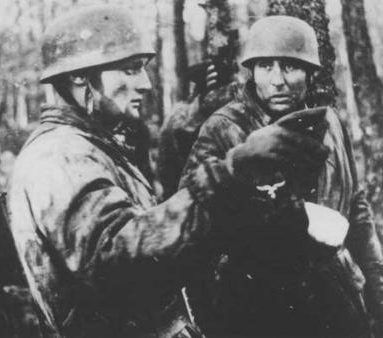
Right: Baron von der Heydte at the Ardennes Photo courtesy of Danny Parker
To be sure, the paratroop battlegroup was weak; the old Auntie Ju transports having been severely scattered by high winds from American anti-aircraft fire played havoc with inexperienced pilots. Most of one company fell will-nilly in the pine woods around Eschweiler and Kornelimünster east of Aachen. Having jumped at 3 AM on 17 December, the youth and elder Fallschirmjäger alike, now still remained in the woods, waiting to be relieved by Kuhlmann or Peiper’s tanks. Some, like Willy Volberg, were simply lost and looking to find anyone friendly:
“Nothing is to be seen of the signal flares marking the assembly area. So, after several hours of daylight, only two sergeants, 13 privates and myself as an officer candidate attached to the parachute platoon– have met each other. Despite searching eagerly, we find neither the rest of our comrades nor a single one of the supply containers…One of our fellows think we are in Switzerland! We too, at first, cannot identify our location because of blowing snow, but it clears at one moment and we can see the Gileppe dam in the distance. So, on the map, we are able to locate our position now. We have dropped about six km northwest of the planned point….There is only one casualty in our small group; one of the fellows complains fo a sprained knee, but he bravely hold his position in our march eastward…”
Like Peiper, their parachute operation which Hitler conceived with the rampaging SS tank corps to send the Allies reeling was now itself in danger of encirclement. Still, about half of the paratroops actually landed near the wind-swept frozen marsh of the Haute Fagnes although widely dispersed. By the end of the first day, von der Heydte only had collected 125 men in the area of the designated drop zone– not nearly enough to fulfill its mission. Volberg continues:
“Just before noon, we contact a German reconnaissance patrol– at first thinking it an enemy element– scouting towards Verviers. Advised by this patrol, we soon meet our unit at the crossing. But what is up here? Meanwhile, about 130 paratroopers (including ourselves) have met here, and even after the arrival of another 150 men, we form only a small part of the original task force…We occupy positions nearby the crossing. Reconnaissance patrols are sent different directions. A party under my command is to reconnoiter towards Baraque Michel and south of this hamlet. Enemy contact is to be avoided. All patrols return with information on the enemy highly important to higher echelons, but how to transmit this information without a radio.”
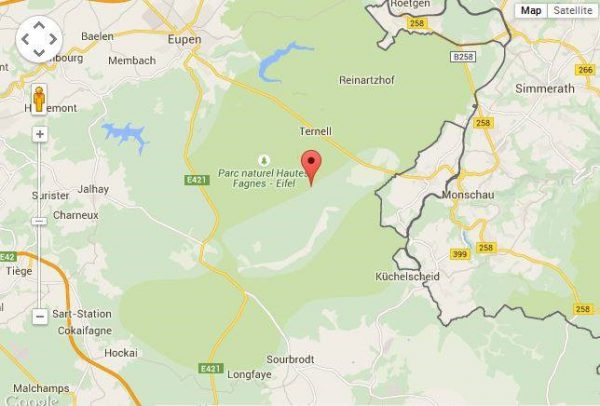
First Hiding Place
Later, by scouring the nearby woods, von der Heydte’s group slowly rounded up those lost and straggling. Still many were missing. In the wide areas of the snow-covered pine woods above Malmédy a number of German parachutists with broken legs died a slow death of starvation, freezing and exhaustion. Their numbers were still being discovered by locals the following spring. The night after the operation, another reinforcement operation with a few planes was flown from Paderborn to provide supply and a few more troops for the 4th Kompanie. Yet, that effort came to naught as anti-aircraft fire was even worse and only a few containers reached the lost Stösser group.
With no further food or resupply von der Heydte’s situation soon turned grim. His paratroopers were to have been relieved by December 18th at the latest. Indeed, Dietrich had promised von der Heydte a couple of weeks earlier that he would personally meet him at the crossroads. But now it was two days later and the battle group was completely out of communication with the outside world. A four-man portable communications squad of SS men from Hitler Jugend Panzer Division of 7. Batterie under SS Ostuf. Harald Etterich had jumped with a 35 watt Type 10 radio. The paratroopers joked that these SS “tough guys” had been scared to death when they had to jump out of an airplane.” But worse was that only one of the radio set from the 12.SS Panzer Division wasn’t working– having been “smashed to pieces bouncing on the ground.” Then too, most of the organic signals platoon floated down in front of surprised Volksgrenadiers just south of Monschau. If Hitler Jugend’s artillery regiment could reach Elsenborn, they would be able to call down fire to support von der Heydte’s men with their 15 cm field howitzers or a long-range battery of K-3 guns. Without communications, that hope was dashed.
The Baron had originally wanted carrier pigeons for his battlegroup, but had been overruled in the unpleasant alcoholic encounter with Sepp Dietrich. The assembled paratroopers were well equipped with ammunition, but lacking in the weapons themselves– only 15 machine guns, two 8 cm mortars, numerous Panzerfaust along with an assortment of 98 K rifles, Sturmgewehr 44 assault rifles and machine pistols. With all radios lost and only a single working mortar, von der Heydte deemed it possible to mount onlly a single combat action to seize the Baraque Michel crossroads when the 12. SS Panzer Division approached.
Von der Heydte and his group built a defense perimeter in the woods 2-3 km NE of the crossroads:
“The first day brought no strong contact with the enemy. The group that had reached us from the north brought with them about 30 prisoners and a few more had been taken by reconnaissance patrols. A few enemy armored and unarmored vehicles were destroyed. American reconnaissance patrols did not try to establish contact until afternoon. I decided, therefore, to shift position during the night. We moved about 3 km to the north, onto a hill offering good observations south and southwest. Before moving up, I released the prisoners and sent them with some of our own wounded…The following day was spent without contact with the enemy…The sound of battle was far off and the camps at Elsenborn and Malmédy were apparently still strongly held by the enemy.”
On the night of 17-18 December, an attempt was made to supply the paratroopers with extra food, ammunition and a 36 man heavy platoon. Three Ju-52s left Sennelager/Paderborn for the Ardennes at 1900 on 17 December, but this operation too came to little. Waiting for days, the only tanks that approached were American ones searching for the enemy paratroopers. On December 19th the Americans attempted to flush out von der Heydte’s combat team northeast of the Mont Rigi. A brief firefight erupted as the combat team pulled back to the east, but with three paratroopers being wounded. Now, Von der Heydte pulled back deeper into the woods east of Mont Rigi where the Americans on their tanks and trucks could not easily reach them.
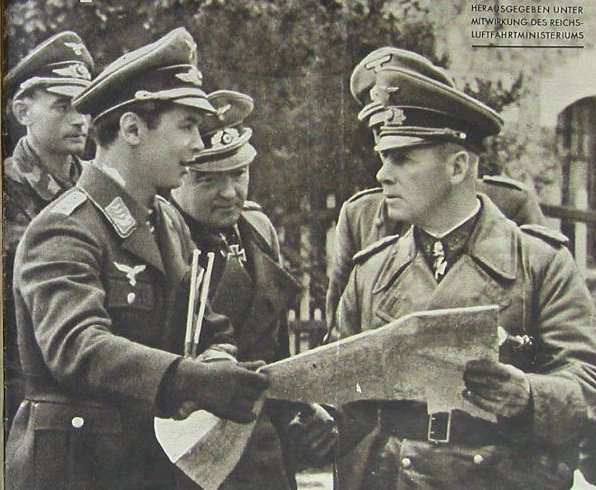
Still, the men were hungry, no food in two days and cold– there were only a few blankets, and no fires could be lit. Still spirits were still high and Allied interrogators capturing several members found them possessing a near “mystic belief” in their leader, von der Heydte that somehow prospects could be salvaged. On the afternoon of 19 December, an eight man search party was sent out to search for the missing parachute food containers. They found two containers, but only with ammunition for which there were no weapons and a Panzerfaust. During the search two of the men were captured and the rest returned on Tuesday night without any food.
It was clear that his men would soon succumb to cold and hunger. At dark, von der Heydte pushed east with his men, releasing his American prisoners, asking them to take on his own wounded. By midnight his eastern trek had reached the Helle and forded its icy waters near the place where a little stream– Ruisseau de petit Bonheur– flowed into it. The men were forced to wade and drench themselves in the cold water. They intended to move to up beyond its steep bank to the east towards Neu Hattlich, but again ran afoul of American infantry searching for them. After an exchange of shots another paratrooper was wounded and von der Heydte pulled back to the west bank of the stream and organized an all-around defense near Hill 584. The Americans, meanwhile, thought they “had 200 paratroopers cornered” just before dark on 20 December east of Monshau, only to have their quarry slip away.
The following morning, von der Heydte spied a U.S. skirmish line on the other side of the creek, searching for them. Still, it was with total surprise when at noon 20 December Obst. Von der Heydte gave out an order that stunned the remaining hungry and tired paratroopers in his guerilla warfare band. His men to separate into small groups, he urged them, and try to make their way back to German lines. Those that made it back to Germany were to assemble at the Truppenübungsplatz– the exercise field– at Köln-Wahn where they were to receive long-promised Christmas furloughs.
Not long after the final instruction were given, the encampment in the woods was broken up when the Americans pushing into the Königliches Torf Moor scrub-brush and woods, began firing again. To the east, he could hear the metallic squeal of tanks approaching from CCB 3rd Armored Division along the road from Eupen to Monshau. Some of the paratroopers threw away their heavy weapons and scattered into the woods. Yet, for the most part the Fallschirmjäger slipped away intact. Still, Willy Volberg was depressed.
“I am shocked, for I never thought our airborne operation would end like this. At first, according to the commander’s order our squad breaks down into several segments march in intervals along the Sour creek towards Eupen…we make our way southwest, cross the road leading from Eupen to Malmédy without being notice and then turn to the northwest for a stretch of about a kilometer. There should now be sufficient distance between us and the enemy. We hide in the underbrush and make use of fir branches a resting place…We are all going to sleep. If our hiding place is discovered by the Americans, there is nothing to do but surrender…Before falling asleep, I remember a trolley line from Eupen via Aachen to Eschweiler which is my native place. In peace time I would be able to reach this place within two hours. However, U.S. forces have been occupying Eschweiler since November 1944. I finally fall asleep with the taste of potato pancakes and applesauce in my mouth— just an illusion of hunger.”
Amazingly, after waking from his dream the following morning, Volberg and his companions stumbled on two parachute containers when one of their little group went to relieve himself. One of the relief containers to be sent to them! Suddenly, they are loaded with all the ammunition they can take, but more importantly by “chocolate, bread, rusk and cheese in tubes.”After everyone in his little squad feasted on the victuals, Volberg and company hiked cross country through the dense forests, suffering cold, exposure and painfully chaffed thighs. In the late afternoon of the 22nd, they finally reach the Eupen-Mützenich road, Volberg benefitting from native knowledge of the surrounding terrain. The next day, the exhausted group managed to reach Reinartzhof, north of Monschau having several times to avoided noisy American outposts of the U.S. 78th Infantry Division; more slogging through mud and marsh.
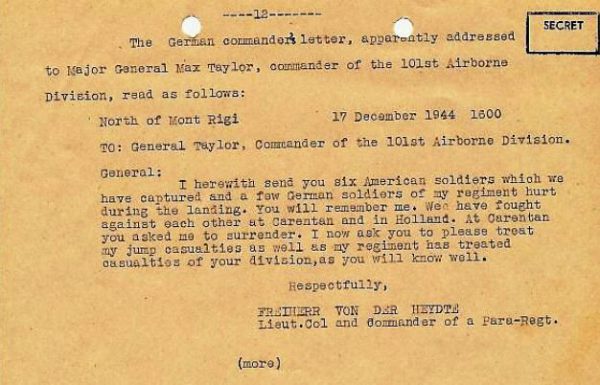
On 17 Dec 44 and without any intelligence about the American troops near Monschau,the Baron wrote this note to Gen Max Taylor of the 101st ABN, who, at that time was back in the US. The 101st Division was still in Mourmelon, France, and would not be committed to the battle until 19 December.
Fretting over interconnecting American foxhole line just ahead of them, Volberg and his miserable companions found themselves suddenly engulfed in a heavy snow. Yet, even shivering in their Knochensack– the waterproofed parachutist’s camouflage blouse– the thick snow seemed a Christmas godsend. Seizing the momentary white-out as cover, Volberg ordered everyone to rush forward firing their guns at full volume. That done, the American outpost dove fore cover. Within seconds the German paratroopers are through the U.S. line running for their lives as the Americans recovered from their surprise and sent bullets over their heads in the snowstorm. All of the desperate paratroopers kept running and none were hit. Presently, Volberg confronted equally befuddled Landsers of the 272.Volksgrenadier Division. About 150 of the men with von der Heydte escaped back to German lines, many near Kalterherberg. Others were captured, but often after being turned over to the U.S. Army military government in Monshau by locals.
Continue reading at : Operation Stösser: Kampfgruppe Von der Heydte in the Ardennes (part II)
Danny S Parker, author of FATAL CROSSROADS and HITLERS WARRIOR
The post Operation Stösser: Kampfgruppe Von der Heydte in the Ardennes (part I) appeared first on World War Media.
]]>The post A Walk to Remember appeared first on World War Media.
]]>

Studied notes all morning, and then headed out for Normandy after a final meal with brother Paul Crompton and his wonderful family.
I noticed that the burial site of my favorite poet of all time was on the way (thereabouts) to my final destination, so I plotted a course for the tiny village of Ors, France, where one Wilfred Owen was killed just one week before the end of WWI.
by David Campbell GBCTOURS.COM
On the way, I remembered a brilliant documentary I had seen by Michael Palin (of Monty Python fame) on the last day of WWI. It is deeply moving... and in it, he goes to a cemetery where the very first and the last British combat casualties of WWI were buried - fifteen feet apart and facing one another.
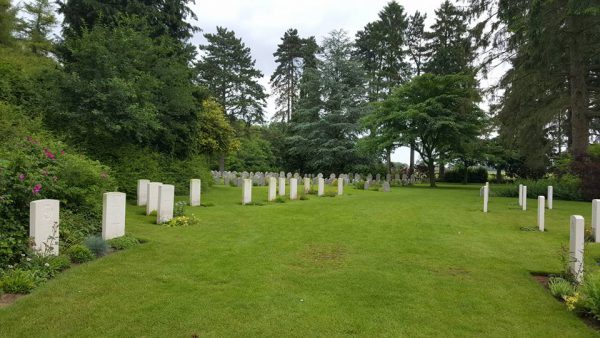
Ellison, on the left, died on the last day of the war, 11 Nov. 1918. Parr on the right died on August 21, 1914.
I visited that beautiful joint cemetery of British and German soldiers, scene of their first and last clash of the war, before meandering through charming French villages and towns, whose names began sending off historical alarm bells as I neared the location of the Western Front for the bulk of the war.
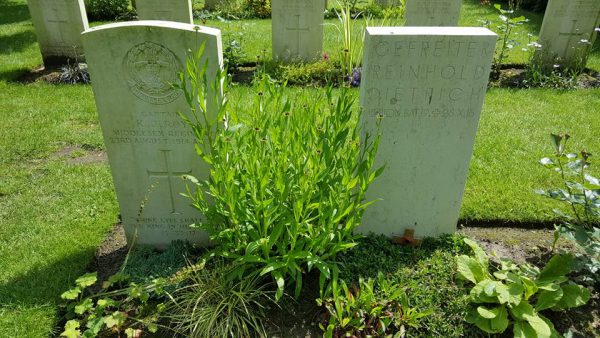
British on the left... German on the right.
I stopped a tiny little British cemeteries, dotted all over the area, and even spotted a couple of pillboxes/blockhouses from the war. And when I found the little hamlet of Ors, I spent a good two hours, walking down the canal to the very spot where Owen was killed leading an assault across the water. I visited the forestry home where he spent his last jovial night among his comrades, writing a letter to his Mum, and I found the cemetery buried deep into the village where he was buried - in the same large plot as the French families of Ors.

Standing on the spot where Owen was last breathing air... leading an assault across the canal on November 4, 1918.
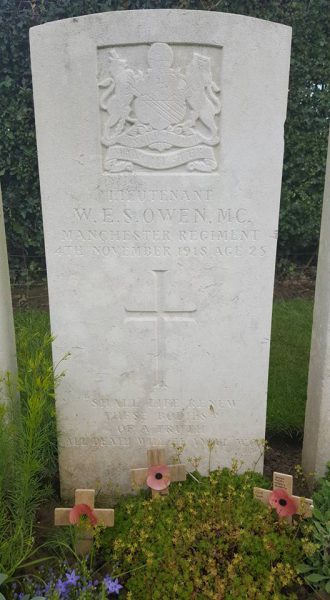
England's greatest poet...
On the way out and towards Normandy, I stopped in the town of Le Cateau, where the first French civilian casualty of WWI was executed by the German Army for having pigeons (they wanted to set the tone that they would not tolerate spies).
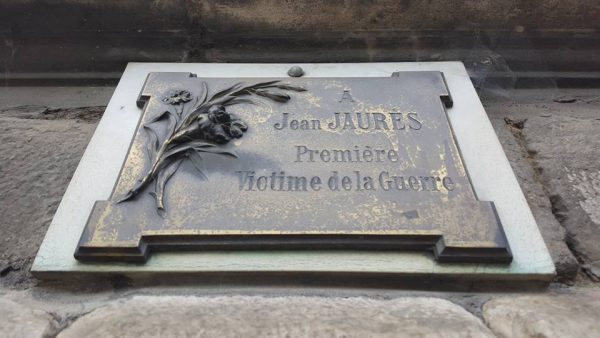
I had an obligatory meal at a local friterie, in a place deep in the heartland of France and far from any remote chance of an American being there. I ordered my food in French and sat and waited, as the locals kept checking me out and trying to figure out just who the hell I was... Not a word of my American English was uttered. It was sublime...
I stopped at one last cemetery on the way out of town, knowing I still had a lengthy drive ahead. I'm so glad I did. In it are German, British, and Russian soldiers, all buried in one giant plot: Germans to the right, British to the left, and Russians in the middle at the back. The Russians were POWs who were killed...
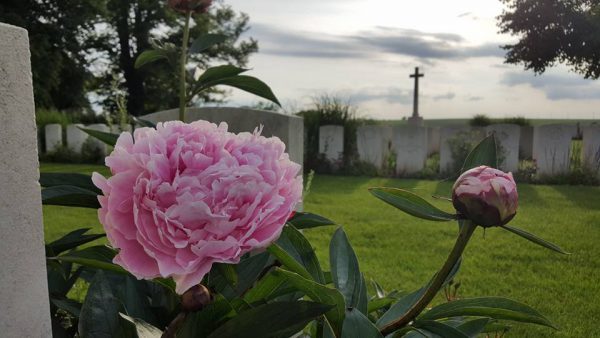
The rest of the drive was vintage Europa... I listened to some ballads from Henry Purcell, a famous English composer from the 1600s (a cd I found at a roadside garage sale-type giveaway during my drive out of Ors), some electronica by a German DJ - Solomon, and to wrap it all up, the wonderful Abba album, "The Visitors," which always took me back to my childhood days in Belgium.
Tomorrow my next tour starts up in earnest, though I have a final break in the morning to polish up for the tour to commence.
And I am eagerly looking forward to putting together a superb WWI tour with my brother and business partner Antonio Cisneros, the most impeccable WWII guide/historian you've never heard of. I was extremely impressed and certainly challenged by his class, mastery of facts, and presentation. He's been doing this for 20 years, and he runs laps around anything that the bigs offer. He's motivated by a passion to give the best possible service and presentation - not by dollar signs. We hit it off immediately on this last tour, having so much in common, including upbringing and a profound love of history and people.
I'm humbled to have seen all that I have experienced and to do what I do for a living.
More than anything else, I am deeply humbled by history and the stories of those who have gone before.
Start brushing up on your WWI, Americans... We're two years away from the 100th anniversary of the American involvement (in the last year) of WWI.
And rest easy, Wilfred Owen. Yours was a light that shone brighter than anyone else who ever used the English language - an absolute peer of William Shakespeare. Your poetry opened my eyes more than I ever imagined possible...
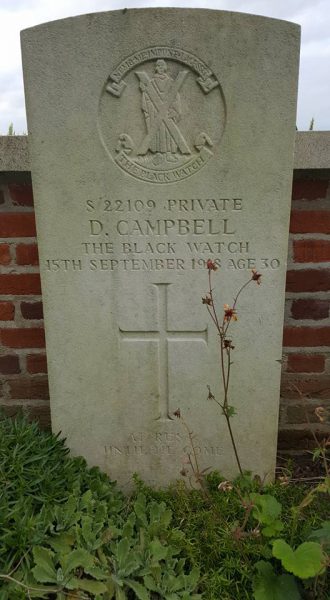
That's the thing about history, isn't it?... In another time and place, it could have been me.
This book is not about heroes. English poetry is not yet fit to speak of them. Nor is it about deeds, or lands, nor anything about glory, honour, might, majesty, dominion, or power, except War. Above all I am not concerned with Poetry. My subject is War, and the pity of War. The Poetry is in the pity.
― Wilfred Owen
Keep traveling. And most of all, keep learning... It never ends, if you don’t let it.
The post A Walk to Remember appeared first on World War Media.
]]>The post Men Are From Mars appeared first on World War Media.
]]> Since the days of my youth, growing up in Belgium, I have been fascinated with war…
Since the days of my youth, growing up in Belgium, I have been fascinated with war…
We had a German bunker in our neighborhood that we played “guns” in. We lived two miles from the Waterloo battlefield, with a giant mound and an iconic statue of a lion that is synonymous with the town. Inside one building is a giant panorama: a painting of the battlefield upon the wall of this vast, circular building.
By David Campbell GBCTOURS.COM
It was one of my very favorite pleasures to climb the steps up into the middle of that building and behold that epic clash… which they further accented with the carnage of battle, including mannequins of dead and dying horses and men, and sounds of cannons, muskets, horses, and battle cries.
Nearby was the very farmhouse where Napoleon spent his last night before the battle… and the wooden table upon which he planned his final act on the world stage.
Every year, our church took a ski trip to the town of Berchtesgaden, Germany. It was home to a US Armed Forces ski resort, and some military members of our church got a deal for the rest of us to ski there. They would stay in the General Walker hotel, a former SS barracks. We civilians stayed just down the hill in a rustic hotel with quite a story: the Hotel Zum Türken. This hotel had the distinction of being the very billet of Hitler’s personal security detachment… his house was a snowball’s throw down the mountain. Our hotel still had the old bunker system intact, and it was a creepy and mesmerizing thing to take that tour and snake down inside the ice cold chambers and view machine gun pits and the entrance to Hitler’s bunker. We were just underneath the ruins of his house.
Having a father who had been the Executive Officer of a Marine Corps Rifle Company, we visited many a war memorial and battlefield as children. I remember the haunting depths of walking the grounds of Dachau… the somber silence of beholding the beautifully manicured graves of the boys who died taking Normandy beach… meeting the mayor of Bastogne as a boy as we learned about the Battle of the Bulge… being taken around the battlefields of Operation Market Garden in the Netherlands, by an older member of our church who had served in the Dutch intelligence/underground during WWII.
A further benefit to growing up abroad was the influence of my English friends. Their history and heritage related to military actions run much deeper than ours. We were always squabbling over who did the most to defeat Hitler in WWII (turns out it was the Soviet Union). One massive benefit to me was the realization that there were other viewpoints out there worth considering. But I digress…
The other benefit of the British was a first rate toy manufacturing company called Airfix. They made the very best models and army men. This wasn’t some garbage made-in-Japan (back in the day, remember?) stuff… Airfix made the best replicas of units: the leggings, helmets, and machine guns particular to the Fallschirmjäger (the German airborne); the submachine guns and unique clothing of the Soviet Army; the helmets with camouflage netting and the jump boots of the US Airborne; and even the skis and tiny Edelweiss flowers of the German mountain troops. I absolutely loved it.
My favorite thing to do on a Saturday, while my brother was away and gave me the room to myself, was to lock the door and build giant fortresses with my books and mountains with my blankets. I would spend hours building a landscape and city, and then I would wage war with my various units in delight.
[read more=”Click here to Read More” less=”Read Less”]We did not grow up watching television. We spent our time outdoors or playing games that involved wits and imagination. But when gaming came along, I was dreadfully hooked. That began to pass with time, but in recent years, when I was alone in a hotel room or staying with friends while between tours, I began to game again… Command and Conquer is one of my favorite war strategy games, and I play it on the hardest level against as many opponents as I can possibly handle. It is intense, demands all of my attention, and gives me great satisfaction. I often turn to it when I hit an intellectual road block as I am working on a tour. It gives my brain some time to reset and chew on things in the background. It never fails me…
Recently enough, I stumbled onto a brilliant game called “World of Tanks.” I have become utterly immersed into it, because it brought to life so many accounts I had read from my budding military history library. For all that people have enjoyed or praised me for my writing abilities, this was a direct byproduct of a great deal of reading… and war was the only thing that could truly hold my attention.
The Bantam Publishing Company released a series of non-fiction, first person war books. It wasn’t limited to Americans, either. A British pilot who lost his legs before the war – and was able to jettison his prosthetic leg, trapped under the pedals in his shot down aircraft, and parachute to safety… a German Stuka pilot/tank hunter who had more kills and decorations than any other officer in the Luftwaffe… the insane story of combat and survival by America’s most decorated soldier, Audie Murphy… the memoirs of one George S. Patton… I would take my allowance money and purchase and gobble up these books starting in the fifth grade. They were the nexus of a war library I now have which numbers well over 300 books.
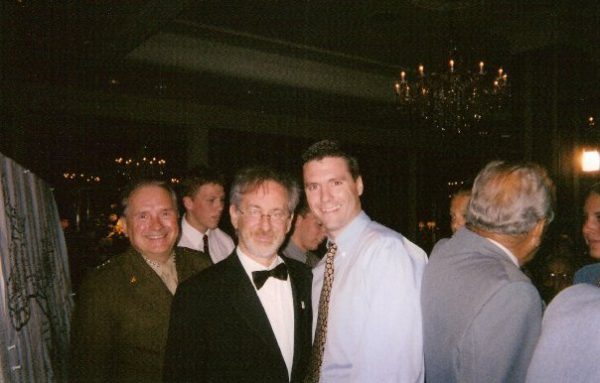
I have collector’s books that are very expensive and out of print. I have huge, leather bound, autographed, first edition originals given to me by Stephen Ambrose during my days of working for him. And most treasured of them all is the very first book to come out of the box, which Stephen opened in front of me during my days as his last teaching assistant at the University of New Orleans. It is the first hardback copy of “Band of Brothers,” which he signed to me – and floored me with his generosity of spirit and comradeship.
“For David Campbell… my associate, assistant, and friend.”
I later took that book to the “Band of Brothers” reunion I attended in Denver, while working for Tom Hanks as the pre-production researcher on the very same HBO show… I had the veterans whose feats were chronicled in that book sign the inside page: Carwood Lipton, Forrest Guth, Jim Alley, Shifty Powers, Don Malarkey, Popeye Winn, and others…
For a kid who never had a grandfather – and they were both US soldiers in WWI – I connected to that profound sense of heritage that exists in military families, where generation after generation heeds the call to serve.
And this tank game – which is more detailed in terms of armor, chassis, radio range, and weak spots on every single vehicle – has given me a more profound appreciation for the men who waged war in these steel monsters than any book ever could. You fight 15 on 15 in a live, rotating setting. Those who don’t know the tactics or don’t work together get slaughtered. There is no re-spawn. There are no cheats. It’s 100% accurate. The newbies on the lowest levels can have a free-for-all. When you climb in tiers, you’ll be ridiculed and dropped for playing like a lone ranger. It involves strategy, innovation, and prediction.
The community of gamers is brilliant as well. There are young kids, but there are many older people playing – and from all over the world. One guy I play with regularly enough told me that his grandfather, who is in his 60s, has all of the best tanks – which can only come from lengthy, intelligent gameplay. I’ve become great friends with an older British guy living in Manchester. His father and uncle fought in WWII. Another friend is a brilliant player from Nürnberg, Germany. I’ve even rekindled a great friendship with one of my favorite former students, Josh Kuplesky. I instilled a love of WWI and WWII in him, and he has returned the favor by serving as my mentor as I climb up the ranks, when I have time to battle.
I’ve even discussed the World of Tanks at length with a client of mine for an upcoming tour. His father served in the 2nd Armored Division in WWII, and this guy is every bit the military history nerd that I am… He sent me two books for my own homework as I put this tour together, and what a treat it has been. We have discussed tactics, weaponry, and everything in between. We connected in the first conversation, and there was never any doubt that I would have the contract… 10 – 16 people for two weeks, retracing the steps of the 2nd Armored from Normandy to Bastogne and on to Magdeburg and Berlin.
Today, World of Tanks came up HUGE.
I was looking for photos to add into my online itinerary for this tour, which we both hope will end up enticing three more couples to join us. My client had informed me that his dad talked repeatedly about the town of Setterich, Germany. Of course, there was fighting all over a great deal of Germany, but there are not war memorials and remains of battle in many of these places… for good reason. Life goes on.
But when I did a search with Google for images of Setterich, I found a photograph of American tanks in action. And when I clicked on the link to the page where it was from, I hit the motherlode.
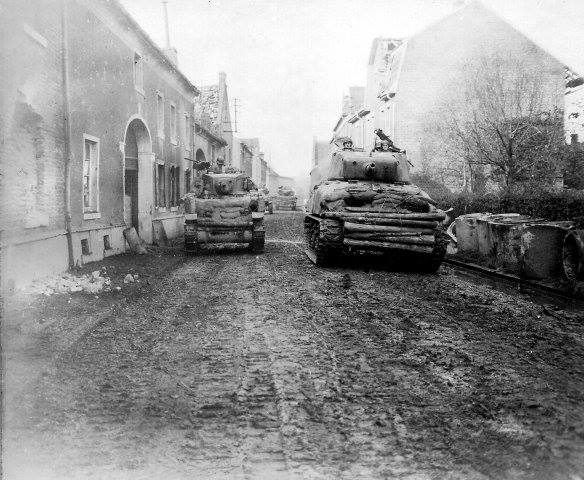
2nd Armored in Action
On a World of Tanks forum page was the story of the fighting in that very region, giving me quite a lot of detail and color to weave into my presentation to the group as we drive through this tiny little hamlet north of Aachen on our upcoming journey. Words cannot express the elation I get in surprising clients with such treasures of information and experience, and I forwarded it to him and received the most glowing response. He has been to the area over 25 times while running several international companies. He had gotten confused about the actions in that area and was going off of a fading memory of stories his dad had told him… He was overjoyed to read the article and put it all together again.
Score!
Maybe it means little to the outside reader, but for me, this sort of thing truly reminds me why I LOVE what I do for a living… And I am perpetually the teacher and the student, which is the greatest thing of all. It’s also great fuel to the fire as I prepare to form a separate company strictly devoted to intimate, upscale battlefield tours. I have simply been connecting with too many of these kinds of enthusiasts, many of whom are deeply enthralled by the stories of war. Hell, I was one of over 400 applicants at a law firm in San Francisco, and the senior partner of the firm saw on my resume that I had worked for Stephen Ambrose. We began talking military history. I met him outside the office building, after my initial interview, with a brand new copy of a favorite war book in hand to give him. I got the job.
I have led and continue to lead customized battlefield tours for retired doctors, CEOs, board members, and even one general. We have been in perfect sync the entire time… and I use my culinary knowledge, cultural appreciation, and extensive knowledge of military history to put together the ultimate experience, complete in every aspect. They know it, too. The last one of these I did, my three grateful clients gave me $700 in tip for the job I did.
It has always cracked me up to hear a sister or close female friend give birth to a boy and tell me how their would not ever play “war.” They insisted to me that they were going to raise them “better.”
One finally gave up, admitting to everyone on Facebook that her boys were using cardboard tubes and other random contraptions to pretend they were weapons… She surrendered.
War is in the male DNA.
If you study it, you’ll also not take it lightly and will quickly realize the massive costs and sacrifices…
But it’s in our blood to be captivated and ready for it.
http://forum.worldoftanks.com/index…
[/read]
The post Men Are From Mars appeared first on World War Media.
]]>The post Shooting an MG42 at Regular Speed and 240 Frames per Second! appeared first on World War Media.
]]>The MG42 is perhaps one of the most infamous weapons of war ever created, mainly because the intimidating qualities of its high cyclic rate of fire. The German military made effective use of it during the closing years of the Second World War and, although the cartridge it fires – 7.92×57mm Mauser – is no longer in widespread military use, the MG42’s roller-locked recoil operation influenced designs that remain in military service today. Since a variety of reliable sources on the internet provide deep and factual examinations of the history and development of the MG42, this short article will deal with another part of the weapon’s history.
By Martin K.A. Morgan
Thousands of MG42s are legally owned in the United States by collectors who purchased them in compliance with the regulations spelled out by the National Firearms Act of 1934. This law provides a heavily regulated category of civilian ownership of machine guns, suppressors, short-barreled rifles and short-barreled shotguns which requires fingerprints, a background check, and registration. Eligible U.S. citizens over the age of 21 with no criminal arrest record pay a one-time $200 transfer tax and wait up to 15 months before being able to take ownership of a legally registered firearm like an MG42. Making things even more complicated, keeping an MG42 running in the 21st Century is no longer easily affordable. This is because of not just the sales price of the gun itself, but also the price of the ammunition. It used to be that, three or four decades ago, feeding a 42 was not a particularly costly prospect, but things are much different today. Most of the surplus ammunition that used to make shooting much more affordable is no longer available, leaving factory new ammunition as the most reliable option for a day at the range. The eighty-nine year old Serbian ammunition maker Prvi Partizan (aka PPU) produces a 198g full metal jacketed 7.92x57mm cartridge that makes the MG42 run like the day it was made.
On a recent, unseasonably cold Sunday afternoon in rural Louisiana, an MG42 made by Maschinenbau und Gerätebau GmbH, Berlin-Tegel (also known as MAGET) in 1943 was put through the paces with several hundred rounds of PPU ammunition. This video shows just how efficiently that ammunition makes the 42 do what it was designed to do. No malfunctions were encountered at any point and, because the outside temperature was below 32° Fahrenheit/0° Celsius, the weapon did not build-up heat rapidly as MG42s are prone to do in warmer weather. While reading about “Hitler’s Buzz Saw” in abstract is informative, being able to shoot one and then review footage of it in operation provides an irreplaceable lesson in World War II history.
Private ownership is the only outlet for experiencing this rare insight into the realities of combat against the Third Reich, and it is only because individuals who have the interest and the resources, that a video like this can exist. Otherwise, we would only have the occasional training film and the personal accounts of men who faced this very dangerous weapon in action. As veterans recede from the living memory of World War II, it is up to a post-veteran generation to preserve the war’s history and promote a better understanding of the conflict that gave birth to the MG42.
The post Shooting an MG42 at Regular Speed and 240 Frames per Second! appeared first on World War Media.
]]>The post The Rifle Musket in Civil War Combat: Reality and Myth- By Earl J. Hess. Lawrence appeared first on World War Media.
]]>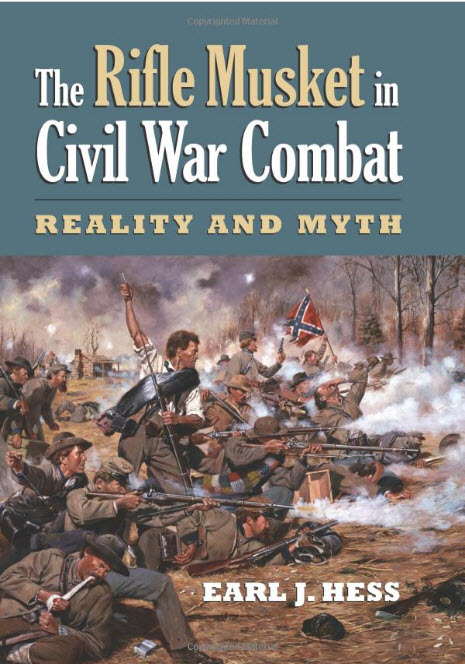
Review by Martin K.A. Morgan
At sunrise on Wednesday, August 10, 1864, the Confederate garrison inside Fort Morgan, Alabama awoke to find federal sharpshooters positioned throughout the sand dunes immediately around the structure. Marking the beginning of a two-week long siege, the sharpshooters fixed their rifle-sights on the fort and fired at anything that moved. They produced a “rain of balls” so relentless and effective that one Confederate soldier commented, “…no one can show his head above the parapet” because of the bullets “whizzing all over the fort.” The garrison considered the sharpshooters “very daring” because they crept so close to the fort – some as close as 250 yards from its masonry walls. Being prevented from firing by such accurate rifle fire, Fort Morgan’s artillery could do nothing to interfere with the landing of hundreds of fresh Union troops later that day. After sunset, 200 Union soldiers began digging trenches, filling sandbags, shaping artillery revetments and generally advancing a federal siege line that gradually tightened the noose around the old fort.
This process continued throughout the middle of August and permitted the emplacement of heavy guns and siege mortars that ultimately subjected Fort Morgan to a heavy bombardment that resulted in the garrison’s capitulation. Although the most awesome weapons available to the U.S. Navy and the U.S. Army caused the fall of Fort Morgan, Union sharpshooters did too. They suppressed the offensive firepower of a well-armed Confederate garrison and made it possible to bring up the big guns that battered the fort into submission. They accomplished this task with a weapon that fought in every Civil War clash of arms – a weapon often credited with being the most murderous instrument of warfare on the battlefield: the rifle musket.
This particular class of musket emerged during the 1830s and 1840s from a series of technological advances in shoulder fired arms and ammunition that made it possible for an individual shooter to direct accurate rifle fire against targets at greater ranges and with unprecedented accuracy. For over fifty years now, historians have deterministically interpreted the rifle musket as being the technology responsible for the extreme bloodletting so closely associated with Civil War battles.
[read more=”Click here to Read More” less=”Read Less”]
In “Civil War Infantry Assault Tactics” (Military Affairs, Summer 1961), John K. Mahon concluded that the rifle musket “caused battles to be at once much longer in time and less decisive in outcome.” He also labeled the linear, Napoleonic assault formations used throughout the conflict as obsolete when confronted with the overwhelming and accurate firepower of the rifle muskets that opposed them. Grady Mc Whiney and Perry Jamieson further developed this deterministic interpretation with their 1982 book Attack and Die: Civil War Military Tactics and the Southern Heritage. To them, the weapon’s deadly accuracy caused horrendous losses during the war’s early maneuver battles and ultimately the corresponding trend toward trenches, field fortifications and static warfare after 1864. Often referred to as the “rifle revolution” among scholars, this orthodoxy has dominated the way historians have understood the role of the weapon in the conflict. But did the rifle musket dramatically change combat during the war?
That question is answered with a direct challenge to the “rifle revolution” orthodoxy in The Rifle Musket in Civil War Combat: Reality and Myth by Earl J. Hess. In the book, the author argues that the impact of the weapon has been “exaggerated, misunderstood, and understudied ever since Union and Confederate volunteers shouldered firearms” (p. 197). The central argument of the book asserts that the rifle musket exerted “only an incremental, limited effect on Civil War combat” (p. 4) and that it therefore did not decisively alter the course of the war as the previous scholarship suggests. The Rifle Musket in Civil War Combat analyzes a series of major infantry engagements from the Western theater of the war and concludes that riflemen in linear formations typically delivered fire against their opponents at less 100 yards range.
Significantly closer than previously thought, this range barely took advantage of the rifle musket’s capability and was well within the effective range of smoothbore weapons in massed, volley fire formations. Hess compares these Civil War battles against sixteen major European clashes to prove that the smoothbore musket actually produced greater bloodshed there than the rifle did during the American Civil War. While his most dramatic insights are reserved for the rifle’s role in linear tactics, Hess admits that the weapon did indeed have an impact on skirmishing and sniping albeit a marginal one. When it is considered that sharpshooters using the rifle musket materially altered the investment/siege operations at places like Fort Morgan, it seems that the weapon may have influenced sniping more than Hess is willing to admit.
That trivial criticism aside, this provocative book offers a much needed new interpretation of a firmly entrenched and persistent myth regarding Civil War combat and should therefore be enthusiastically received by Civil War scholars.[/read]
The post The Rifle Musket in Civil War Combat: Reality and Myth- By Earl J. Hess. Lawrence appeared first on World War Media.
]]>The post A Marquess for the People, A Leader for his Men appeared first on World War Media.
]]>A few weeks before he died, the Marquess of Hartington wrote to his spouse: “So unworthy of it all living as I have in reasonable safety and comfort during these years….. I have a permanent lump in my throat and long for you to be here as it is an experience which few can have and which I would love to share with you.”
Due to the fact that so many Belgian towns and villages had been liberated by the second week of September 1944, Allied forces were now beginning to move further north. Ground troops were en-route to Leopoldsburg to form an assault force for Operation-Market Garden, a large scale co-ordinated Ground-Air Mission designed to by-pass the German Siegfried Line and make a final push to Berlin thus ending the Second World War.
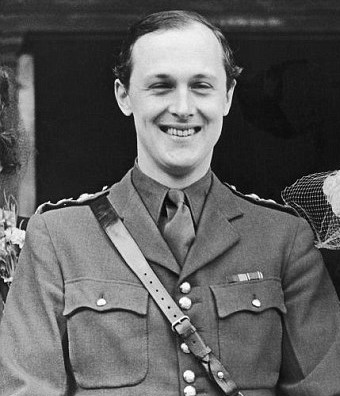
On the 8th of September, assigned to the British Guards Armored Division, the Coldstream Guards (CG) entered the still heavily defended town of Heppen, situated less than one mile south-west of their primary objective.
The following day, bolstered by the warm welcome he had received through the recently liberated towns in Northern France and Brussels, Belgium, Major William Cavendish was instructed to lead his 3rd Coy, 5th Bn CG into several attacks on a cluster of five farmhouses surrounding a road junction – the last enemy outpost before Leopoldsburg. Covered by artillery fire the Coldstream Guards desperately battled their way forward during the hand to hand fight. Leading from the front and covered by suppressive artillery fire, Cavendish charged towards Mangelschots Farm on Hoekstraat. As the Marquess of Hartington reached the back door, while preparing to lob a hand grenade into the kitchen, he was mortally wounded by a burst of gunfire from an adjacent barn.
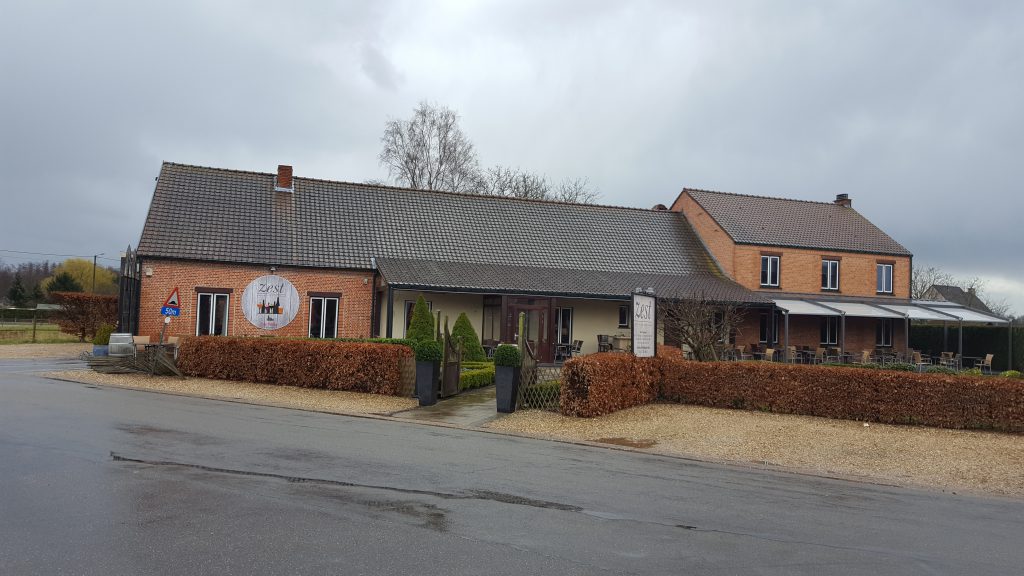
Four months earlier on May 6th, 1944, the twenty six year old Major married Kathleen at a Registery Office, on Chelsea’s fashionable King’s Road in London, England. William first met socialite Kathleen Kennedy in 1938 during a garden party at Buckingham Palace. She, also known as “Kick” was the daughter of former U.S. Ambassador Joseph Kennedy, and sister to Robert, Teddy and the future US President John F Kennedy. All students of history will know that the Kennedy’s had their fair share of tragedy including Kathleen who died in a plane crash on May 13, 1948.
Seventy years later on 9 September 2004 a monument created by Bart Heylen was unveiled by the people of Leopoldsburg to honor Major Cavendish and his men on the Hoekstraat at Heppen, opposite of the Mangelschots Farm (also known as Bistro Zest). Major William J.R. Cavendish, Marquess of Hartington, was interred at the Commonwealth Leopoldsburg War Cemetery, Belgium.
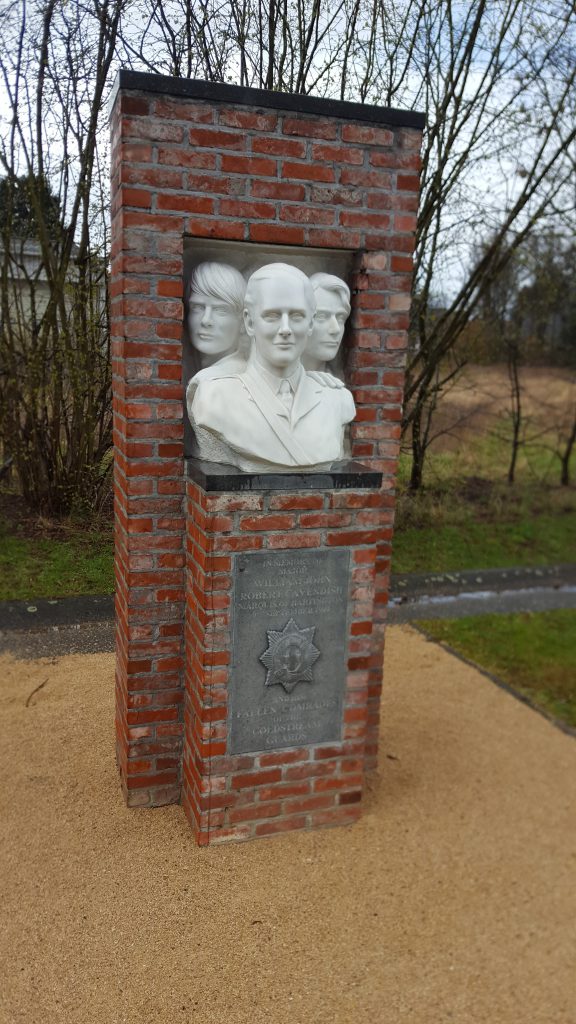
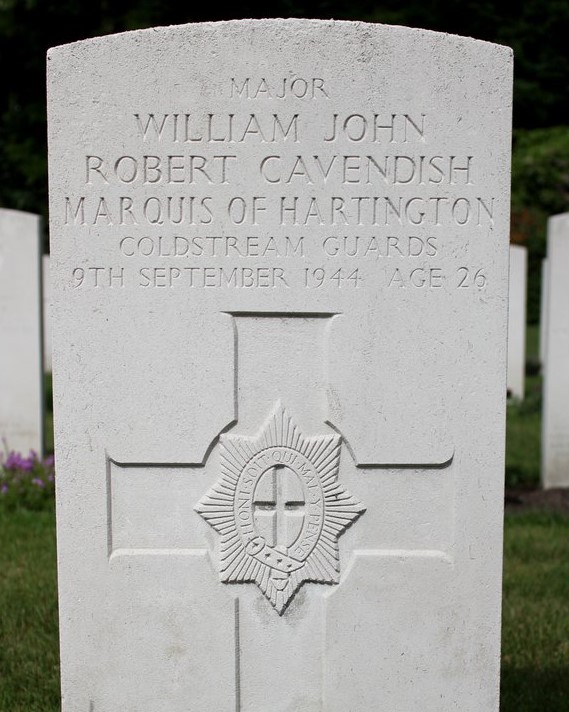
The post A Marquess for the People, A Leader for his Men appeared first on World War Media.
]]>The post Jennifer Holik appeared first on World War Media.
]]>“I’ve been in business since 2010 and since that time I’ve completed several client-based and personal long-term research and writing projects. The personal projects resulted in several books on World War II research and writing, and the development of programs to teach people live and in person. The client-based projects have varied, but one has changed a great deal in my life and business. This particular project is unlike any I’ve encountered before. “

Jennifer offers expert World War II, historical, and genealogical research services.
Being recommended by many, she has the rare expertise to:
- Locate, analyze, and interpret World War I and World War II records across all branches for military personnel, from individual soldier records, company records, and unit records.
- Reconstruct service history, even when the records burned!
- Connect the dots and piece together multiple puzzle pieces of a soldier’s story.
- Help you locate information you didn’t realize you had.
- Provide every client with a written analysis, fully sourced, report of the service history of their soldier with all documentation located.
- Connect you with researchers and tour guides in Europe to learn more about your soldier’s story or visit the battlefields.
- Can’t visit Europe? We can go where you soldier was to document the journey.
- Help you plan a trip to Europe to walk in your soldier’s footsteps.
- Write and publish a book about your family or soldier.
The post Jennifer Holik appeared first on World War Media.
]]>The post The US Airborne in England appeared first on World War Media.
]]>When one looks back at the rich history of the US Airborne, the period that stands out the most, to many, is their proud achievements during the Second World War. Of course, that’s where the Airborne story begins, and the men involved were the fathers of what has become a much loved and trusted branch of the US Armed Forces.
by Adam Berry – Author of And Suddenly They Were Gone
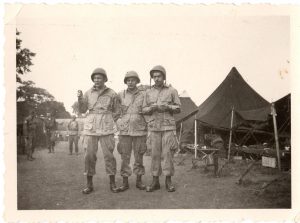
Jackson M Floyd, Joseph Lobos and Edward C Jablonski of E.Company, 508th PIR, stand in their Company Street at Camp Wollaton, Nottingham, home of the 508th PIR from March to September, 1944.
Those brave boys of the 2nd Battalion, 503rd PIR (Later to be re-designated as the 509th Parachute Infantry Battalion) who parachuted into North Africa way back in November, 1942, having suffered an arduous flight riding the steel benches of a C-47 all the way from England, kicked open a metaphorical door through which stormed some of Americas most decorated soldiers, Airborne warriors, tough paratroopers, and Generals who were most at home fighting from the Foxholes among their men. Followed by the 82nd Airborne Division into Sicily, and Italy, as the boys of the 11th Airborne Division prepared to fight the Japanese in the Pacific, the 509th PIB initiated the very first etchings of the Airborne story onto the slate.
These histories can be found in abundance, in any Library or bookshop, wherever you turn. The combat history of each Division, or each independent Battalion or Regiment, can be found with ease. Many cover the same stories, many talk of the same men, and as time marches by it becomes harder and harder to add to those histories something that people have not already read before. But why not consider the time spent out of the combat zone?
Sure, there’s plenty to be read of the training regimes undertaken in the States. The meteoric levels of physical fitness obtained, and the super dangerous parachute training that cost so many a broken bone or two – or their lives, but there’s more to it than that.
Even those early Airborne soldiers of the 509th PIB, the first to see the enemy through the sights of an M1 Rifle, trained for their Operation from campsites in England. The 101st, 82nd, and 17th Airborne Divisions all had campsites in England leading up to combat Operations in mainland Europe, and were afforded the opportunity to train in terrain almost identical to that they would face in France, Holland, Belgium, Germany, Italy, Czechoslovakia, and beyond. But again, there’s more to it than that. I often refer to those from the Airborne Divisions as “boys” because, let’s face it, that’s what they were. Bob Murphy, a Pathfinder with A Company, 505th PIR, was just 17 years old when he first faced an enemy soldier. I write this as a 29 year old with no military background, but I find it incomprehensible to think about doing the same at the age of 17. What were most males doing at 17? Chasing girls, playing Football, doing homework for High School, cleaning their new car? It’s fair to assume that the combat in Sicily and Italy made Bob Murphy grow up, and fast, but when he reached England with his Regiment, and found his campsite to be located in the quaint Leicestershire village of Quorn he was, after all, still only 18 years old and that adolescent excitement was still ripe in him.
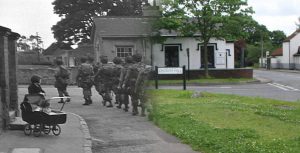
Paratroopers of the Demolition Platoon, Regimental HQ, 507th PIR, march through the village of Plumtree, Nottinghamshire, close to their campsite at Tollerton Hall at the end of May, 1944. The following day these men were trucked to their embarkation airfields for D-Day.
England was a new country to all but for a select few who had perhaps been lucky enough to visit before war broke out. Many had heard of the incessant bombings by the Luftwaffe, and of the rationing that had many families struggling for food each week, and expected to arrive to war-torn shores much like those they had encountered in Italy. The reality, however, was somewhat different.
As a Brit, I am proud of the resilience and stubbornness our country showed in the face of adverse conditions, and how we held our chins aloft and got on with life day in, day out, maintaining the small things that make us what we are. This is something that immediately struck members of the 82nd Airborne Division when arriving in England. Where were the shattered streets? The smoldering factory buildings or the ruins of terraced houses? England was alive, and kicking, and when the “Capetown Castle”, carrying the 504th PIR into Liverpool harbor fresh from the horrific combat at Anzio, pulled up against docks, there was such an air of excitement amongst the Paratroopers on board that all rushed to one side of the vessel causing it to list heavily. They were amazed by what they saw. Pleasure boats, adorned with scantily dressed young women, sailed by. The streets were clean, with locals waving, welcoming their American cousins ashore. Gardens with rose bushes, and immaculately maintained allotments of vegetables stretched as far as the eye could see, and finally those boys of the 504th found the smile that many thought they had lost forever in the mud of Anzio.
Liverpool was nice, but after a train journey of a few hours had carried the men 100 miles South, they finally found themselves in their new home, a tented Camp just slightly South of the Leicestershire village of Evington. Many couldn’t believe their luck, the area was beautiful countryside, so green and lush, and Evington itself was the sort of English village some had read about in books. They were also within walking distance of Leicester, the nearest City to their camp, where there were more pubs and clubs than one man could ever need.
Elsewhere the other Regiments of the Division had already been in the country for a few months. The 505th PIR in Quorn, and the Glider-Riders of the 325th in Scraptoft. Luckier still, Airborne Artillerymen of the 456th Parachute Field Artillery, and the 319th and 320th Glider Field Artillery Battalions found their campsites to be in the grounds of incredible English country homes, such as Highfields House and Papillon Hall. These buildings pre-dated any that could be found in America, and represented history that those camped there had never seen before. Joined by the 507th and 508th PIR’s in Nottinghamshire, the Division was now fully assembled across campsites in Leicestershire/Nottinghamshire area and ready for a period of rehabilitation to bring it back up to scratch, both in terms of numbers and the standard on which the Division had built a fearsome reputation.
Training was conducted in the fields around their campsites, route marches took them to live firing ranges established in valleys or parkland requisitioned by the Government, and rehearsal parachute drops were conducted as and when they could be planned with the Air Force. Inevitably, fatalities took place, mainly on the Parachute jumps but also in considerably violent circumstances. Two members of the Division were stabbed to death in riots involving black soldiers in Leicester in which it is believed members of the 504th PIR attempted to take over a pub reserved for use with black soldiers. These deaths led to more violence, but the impending invasion of Europe brought a welcome distraction and ended those hostilities.
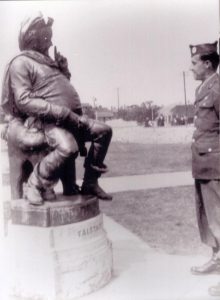
PFC William Connelly, HQ Battery, 376th PFAB on Furlough in Stratford-Upon-Avon, England.
The most vitally important aspect of the Divisions presence in England, however, was the relationships established with the English populace, and the care shown to those “boys” that were so, so far from home. It is estimated that in excess of 80,000 GI’s married British girls during the war, and of that number many involved members of the 82nd. They included, to name but a few, PFC Tony De Mayo, a Pathfinder with the 505th PIR, William Mulligan of F Company, 505th PIR, and Herb Huebschen of the 325th GIR. Another was SGT George F Huston, of the 505th PIR, a man who jumped from the same aircraft as (the then) Colonel James Gavin over Italy. Motherly instincts also took over, as those who had already lost sons to the war in one way or another took GI’s into their homes as if they were members of their own families. Many offered up food and drink that had become so hard to obtain through rationing that they ate less as a result. But to them it didn’t matter, because as far as they were concerned they were offering up a final dose of comfort to guests who would soon be headed off to war again, with many meeting violent deaths. One must take a second to remember the discomfort these young boys felt in being so far away from home, yet the love and gratitude most experienced in the presence of English hosts in the months and weeks leading up to their deployment to a combat zone must have eased that discomfort significantly. When the Division disappeared, for what we now know to have been the spearheading of the invasion of Europe, English families across the country felt the tremendous loss almost as much as their real families did back home in the States. What’s more, when they returned as battered, bruised remnants of the Divisions that had left, the English mourned those had had been killed.
One English girl, 16 at the time, was befriended by a paratrooper of the 505th called John W O’Daniel Jr. As it happened, O’Daniel Jr was the son of John W O’Daniel Sr, who at the time Commanded the 3 rd US Infantry Division. O’Daniel Jr was killed in action in the Dutch City of Nijmegen, on 19 September, 1944. The young girlfriend he left behind still, to this day, thinks about him and struggles to contain her emotions when she thinks about his death. This is not only because of the strong emotional bond she had developed with him, but also because of the real tragedy that is the loss of such a young man, with plenty of life still left to live. Of course, this rings true across the entire Division. Young men were lost in too great a number, and some would never be given the chance to truly appreciate their reasons for fighting. They did what they did, without question and without any doubt that what they were doing was right, and ultimately we as a nation (Great Britain) owe an incredible debt to those who came here, stole our hearts, and gave everything they had to rid Europe of such an evil tyranny.[/read]
The post The US Airborne in England appeared first on World War Media.
]]>The post Tips For Starting Your WWII Research appeared first on World War Media.
]]>I’ve observed a lot of conversations on Facebook in various WWII groups the last couple of months, in which people ask how to proceed with WWII research. The information in these groups is often helpful but often, the members do not have a firm grasp on how to proceed without wasting a lot of time and money.
by Jennifer Holik

Many people have a general idea of which battles their relative participated in and often a Division or Unit. Rarely do they have a timeline of service created or know specifically when the soldier was in each unit and where he was. Too often, people assume their soldier was with a particular unit the entire war. Unfortunately this is usually not the case. Soldiers were often transferred within a Division to different companies. In many cases, they were transferred from their Division into a replacement depot and into an entirely new Division. Soldiers who were wounded and did not return to their original unit within 30 days were often sent to a replacement depot to await a new assignment.
Heading straight into unit records based on limited knowledge may cause you a lot of wasted time and potentially money if you request records or hire a researcher, without first knowing for sure where your soldier was and in which unit. I’ve heard of many people just pulling unit records and later discovering their soldier was not with that unit except for a few days or weeks.
When I comment in these groups I try to stress there is a process by which we do this research. I also stress the importance of hiring a researcher to help you obtain some or all of the records. WWII research is not free no matter how you do it. When you follow the process, you will often end up saving yourself a lot of time and money. To help you understand a bit about the process, I have several tips for you.
1. Create a Timeline of Service
The first thing you should do is create a timeline of service based on what you know about your soldier’s service history. A timeline should list the date (either full or a year) and the event which happened. Noting where you found that information, even if it was a family story, is important. A timeline of service may look like the following:
January 1942 – Adam Jones joins the 1st Infantry Division
November 1942 – North Africa Campaign
July 1943 – Sicily Campaign
30 July 1943 – Wounded in the Sicily Campaign
February 1944 – Hospitalized in England
June 1944 – Normandy – D-Day Campaign
2. Do your homework
After you create a general timeline, search your home and ask your family to look for documents and photographs that provide clues.EVERY clue you find may help, even if it conflicts with another piece of information you have. Write it all down and cite the source.
Look at the Checklists and Forms I provide on this site for help with your homework. There are many resources each of us has within our home that we might not consider have information.
3. Obtain the OMPF and Company Reports
Next, order the Official Military Personnel File (OMPF) from the National Personnel Records Center (NPRC) in St. Louis, MO. You need several pieces of information, if possible, when submitting a request.
Soldier’s full name
Date and place of birth
Service Number (this is not the individual’s Social Security Number)
Branch of service
Dates of service (enlistment, discharge or death)
Theater(s) of war
Unit(s) in which he or she served
The least expensive way to begin a search is to fill out Form 180 on the NPRC website (http://www.archives.gov/research/order/standard-form-180.pdf) and see if the file survived. If records are discovered, NPRC will send you a letter indicating such, as well as your fee for copies. Form 180 will ONLY search personnel records.
National Personnel Records Center
1 Archives Drive
St. Louis, Missouri 63138
You can visit the NPRC in-person, but there is a procedure for doing so. Visit their website for current rules regarding making an appointment, what is allowed in the research room, and how to request files and microfilm.
Another option is to hire a researcher, such as myself, who is able to obtain and analyze the records available. There are many more valuable records at the NPRC besides the service files, such as Morning Reports, that Form 180 will not search for you.
4. Analyze the Information & Start Writing the Story
One of the most important parts of the research process is writing the story. Writing does not necessarily mean you need to publish a book. Writing the story allows you to see where there are errors or gaps in your research. It allows you to formulate new research questions and therefore search for new materials.
When you obtain new information, add it to your timeline of service. Analyze the information and go through all your previously obtained records with a fine tooth comb. Make sure you understand what information is presented, especially if any of it conflicts. People made mistakes in records then just as we do today. No one is perfect.
5. Look for Unit Records
Finally, once you have a firm understanding of which units your soldier was in and when, you can begin looking for unit records. These records will provide a greater context of battles and additional training your soldier received. You may not locate your soldier’s name in many of these records but you will understand the battles and overall context of the war.
Learn more about research and Jennifer’s work: JENNIFER HOLIK
Recommended
The post Tips For Starting Your WWII Research appeared first on World War Media.
]]>The post To the German Commander: NUTS! appeared first on World War Media.
]]>On December 22, 1944, at about 11:30 in the morning, a group of four German soldiers, waving two white flags, approached the American lines using the Arlon Road from the direction of Remoifosse, south of Bastogne. The group consisted of two officers and two enlisted men. The senior officer was a Major Wagner of the 47th Panzer Corps. The junior officer, Lt. Hellmuth Henke of the Panzer Lehr Operations Section, was carrying a briefcase under his arm. The two enlisted men had been selected from the 901st Panzer Grenadier Regiment. – By Kenneth McAuliffe
The Americans defending in that location were members of F Company of the 327th Glider Infantry Regiment, 101st Airborne Division. The Germans walked past a bazooka team in a foxhole in front of the Kessler farm and stopped in front of the foxhole of PFC Leo Palma, a B.A.R. gunner. Palma described the officers as wearing long overcoats and shiny black boots. Lieutenant Henke, who spoke English said, “I want to see the commanding officer of this section.” Palma was at a loss for words, but Staff Sergeant Carl E. Dickinson who had been manning a position nearby walked out to the road and called the group over to him. The Germans explained that they had a written message to be presented to the American Commander in Bastogne.
SSGT Carl Dickinson 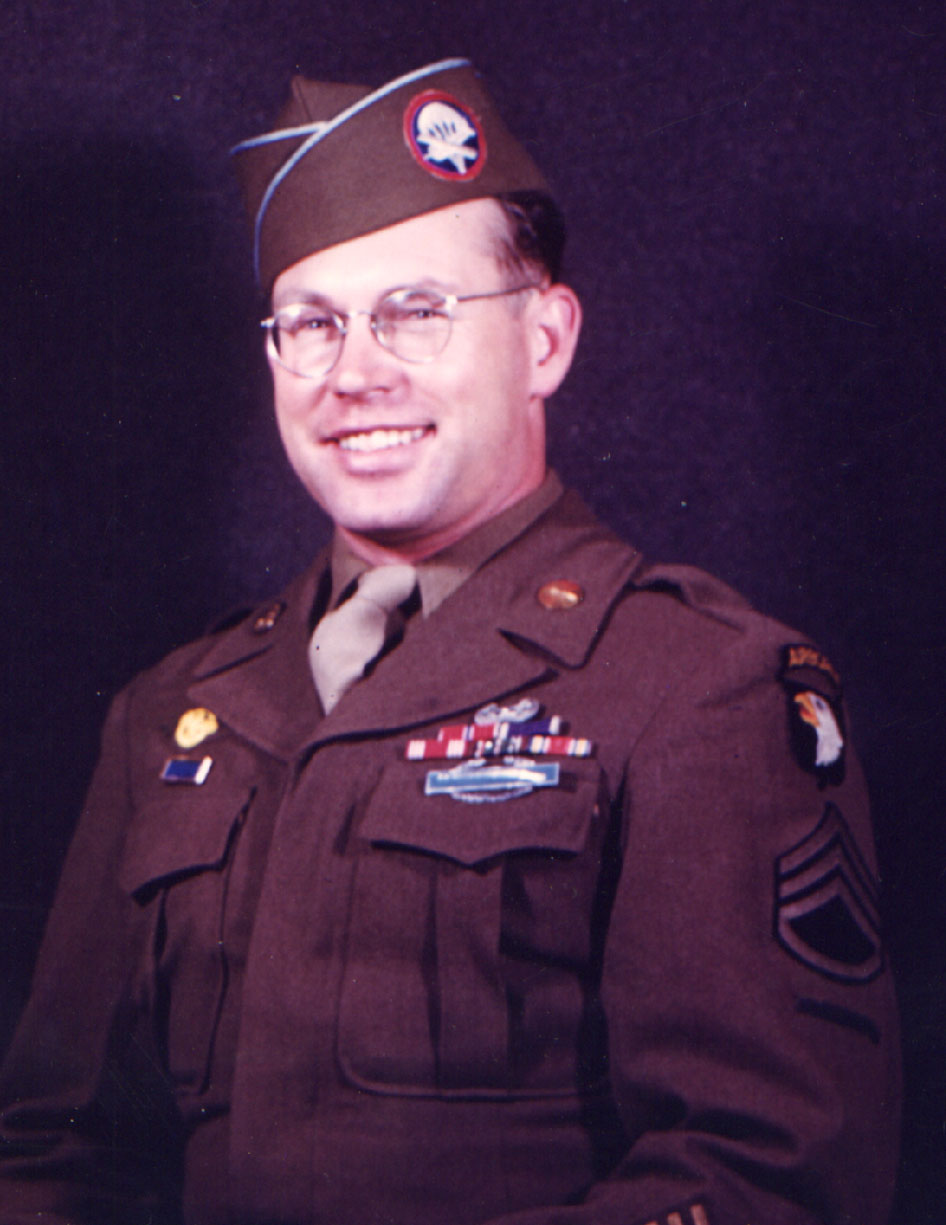
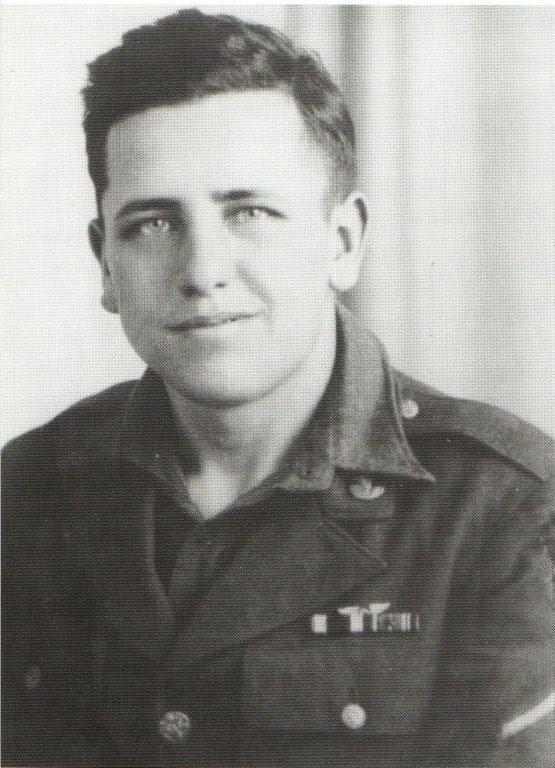 PFC Ernest Premetz
PFC Ernest Premetz
Henke said they would consent to being blindfolded and taken to the American Commanding Officer. In fact, they had brought blindfolds with them. Henke blindfolded Wagner and Dickinson blindfolded Henke. As the blindfolds were being applied, Dickinson was joined by PFC Ernest Premetz, a German-speaking medic of his platoon who offered to serve as an interpreter. However no interpreter was needed.
Dickinson and Premetz left the two German enlisted men there and took the two German officers to the Kessler farmhouse. Tech. Sgt. Oswald Y. Butler, Acting Platoon Leader of the 1st Platoon, and Lt. Leslie E. Smith, Platoon Leader of the Weapons Platoon, told them to take the blindfolded officers to the F Company Command Post. They took the two German officers on a roundabout route to the Command Post of F Company, 327th GIR, which was a large foxhole located in a wooded area about a quarter mile away. Shortly after arriving at the command post, they were joined by Capt. James F. Adams, the F Company Commander, who had been at a forward observation post when he was notified of the arrival of the Germans.
When Adams arrived, 1st Sgt. Constantine A. Pappas informed him that the German major had already presented a written message. The F Company Executive Officer, Lt. William J. Herzke, was on the phone, reading the message to their Battalion Command Post in Marvie. The 2nd Battalion Command Post then notified the 327th Regimental Headquarters in Bastogne. Col. Bud Harper, the 327th Regimental Commander, was not there; he was out inspecting his unit’s positions. The senior officer present was the Regimental Operations Officer, Major Alvin Jones. Maj. Jones notified the Division Headquarters in Bastogne and asked for instructions. He was told to retrieve the message and bring it to the Division Headquarters. He drove to the F Company Command Post and was given the message. The two blindfolded officers were kept in the woods adjacent to the foxhole Command Post.
Upon receiving Maj. Jones’ phone call at Division Headquarters, the Acting Chief of Staff, Lt. Col. Ned Moore entered Brig. Gen. Anthony C. McAuliffe’s sleeping quarters adjacent to the communications center. Moore wakened McAulliffe and told him, “The Germans have sent some people forward to take our surrender.” Moore recalled that Brig. Gen. McAuliffe, still half asleep, said “Nuts!” and started to climb out of his sleeping bag.
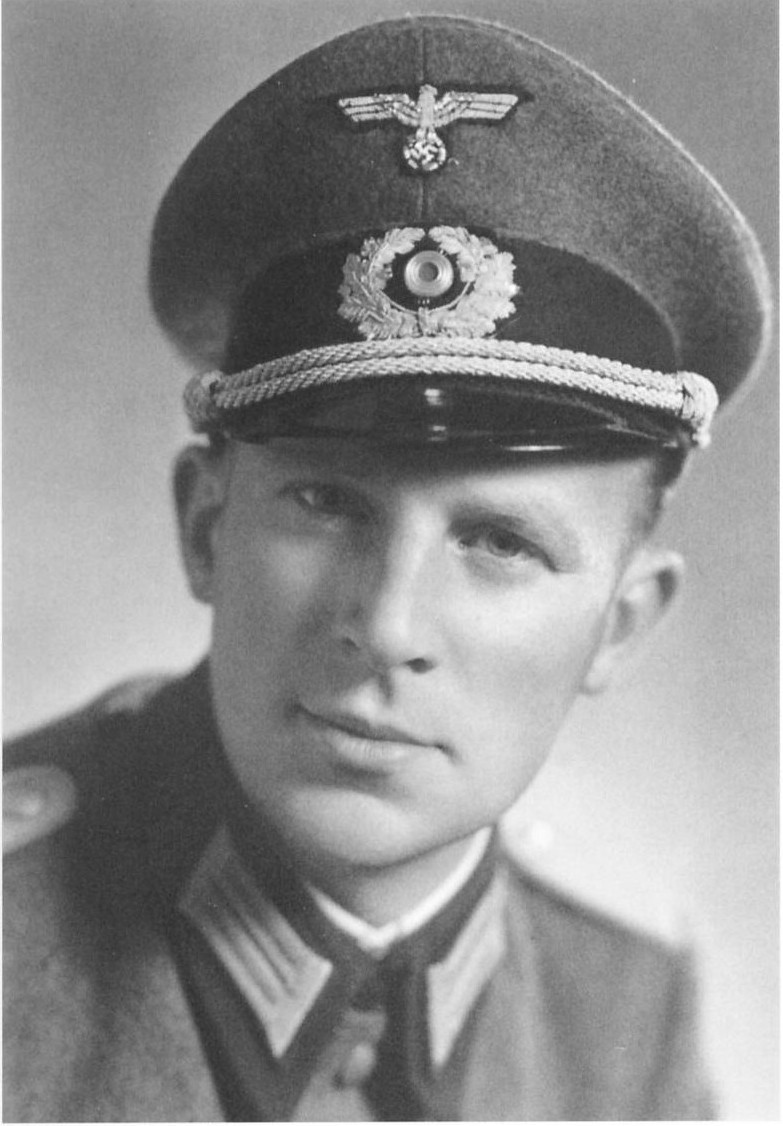
Lt Hellmuth Henke
Moore then went back out into the Communications Center where he briefed the rest of the Division staff of the on-going situation, including telling them of McAulliffe’s remark of “Nuts!”
When Maj. Jones arrived with the message, the staff looked at it before taking it in to McAulliffe.
The German surrender demand was typewritten on two sheets. One was in English, the other in German. They had been typed on an English typewriter as indicated by the fact that the diacritical marks required on the German copy had been entered by hand.
This is the English version of the message:
“December 22nd 1944
To the U.S.A. Commander of the encircled town of Bastogne.
The fortune of war is changing. This time the U.S.A.
forces in and near Bastogne have been encircled by strong
German armored units. More German armored units have crossed
the river Ourthe near Ortheuville, have taken Marche and
reached St. Hubert by passing through Hompre-Sibret-Tillet.
Libramont is in German hands.
There is only one possibility to save the encircled
U.S.A troops from total annihilation: that is the honorable
surrender of the encircled town. In order to think it over
a term of two hours will be granted beginning with the
presentation of this note.
If this proposal should be rejected one German
Artillery Corps and six heavy A. A. Battalions are ready
to annihilate the U.S.A. troops in and near Bastogne. The
order for firing will be given immediately after this two
hours’ term.
All the serious civilian losses caused by this
artillery fire would not correspond with the wellknown
American humanity.
The German Commander.”
The Division Operations Officer, Lt. Col. Harry Kinnard recalled that McAulliffe initially asked, “They want to surrender?” Moore told him, “No sir, they want us to surrender.” McAulliffe arose and erupted in anger, which shocked those looking on. He took the paper, looked at it, said “Us surrender, aw nuts!” and dropped it on the floor. Maj. Jones was dismissed. McAulliffe then left the Headquarters to go congratulate a unit on the Western perimeter that had successfully taken out a German road block earlier that morning.
When Jones left the Headquarters, he went back to the F Company Command Post and spoke with the two German officers. When he returned to his Regimental Headquarters, he phoned the division headquarters.
Upon returning to the division headquarters, McAulliffe was informed that Jones had phoned to say that the two German officers were still waiting at the F Company Command Post. Since they brought a formal demand they felt they were entitled to a formal reply and they were to return to the German lines two hours after delivering their message.
McAulliffe asked that Col. Harper be summoned to the Division Headquarters. Harper, who was still inspecting his units’ positions, was contacted by radio.
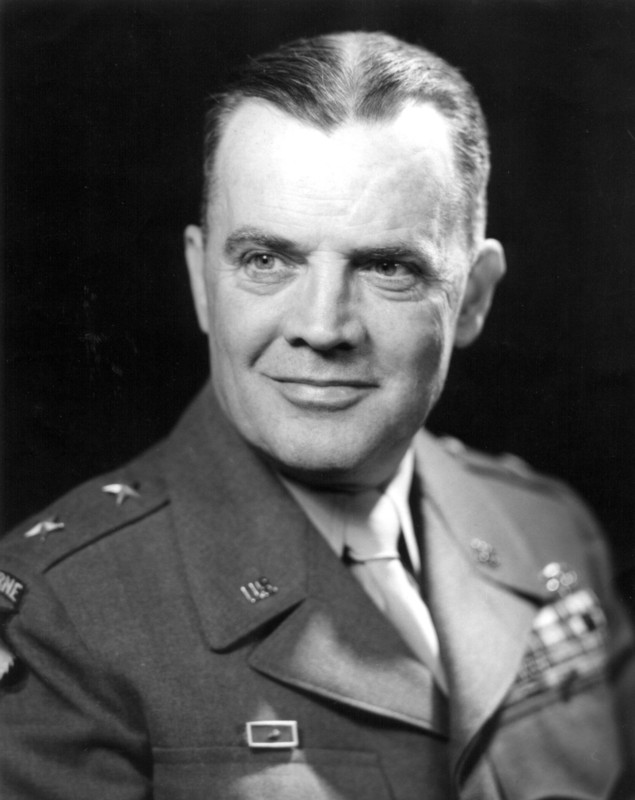
Brig Gen Anthony C McAuliffe
When Harper arrived at the Headquarters, he was asked to wait outside of the closed door to McAulliffe’s quarters. Inside, in the presence of his staff, McAulliffe wondered aloud, “Well, I don’t know what to tell them.” At that point, Kinnard said, “What you said initially would be hard to beat.” McAulliffe asked “What do you mean?” Kinnard, said, “Sir, you said nuts.” All members of the staff enthusiastically agreed, so McAulliffe wrote it down on a message pad and said, “Have it typed up.”
The reply was typed up, centered on a full sheet of paper. It read:
“December 22, 1944
To the German Commander,
N U T S !
The American Commander”
McAulliffe dismissed the staff and asked that Harper come in. McAulliffe initially toyed with him by having him stand in front of Higgins and himself. McAulliffe showed him the surrender demand and asked if he had already seen it. Harper said no. McAulliffe asked him to read it and suggest how it should be answered. Harper was surprised by the request and quickly tried to draft a reply in his head. At that moment, a clerk-typist entered the room and handed McAulliffe a sheet of paper. He looked at it and then showed Harper the typed “NUTS” reply, asking him if he thought that was a proper reply. Harper read it and started laughing. McAulliffe asked Harper to personally deliver the reply to the Germans, cautioning him not to go into the German lines.
Harper took the reply and drove to the F Company Command Post. Harper told Henke that he had the American Commander’s reply. Henke asked if it was written or verbal. Harper answered it was written and he put it in the hand of the blindfolded German Major. Henke asked about the contents of the reply because if it was affirmative, they were authorized to negotiate further. Harper said, “The reply consists of a single word, NUTS!” Henke, not understanding, asked, “Is that reply negative or affirmative?” Harper said, “The reply is decidedly not affirmative”, adding, “If you continue this foolish attack, your losses will be tremendous.” Henke translated for the Major. The Major nodded.
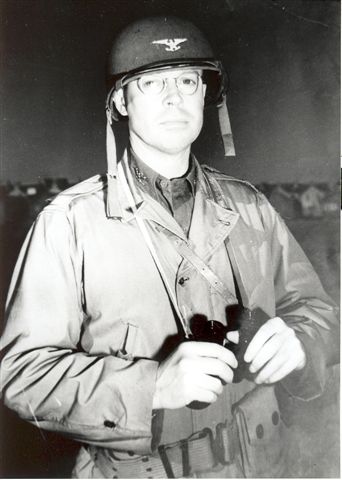
Col ‘Bud’ Harper 327 GIR
The two blindfolded German officers were then driven, again by a roundabout route, back to their entry point at the Kessler farm. At the farm, the group was rejoined by PFC Premetz. The blindfolds were removed and the Germans opened and looked at the reply. They asked, “What does this mean?” They obviously didn’t understand the American slang. Harper and Premetz discussed how to explain it. Harper suggested, “Tell them to take a flying s**t!” Premetz thought about it, then straightened up, faced the Germans and said, “Du kannst zum Teufel gehen.” He told Harper it meant “You can go to Hell.” Then Harper said, “If you continue to attack, we will kill every goddamn German that tries to break into this city.” Henke replied, “We will kill many Americans. This is war.” Harper then said, “On your way Bud, and good luck to you.” After Henke translated, the major acknowledged. They saluted and the Germans started to walk away. Harper angrily called out to them, “If you don’t know what I am talking about, simply go back to your commanding officer and tell him to just plain, ‘Go to Hell’.” After Henke translated, the major got angry and stormed off. As he passed Palma’s position, he threw his blindfold and Palma caught it. Palma wrote that he didn’t realize the historical importance of that blindfold. He later used it to clean his B.A.R. and threw it away!
The German party returned to their lines. Capt. Adams recorded the time as 1400 hours.
While watching the Germans leaving, Harper began to regret losing his temper, fearing that his attitude may increase the intensity of the attack on his positions. Fortunately, the threatened artillery barrage never happened. Instead, the German Luftwaffe was added to the attack, bombing the town at night.
According to a narrative written by Hellmuth Henke, when the German officers returned to their vehicle, while they were putting their pistol belts back on, Maj. Wagner removed his pistol from his trouser pocket and placed it in its holster, stating that he wasn’t going to get caught without protection.
The two German officers then drove to the 901st Panzer Grenadier Regimental headquarters in Lutrebois. After reporting in, they left to go to the Panzer Lehr Division headquarters located about a mile further south. Just before reaching the Panzer Lehr Headquarters, they saw the car of General von Manteuffel parked by a thicket of trees. Maj. Wagner stopped and reported to the General. They then proceeded to the Panzer Lehr headquarters. General von Luettwitz, the Corps Commander, happened to be there. They presented the “NUTS” reply. Upon hearing the negative reply, General Bayerlein, said it was time to start striking out with the heavy artillery located behind the hill. He was interrupted by General von Luettwitz who stated that the heavy artillery was no longer located there, it had been moved to forward positions past Bastogne. Bayerlein then started to explain how he would attack Bastogne without the heavy artillery, but was again interrupted by von Luettwitz. Von Luettwitz reminded Bayerlein that Bastogne was not his objective and ordered the Panzer Lehr Division to proceed around Bastogne to Rochefort and leave Bastogne to the 26th Volksgrenadier Division.
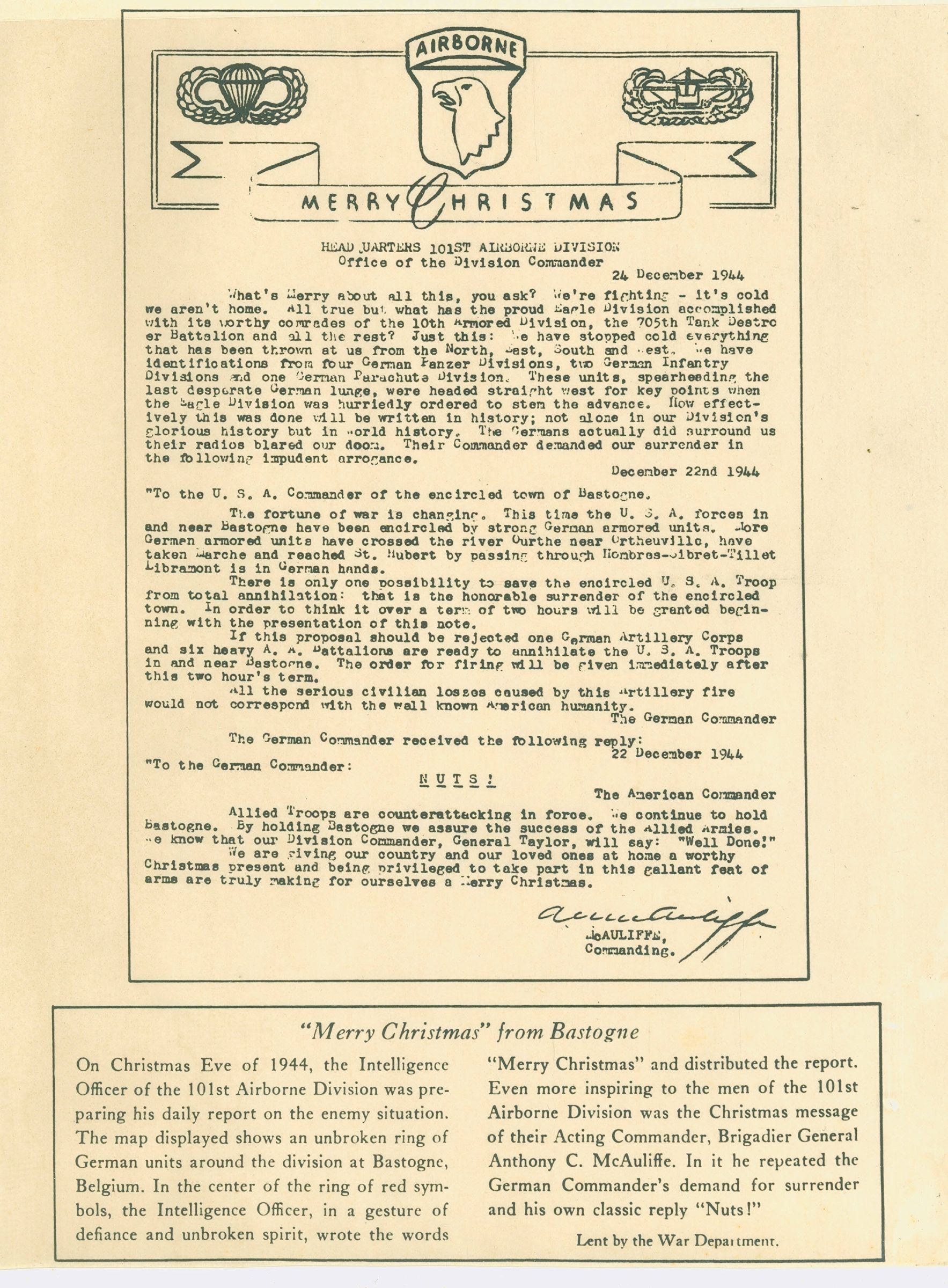
The post To the German Commander: NUTS! appeared first on World War Media.
]]>The post The P-40 Warhawk of World War II appeared first on World War Media.
]]>On Saturday, December 6, 1941 some of the aircraft of the 47th Pursuit Squadron/15th Fighter Group were temporarily based at the auxiliary airfield near Haleiwa on the north shore of the island of Oahu in the Territory of Hawaii. Little more than a grassy strip between the Kamehameha Highway coastal road and the beach, Haleiwa field could not have been more primitive.
By Martin K.A. Morgan
It lacked hangars, landing lights and even a control tower. Despite the absence of proper airfield facilities, the 47th Pursuit Squadron was at Haleiwa to conduct gunnery qualification. In support of that training, the ground crews had fuel trucks and large quantities of ammunition on the field.

When Japanese aircraft attacked Oahu the following morning, several of the squadron’s pilots rushed to their aircraft at Haleiwa to take to the skies and fight the enemy. Two of those pilots, 2nd Lt. Kenneth M. Taylor and 2nd Lt. George S. Welch, boldly joined the battle and managed to shoot down enemy aircraft. Thus on the first day of World War II for the United States, Taylor and Welch faced unbelievable odds and fought back against the Japanese. Both young officers were ultimately awarded the Distinguished Service Cross for what they did on Sunday, December 7, 1941 .

The weapon that Taylor and Welch used that morning was one of the most legendary aircraft ever to fight for the United States – the mighty Curtiss P-40 Warhawk. Developed as an improvement over the P-36 Hawk, the P-40 offered greater speed and performance mainly because its Allison V-1710 V12 in-line engine gave it a more streamlined fuselage that reduced drag. In 1937, Germany adopted the Messerschmitt Bf-109 and Japan adopted the Mitsubishi A5M. When the P-40 first flew the following year, it promised to give the U.S. Army Air Corps the advantage of one of the world’s most advanced air superiority fighters. As political tensions in Europe and Asia worsened, it looked as if the United States would soon need the Warhawk.

Although the P-40 experienced its baptism to combat during vicious dogfights in the skies over Hawaii on Sunday, December 7, 1941, it faced the enemy again just 12 days later in the skies over China.
On the morning of December 20th, a group of ten Japanese Ki-48 Lily light bombers from the 21st Hikotai took-off from their base in Hanoi, Indochina and proceeded northwest toward the southern portion of China’s Yunnan Province. As the Ki-48s approached the city of Kunming two hours later, they were attacked by a group of fighters they had never seen before – fighters that carried the national insignia of China – fighters that had very distinctive shark’s teeth painted on their noses. For the next 30 minutes, these new fighters engaged the Japanese aircraft in a running battle, swooping in and out of their formation until only one bomber was left fleeing back toward Hanoi. One of the crewmembers on the lone Ki-48 that survived the encounter later described the attacking pilots as “extraordinarily brave.” The Japanese had just met the Flying Tigers for the very first time and they had just seen what the mighty P-40 Hawk could do. Among the most famous fighting units of the Second World War, the Flying Tigers were officially known as the 1 st American Volunteer Group – or the AVG. The group consisted of at first two and later three fighter squadrons with attached ground personnel. The AVG’s pilots were recruited from the ranks of the pre-war Army Air Corps, Marine Corps and Navy and they volunteered to help defend China from the forces of the Japanese empire.

To support the AVG, the US government sent 100 P-40Bs to China via the port of Rangoon, Burma during the spring of 1941.
The pilots and ground crew followed soon thereafter traveling on civilian passports. At first the group was based at a former British airfield near the ancient walled city of Toungoo on Burma’s Kittang River. There, they began preparing to face the enemy while their Warhawks were being reassembled, tested and readied for war. Ultimately, two of the group’s squadrons were based near Kunming and one was based at Mingaladon Airport near Rangoon. Once operational, the Flying Tigers began taking a heavy toll on the enemy in air combat over Burma and China. Between their first battle over Kunming on December 20, 1941 and their final battle over Hengyang on the 4th of July 1942, the group destroyed over 200 Japanese aircraft. Outnumbered in almost every engagement, the AVG lost many of the original delivery of 100 P-40Bs to operational accidents and action with the enemy. To replace those losses, the group received 50 P-40Es near the end of its combat tour. When the American Volunteer Group officially disbanded, it became the 23rd Fighter Group/XIVth U.S. Army Air Force but it kept the nickname Flying Tigers. With a long list of triumphs and a roster that included such notable individuals as Claire Chennault, Pappy Boyington, Tex Hill and Bob Scott, it only makes sense for the name to live on.

Although the P-40 became an icon of the American fighting spirit in World War II thanks to the epic exploits of the Flying Tigers, it did not just fight in the China-BurmaIndia theater. The Warhawk also fought in the Aleutian islands, New Guinea, the Solomon Islands, the Philippines, the Near East, North Africa and Italy. It even equipped U.S. allies like the French, the British and the Soviet Union (who called it the Tomahawk and/or Kittyhawk). Although the P-40 was a warrior on almost every fighting front of the Second World War, the Allison V-12 engine’s lack of a two-stage supercharger limited the aircraft’s high altitude performance. This placed the it at a disadvantage in comparison to some of Germany’s fighters and meant that the Warhawk could not compete in the fiercely competitive high-altitude combat environment in the skies over Northwest Europe. Nevertheless the P-40 remained the mainstay of Army fighters until 1943. It was even flown by the pilots of the 99th Fighter Squadron – the famed Tuskegee Airmen. When deliveries of the aircraft concluded in 1944, the Curtiss-Wright Corporation in Buffalo, New York had built 13,738 Warhawks at a maximum cost of $44,892 per airframe. When you consider that the P-40 held the line during a critical time in the war, that cost was quite a bargain.
The post The P-40 Warhawk of World War II appeared first on World War Media.
]]>The post That Fatal Missile appeared first on World War Media.
]]>On 12 December 1937 the United States gunboat USS Panay (PR-5) was sunk by aircraft of the Japanese Imperial Navy while anchored on the Yangtze River in China. Although probably unintentional, this attack exacerbated the already tense relationship between the Japanese and American governments. The sinking of the Panay constituted the most serious affront to the presence of American military forces in China, presented a very real challenge to the peaceful relations between the United States and the Empire of Japan, and provided the United States with proof positive as to the Japanese military’s control over the development of Japanese foreign policy.
by Martin K A Morgan
THE PANAY INCIDENT AND THE INEVITABLE TUMBLE TOWARD WORLD WAR II IN THE PACIFIC
IN MEMORY OF THE ILL-FATED CRAFT PANAY AND HER CREW
‘Beguiled by the rough mischievous waves and amid the din and turmoil of the battle, the heroes of the air, eager to chase the fleeing foe bombed, alas! by mistake, a ship not of the enemy but of the friendly neighbor country, which sank with a few sailors aboard.The source of the nation-wide grief, which knows no bounds, that fatal missile was.’ (note presented to Ambassador Joseph Grew by a Japanese civilian).
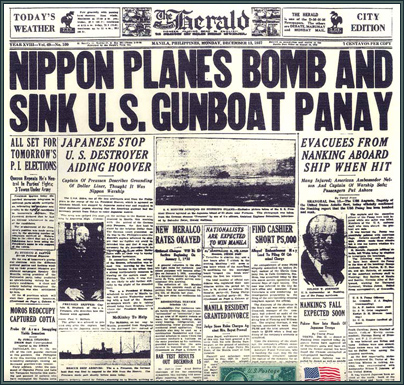
The USS Panay, a shallow draft gunboat designed specifically for riverine operations, displaced a mere 450 tons. Its armament consisted of only ten .30-cal. Lewis guns and a pair of 3 inch naval guns. River patrol craft by the very nature of their intended purpose are built under the restrictions imposed by the close quarters of their operating environment, and as a result are not very heavily armed. Eight vessels similar to the Panay made up the U.S. Navy’s Yangtze Patrol. Command and control fell on the shoulders of Admiral Harry E. Yarnell, Commander-in- Chief of the United States Asiatic Fleet who directed the Yangtze Patrol from his flagship USS Luzon (PG-47). The need to post a contingent of U.S. Navy patrol craft on the Yangtze grew out of the need to protect American citizens and business interests in China. China had not long before been the home of organized bandit armies that struck with impunity in a constant search for plunder. For a short period of time Americans fell victim to these bandits and American businesses lost a great deal of money as a result, but the United States government quickly responded by creating the Yangtze Patrol. The program successfully eliminated the once threatening bandits. However, its role dramatically changed in 1937.
[read more=”Read more” less=”Read less”]The bandits no longer concerned the U.S. Navy, instead their mission took the form of protecting Americans from the rampage of war. On 7 July of that year Chinese troops supposedly fired on Japanese troops on maneuvers in the vicinity of the Marco Polo bridge outside of Nanking. This action gave the Japanese an excuse to “reinforce” their garrisons in Nanking and Tientsin. The “reinforcement” soon matured into an invasion. Whether or not the Chinese provoked the incident at the Marco Polo Bridge is of little concern because the savage war that followed upstaged the responsibility question. This created an uncomfortable situation. The Yangtze Patrol had to remain neutral to the struggle being played out around it. The conflicts of the 1930s offered a preview of the true scope of total war. Civilians lose their lives to the fighting at almost the same rate as soldiers in “total war”. Even in the darkest days of the World War, casualties among non-combatants rarely occurred. In Spain, the Basque capital of Guernica became the world’s first victim of heavy bombing raids. In Africa the Italians conquered Ethiopia with little trouble. The contest for China shared that brutality. As a result of the unrelenting offensive the Japanese waged against the Chinese, civilians suffered. Chinese civilian casualties as well as Western civilian casualties shocked the world. The Japanese military became so accustomed to striking without regard to the combatant or non- combatant status of a potential target that they engaged civilian installations without consideration as to their nationality. The American Ambassador in Japan, Joseph C. Grew, issued instructions for the painting of American flags on all American churches, schools, and hospitals. In spite of such obvious markings, and in spite of being provided with maps indicating their locations, the Japanese still bombed and strafed these targets. Japanese pilots demonstrated a blindness to American flags early in the China campaign and as a result a number of American missionaries and their families died. Even though between 200 and 300 such “accidents” took place, the outrage of the American public had yet to be aroused. All of that changed in December 1937.
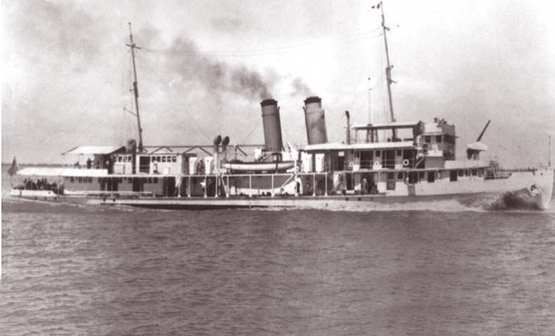
The port city of Shanghai capitulated on 12 November 1937 after a total of 92 days of siege on the land, in the air, and on the sea. With that, the Japanese had gained control of the headwaters of the Yangtze. The Japanese offensive in China was then aimed 200 miles upriver at the city of Nanking. When it became clear that the Chinese intended to defend the city, and that the Japanese intended to attack as they did in Shanghai, preparations for battle commenced. On 22 November came the evacuation order which affected most of the U.S. Embassy staff in Nanking. Embassy personnel boarded the USS Luzon which withdrew to the relative safety of Shanghai and a small contingent of staff remained to communicate the unfolding events in the city to the outside world and to protect a few stubborn westerners determined to stay in Nanking. Businessmen and reporters made up the group of civilians who remained. To provide for the evacuation of these westerners, the USS Panay stayed behind.
Japanese bombers raided the city in preparation for a ground assault, and thereby created a critical situation. In addition to the Panay, several other neutral vessels remained moored to the docks at Nanking. This information was communicated to the Japanese government through the American Ambassador in Japan. The situation deteriorated to the point that, on 7 December all westerners boarded neutral vessels at night for their own protection. During the day, the civilians could come and go as they pleased to take care of business. This lasted until 9 December when Japanese machine gun nests began to spray the walls of the city with bullets. On that day the westerners returned to the Panay for the evening by 1500 only to learn that the Japanese had urged all foreign nationals to evacuate the city. Panay and several other neutral vessels then proceeded up river two miles in an effort to avoid the nightly shelling and bombings. The ships dropped anchor and waited in the middle of the Yangtze until, on 11 December a Japanese artillery unit shelled them. The group immediately weighed anchor and advanced further upriver in attempt to move out of range of the guns. None of the vessels suffered any damage, but some of the shells fell as close as fifty feet away from the British gunboat HMS Scarab. The artillery barrage had the effect of driving the foreign boats further away from the city. The Panay spent the night four miles above Nanking and the following morning (12 December) moved further upriver in the company of three steamers owned by the Standard Oil Company of America (the SS Meiping, the SS Meihsia and the SSMeian). At 0900, a motor boat carrying 20 Japanese soldiers approached Panay. Two officers and four heavily armed soldiers with bayonets fixed boarded the gunboat and inquired as to Panay’s reason for proceeding upriver. After a few tense moments, the Japanese seemed to accept the explanation that the fighting downriver motivated the relocation of the Panay and the Standard Oil steamers, and they departed. Panay and the steamers then continued to a point 27 miles above Nanking and all three dropped anchor.
 At 1330 all four vessels (Panay and the three Standard Oil steamers) came under attack by a flight of 24 high level bombers, dive bombers, and fighters of the Japanese Imperial Navy. For 20 minutes the Japanese aircraft bombed and strafed the four ships. Some of the crew of the Panay returned fire using the.30-cal. Lewis machine guns, but to no avail for none of the attacking aircraft suffered even a single hit. The high level (horizontal) bombers released their bombs from an altitude of approximately 5,000 feet, the dive bombers released their bombs from an altitude of approximately 1,000 feet while in a 60 degree near-vertical dive, and the fighters employed their machine guns while fifty feet above the surface of the water, a height at which conspicuous markings presumably could be seen. Five bombs hit Panay and she began to list to starboard. In an effort to remove some of the wounded sailors from the fray, a small motor launch made a run for the shore. During its trip it was machine gunned by one of the Japanese fighters, wounding one sailor. After the attacking aircraft departed the area, the Captain ordered the ship abandoned, and all hands transferred to the shore.
At 1330 all four vessels (Panay and the three Standard Oil steamers) came under attack by a flight of 24 high level bombers, dive bombers, and fighters of the Japanese Imperial Navy. For 20 minutes the Japanese aircraft bombed and strafed the four ships. Some of the crew of the Panay returned fire using the.30-cal. Lewis machine guns, but to no avail for none of the attacking aircraft suffered even a single hit. The high level (horizontal) bombers released their bombs from an altitude of approximately 5,000 feet, the dive bombers released their bombs from an altitude of approximately 1,000 feet while in a 60 degree near-vertical dive, and the fighters employed their machine guns while fifty feet above the surface of the water, a height at which conspicuous markings presumably could be seen. Five bombs hit Panay and she began to list to starboard. In an effort to remove some of the wounded sailors from the fray, a small motor launch made a run for the shore. During its trip it was machine gunned by one of the Japanese fighters, wounding one sailor. After the attacking aircraft departed the area, the Captain ordered the ship abandoned, and all hands transferred to the shore.
Just as the crew reached safety, a Japanese motor boat appeared and approached the sinking gunboat. When the Japanese boat was within a distance of about 200 yards, the troops on board sprayed the wreckage of the Panay with machine gun fire. Then five Japanese soldiers boarded the sinking 9unboat. According to the survivors, these Japanese soldiers lingered for five minutes, then returned to their motor boat and left the area. The USS Panay sank with colors flying at 1554 12 December 1937.
After the Panay sank, the survivors began an a two day long trek across very inhospitable terrain. The crew barely had time to abandon ship with the wounded so they did not collect supplies. Operating under the impression that the attack was intentional, the survivors feared that they would be hunted down and killed. For that reason, no attempt was made to flee the scene until after nightfall. The beleaguered crew reached the hamlet of Hohsien where, after some yelling and shouting, they convinced the Chinese within the walls to open the gates and allow them to enter. In China a solid wall enclosed every settlement no matter how big or how small – an indication of the severity of the former bandit problem. The civilians in Hohsien provided medical assistance and hot food. This crew especially welcomed this considering that they had been outdoors for over 12 hours in the cold of December. Still fearing the Japanese, the survivors mounted-up and left Hohsien the following morning heading for the city of Hansham 20 miles away. They hired some peasants to transport them to Hansham in river junks and although it took more time than walking, the boat trip provided more comfort for the wounded, some of whom could not walk. The convoy of junks arrived outside of Hansham at 0400 and the crew waited until first light to approach the walls of Hansham. The fact that every Chinese town in the area of Nanking feared attack convinced the crew to do this. So they waited in the cold. When dawn finally arrived and the crew approached the city walls, the town magistrate greeted the Americans with instructions for them to return to Hohsien where they would find three gunboats (one U.S. Navy and two Royal Navy) ready to take everyone to Shanghai. Again the junks transported the crew. Upon their return to Hohsien, they found the gunboats which the magistrate in Hansham mentioned as well as several Japanese river craft. The USS Oahu (PR-6) – coincidentally the sister ship of the Panay12 – the HMS Ladybird, and the HMSBee embarked the survivors, the wounded, and bodies of the three men who died and ended the 48 hour ordeal.
 The series of events which followed the rescue of the survivors of the Panayincident proved to be equally as important as the sinking. Unlike the relatively short frame of time taken up by the attack and subsequent rescuer political machinations continued for several months. The American Ambassador in Japan, Joseph C. Grew knew all too well the danger inherent in the presence of American military and civilians in close proximity to a foreign conflict. WhenPanay left the docks on 9 December for the last timer Grew informed the Japanese government of the move. When news that Japanese artillery shelled the Panay on the 10th in an effort to drive her further upriver reached Grew, he called on the Japanese Minister for Foreign Affairs Koki Hirota and appealed to him (Hirota) to take any necessary steps to restrain the Japanese military in China from indiscriminately attacking any Americans again. Grew, apparently anticipating trouble, also warned Hirota that any incident resulting in the injury of American nationals would have serious repercussions in the United States.
The series of events which followed the rescue of the survivors of the Panayincident proved to be equally as important as the sinking. Unlike the relatively short frame of time taken up by the attack and subsequent rescuer political machinations continued for several months. The American Ambassador in Japan, Joseph C. Grew knew all too well the danger inherent in the presence of American military and civilians in close proximity to a foreign conflict. WhenPanay left the docks on 9 December for the last timer Grew informed the Japanese government of the move. When news that Japanese artillery shelled the Panay on the 10th in an effort to drive her further upriver reached Grew, he called on the Japanese Minister for Foreign Affairs Koki Hirota and appealed to him (Hirota) to take any necessary steps to restrain the Japanese military in China from indiscriminately attacking any Americans again. Grew, apparently anticipating trouble, also warned Hirota that any incident resulting in the injury of American nationals would have serious repercussions in the United States.
The Second Secretary of the American Embassy in China, George Atcheson communicated the 12 December movement of the Panay to the Japanese from his temporary office onboard the gunboat. Due to the transient nature of the Panay no anchorage location could be entered on any Japanese maps, so they removed the Panay from their maps with the intent to re-enter it once it reached its destination. The Panay anchored 27 miles above Nanking at 1100 on the 12th and the attack began at 1330. Although Atcheson communicated the location through all the proper channels a sufficient window of time existed during which the Japanese had no indication marking the location of thePanay and the three Standard Oil steamers.
Confirmation of Grew’s apparent premonition came on the 13th when Hirota telephoned the American Embassy to request a meeting. Based on this phone call, Grew correctly surmised that trouble had finally manifested itself. The unprecedented step of the Minister for Foreign Affairs himself (a high ranking government official) to request a meeting with a mere foreign ambassador indicated a degree of urgency. Grew usually dealt with the Director of the American Bureau of the, Japanese Ministry for Foreign Affairs, Seijiro Yoshizowa. From this, the very first official Japanese reaction to the sinking, the Japanese set the tone for their handling of the crisis. At their meeting Hirota informed Grew of the sinking and expressed “the profound apologies and regrets” of the Japanese Government. He also represented that the Japanese government would fully compensate for any loss. Grew admitted that, “he (Hirota) seemed genuinely moved”. The Embassy received a message from the President of the United States, Franklin D. Roosevelt shortly before Hirota’s arrival with the instructions that Grew read its contents to the Japanese diplomat. In his note, President Roosevelt demanded “an apology, indemnities, punishment of the officers involved, and assurances that similar incidents would not happen again.” The following day Yoshizawa delivered a note from Hirota addressed to Grew expressing apologies for the “disaster” thus establishing the Japanese desire to satisfy American demands.

Japanese military men also engaged in such good will gestures. Captain Nabutake Kondo of the Imperial Navy, Senior Aide to the Navy Minister, called on the American Naval Attache, Captain Harold Bemis, at the chancery on 15 December to express the regrets of the Imperial Navy for the incident. Kondo outlined a number of operational rules instituted by the Imperial Navy to safeguard against a repeat of the Panay sinking. One of the new rules required that any element of the Japanese military operating in the presence of neutral shipping sacrifice engaging enemy targets “to avoid the recurrence of a similar mistake.” Indeed a reassuring gesture. Kondo also informed Bemis that the commanding naval air corps officer in Shanghai, as the officer responsible for the unit which made the attack, had been relieved and recalled to the home islands.21 Actually the Imperial Navy allowed Rear Admiral Teizo Mitsunami, Commander Second Combined Air Group, Shanghai, to resign his post. It may seem that there is little difference between tendering one’s resignation and being dismissed from duty, but being informed of the dismissal of the officer in charge of the squadron that sank the Panay certainly gave the appearance of the Imperial Navy taking drastic measures against those responsible. It is unfortunate that the career of Admiral Mitsunami ended as a result of the Panay sinking because his minimal culpability in the incident. He returned to Japan and never received another combat command during the rest of his career with the Imperial Navy.
The Imperial Navy acted shrewdly in the fallout of the Panay sinking. As in all hierarchies, accountability fell on someone in a position of authority (Mitsunami) and the sacrifice of his career gave the appearance that the institution, in this case the Imperial Navy, had no control over the malfeasance or misfeasance of one individual officer. This action portrayed Mitsunami as a careless, irresponsible leader and suggested that he by no means represented the entire officer corps of the Imperial Navy. To cultivate the image of Mitsunami as an aberration, several high ranking naval officers participated in a conference at the American Embassy in Tokyo on 22 December. Organized by Ambassador Grew and designed to ascertain an undistorted understanding of the facts surrounding the accident, the Imperial Navy’s participation in this conference constituted no more than a “good will” gesture. Admiral Isoroku Yamamoto attended.
At this conference the Japanese officers presented an argument for the defense of the Navy. The argument revolved around the Army intelligence reports that, supposedly inspired the attack. The Navy operated its aircraft from land bases during most of the war with China primarily because the Chinese Navy could not compare to the strength of the Imperial Navy. Since infantry units decided the war in China, contribution of air squadrons constituted the bulk of the Imperial Navy’s role therein. Naval airgroups maintained their unit integrity while depending on the Imperial Army for intelligence reports. On the morning of the 12 December, an Army unit reported the spotting of several boats fleeing the fighting around Nanking packed full of Chinese soldiers. Due to a lack of available aircraft, the Army requested that the naval air arm make the attack. The 13th Air Group of Mitsunami’s 2nd combined Air Group relied on that report. Lieutenant Masatake Okimaya23 led six of the twelve Yokosuka B4Y Type 96 dive bombers in the attack on the Panay.

In 1953 he commented on the raid:
Since the outbreak of hostilities there had been a standing order to avoid bombing of vessels on the Yangtze because of the danger of involvement with foreign neutrals. But learning of these obviously legitimate targets, we were thrilled when Captain Miki gave the order for all available aircraft to participate in the attack.
The Navy had an out. Shifting first to Mitsunami, blame then fell on the individual pilots who led sections in the attack. Thereby, the Navy disassociated itself from any blame. The Navy did this to give the appearance that it did not support such activity. The Army could not be blamed either because it only provided the intelligence reports to the Navy. Hierarchies are set up in such a way as to isolate and blame one culprit in disastrous situations. On 19 December, Okimiya had the distinction of being the first Japanese pilot to land at Tachiochang Field in the Japanese controlled city of Nanking. However, all pride in this accomplishment disappeared when, on the next day, he received a letter of reprimand for hi s participation in the raid of 12 December. A special airmail courier delivered the document. The citation charged him with “failing in the performance of his duties” because he did not “definitely” identify the target of an attack (the Panay). If indeed the Japanese contention that, the Panay sank as a result of a case of mistaken identity is the truth, then Okimiya’s reprimand seems well placed, but by that same token Mitsunami’s dismissal seems un-called for. Three other officers received the same reprimand as Okimiya. The Japanese strayed from standard operating procedure in administering these reprimands in that Admiral Yonai himself wrote and signed them rather than the pilot’s immediate commanding officer. Admiral Yonai’s direct issuing of the censures is indicative of the Navy’s desire to deal with the matter quickly and shed its responsibility to administer discipline. Once again the Imperial Navy demonstrated its desire to prove to the United States that the incident called for extreme actions.
While the Japanese government and military offered apologies, the people of Japan exhibited remorse as well. It is customary in Japan that condolences and expressions of grief take the form of cash donations. The American Embassy, Japanese newspapers and various Japanese governmental offices received such cash donations as early as 16 December. In fact, personnel of the Japanese 3rd Fleet offered a large sum to the Commander-in-Chief, United States Asiatic Fleet, Admiral Harry Yarnell. Ambassador Grew astutely recognized a delicate situation in the making. Grew worried that acceptance of the donations might “prejudice the principal of indemnification.”
Uncomfortably though, refusal to accept such a gift is a grievous insult to Japanese tradition. Faced with this concern, Grew requested the advice of Secretary of State Cordell Hull. The Secretary realized that rejection of the sincere gifts of the Japanese people would aggravate an already tense matter. Adherence to proper etiquette demanded that those interested in offering that type of expression of their feelings should be allowed to do so. Hull therefore suggested the establishment of a fund with a prominent Japanese citizen as the recipient. Advertisements would inform the Japanese people where to send donations, and the funds would be devoted to something in Japan which would contribute to the good will of the two countries. The handling of this issue displayed the will of the- diplomats involved to not only ‘resolve the incident, but to continue the development of friendly relations.
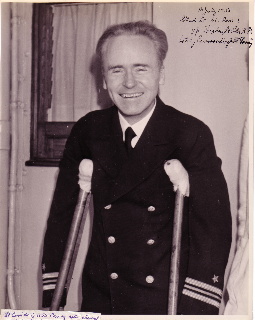
Lieutenant Commander J.J. Hughes
Grew observed other expressions of regret; One well-dressed Japanese woman stepped behind a door in the chancery and cut off a big strand of her hair and gave it to us with a carnation – the old-fashioned gesture of mourning the loss of a husband. Another Japanese broke down and cried at his country’s shame.
This public outcry involved members of every facet of Japanese society. High government officials, doctors, lawyers, businessmen, professors, doctors, and even school children visited the American Embassy in Tokyo to convey their shame. School children across Japan wrote letters and poems of the same sentiment to Ambassador Grew (see introduction). Sparing no effort to extend every possible diplomatic courtesy to one another helped to calm the tension between the United States and Japan in the wake of the Panay incident.
On 23 December, Secretary of State Hull received the findings of the Naval Court of Inquiry which the United States Navy convened to investigate the Panay sinking. The report absolved all American servicemen and civilians of any negligence or misconduct with regards to the events of 12 December 1937. Article 5 of the Naval court of inquiry findings placed responsibility for all losses on the Japanese. That evening a number of representatives of the Japanese government, the Imperial Army, and the Imperial Navy visited Grew at the American Embassy to share the findings of their own inquiry. In line with the initial Japanese reaction, their inquiry admitted Japanese liability and again offered apologies, but hinted at the accidental nature of the attack.
Christmas Eve 1937 brought the Japanese government’s official statement on the issue of the Panayattack. In a note delivered to the American Embassy, Hirota met all four of President Roosevelt’s demands. Only one issue remained unresolved: the money. The United States presented Japan with a statement of loss for the promised indemnifications on 19 March 1938. It included property loss restitution and indemnification for death and personal injury claims. The United States government billed the Japanese government in the amount of $2,214,007.36 and the Japanese delivered a check for that exact amount on 22 April 1938. On that day, the Panay sinking as a diplomatic crisis ended.
Ambassador Grew’s impressions of the meaning of the Panay incident ranged from naive exuberance to insightful foreboding. He believed that the Japanese purposely delayed their official response until 24 December in an effort to capitalize on the “Peace on Earth, good will toward men” spirit associated with the Christmas holidays. That is not to say that Grew regarded the Christmas Eve statement with contempt. On the contrary, Grew felt it to be a “masterful” approach to diplomacy. Although aware of the intent behind the timing of the Japanese statement, his excitement led him to refer to it as “an eminently happy day.” Grew’s diary entry for 26 December 1937 praised the diplomatic skill used by both countries to avoid war. He believed that the immediate tendering of apologies by the Japanese soothed the United States into a desire to be lenient’ and encouraged the rapid acceptance of those apologies. However, he confessed the temporary nature of the diplomatic accomplishments involving the Panay incident when he said, “We have, for the moment, safely passed a difficult hurdle.” The Panay incident emphasized to the United States the existence of “two Japans”.
Grew assessed the growing rift between the Japanese military and the Japanese government as the source of future concern, and correctly diagnosed the need for the government to exert control over its military. Secretary of State Hull believed that “wild, runaway, half-insane Army and Navy officials” precipitated the attack. Hull’s comment is quite accurate when viewed with reference to the ideological doctrine that guided the Japanese military in the 1920s and 1930s.
 The Panay sinking occurred during the twilight of Japanese pre-WorId War II diplomacy. While diplomatic representatives dealt with the foreign office their power remained in checked because the Imperial Army actually developed Japan’s foreign policy from 1931 onward. Some of the higher echelons of the Japanese military became disciples of Kodo-Ha; a movement reminiscent of the days before the influence of Western culture. Prior to the 20th Century, the “samurai”, or warrior class, represented the highest tier in Japanese society. This structure still existed when Japan opened its doors to westerners in the late 1800s, and as a result many Japanese men continued to feel strong ties to the Samurai past well into the 20th Century. To the ancestors of this formerly exalted warrior class, Kodo-Ha offered pride and status for men struggling to find a place in a burgeoning capitalist society. Japan did not part with its Samurai past to form any semblance of a governing assembly until the establishment of the Diet in 1920. In response to the Diet’s ascendancy to power, the Army staged two international incidents during the 1930s to challenge its authority. In September 1931 Chinese saboteurs allegedly exploded a bomb along the South Manchuria Railroad. The Imperial Army Commander in the region, a Kodo-Ha disciple, threw his forces into battle without the Diet’s approval. Then came the “strengthening” of Japanese forces in China in response to the incident at the Marco Polo Bridge in July 1937. The existence of a state of war with China gave the military constitutional control over the government. The Japanese military then moved to accomplish the fundamental goal of Kodo-Ha; Hakko Ichiu or the “liberation” of Asia. This called for the creation of the Greater East Asia Co-prosperity Sphere; an Asia under the domination of Japan.
The Panay sinking occurred during the twilight of Japanese pre-WorId War II diplomacy. While diplomatic representatives dealt with the foreign office their power remained in checked because the Imperial Army actually developed Japan’s foreign policy from 1931 onward. Some of the higher echelons of the Japanese military became disciples of Kodo-Ha; a movement reminiscent of the days before the influence of Western culture. Prior to the 20th Century, the “samurai”, or warrior class, represented the highest tier in Japanese society. This structure still existed when Japan opened its doors to westerners in the late 1800s, and as a result many Japanese men continued to feel strong ties to the Samurai past well into the 20th Century. To the ancestors of this formerly exalted warrior class, Kodo-Ha offered pride and status for men struggling to find a place in a burgeoning capitalist society. Japan did not part with its Samurai past to form any semblance of a governing assembly until the establishment of the Diet in 1920. In response to the Diet’s ascendancy to power, the Army staged two international incidents during the 1930s to challenge its authority. In September 1931 Chinese saboteurs allegedly exploded a bomb along the South Manchuria Railroad. The Imperial Army Commander in the region, a Kodo-Ha disciple, threw his forces into battle without the Diet’s approval. Then came the “strengthening” of Japanese forces in China in response to the incident at the Marco Polo Bridge in July 1937. The existence of a state of war with China gave the military constitutional control over the government. The Japanese military then moved to accomplish the fundamental goal of Kodo-Ha; Hakko Ichiu or the “liberation” of Asia. This called for the creation of the Greater East Asia Co-prosperity Sphere; an Asia under the domination of Japan.
Grew correctly realized that diplomacy is only effective when the diplomats wield power. During the 1930s, Japanese politicians exerted less governmental authority than the military. The absence of a system of “checks and balances” in the Japanese constitution of 1889 set the stage for a military coup d’état, and recognizing this, the militarists exploited that loophole and accessed absolute political power. The provision allowing the military to assume full governmental authority in the event of war provided the Kodo-Ha disciples their window of opportunity to eclipse the Western notion of diplomacy, and disarm their own statesmen. In late 1937 and early 1938, Japanese diplomats functioned as nothing more than the pawns of the warrior class. The phase of Hakko lchiu most likely to elicit American objections and lead to war required secure control of East Asia as a whole. The Japanese military needed to consolidate and make several more minor gains in 1937 before the implementation of that component of the plan. The ability to launch the massive offensives of 1941 and 1942 required several years of strengthening. Therefore, the Kodo-Ha disciples in the Army and Navy welcomed the improvement of Japanese-American relations brought on by the skillful work of the diplomats because it bought time. As the Panay incident proved, Japanese statesmen before 1941 sincerely struggled to repair the relations that the military jeopardized with the campaigns in the East called for by “Hakko Ichiu.”
 Surprisingly few Americans recognized the emerging military regime’s domination of Japanese politics. Joseph Grew, who ref erred to the “two Japans,” questioned the Japanese government’s ability to exert control over its military and therefore distinguished himself as one of the few people to sound a warning as to problems that 1941 would bring. The life of the relationship salvaged by the resolution of the Panay sinking depended on the military’s influence in Japanese foreign affairs diminishing. That could not happen because Hakko Ichiu influenced too many soldiers and sailors to be easily discarded. American abandonment of the adversarial view of Japan’s Asian expansion also could have maintained good relations. That could not happen either because of America feared Japanese political hegemony in the East. The foreign policies of the United States and Japan put the two countries on a collision course reversible by nothing short of war.
Surprisingly few Americans recognized the emerging military regime’s domination of Japanese politics. Joseph Grew, who ref erred to the “two Japans,” questioned the Japanese government’s ability to exert control over its military and therefore distinguished himself as one of the few people to sound a warning as to problems that 1941 would bring. The life of the relationship salvaged by the resolution of the Panay sinking depended on the military’s influence in Japanese foreign affairs diminishing. That could not happen because Hakko Ichiu influenced too many soldiers and sailors to be easily discarded. American abandonment of the adversarial view of Japan’s Asian expansion also could have maintained good relations. That could not happen either because of America feared Japanese political hegemony in the East. The foreign policies of the United States and Japan put the two countries on a collision course reversible by nothing short of war.
I left the Minister’s house realizing only too clearly that our satisfaction at the settlement of thePanay incident may be but temporary and that the rock upon which for five years I have been trying to build a substantial edifice of Japanese-American relations has broken down into treacherous sand.
The accidental sinking of one relatively small gunboat in the midst of a foreign war hardly seems like a profound and utterly distressing event with international ramifications. It did result in a small scale loss of life and property which temporarily angered the people of the Unites States. Although two Americans and one Italian died, the people of the United States demonstrated their ability to quickly forget the dead, the survivors, and the diplomats who resolved the matter. Although Japanese diplomats corrected the situation as best they could, the United States still ranked among the countries affected by Japanese expansionist aggression in the days before World War II. This caused at least one American diplomat (Grew) to speculate as to the future. Most Japanese did not recognize the ability to employ “wisdom and good sense” in an effort to resolve conflict as amiable. Thus one of the most commendable instances of diplomatic conflict resolution in the 20th Century passed unappreciated by the country that initiated the effort. The basis of the problem revolved around Japan’s feudal tendency to ennoble the warrior over the statesmen. Moreover, while Japan possessed all of the technological advancements of the world, these wonders lacked a modern political structure to monitor their use and consequently another world war resulted.
 [/read]
[/read]
The post That Fatal Missile appeared first on World War Media.
]]>The post The Douglas SBD Dauntless dive bomber of World War II appeared first on World War Media.
]]>On August 7, 1942 Petty Officer 1 st Class Saburo Sakai was piloting his A6M2 Type 21 Zero fighter in the skies over Sealark Channel in the Solomon Islands. He had flown down with a group of other Zeros from the Japanese airfield at Rabaul, New Britain that morning for the express purpose of attacking the ships supporting the first American opposed amphibious invasion of the Second World War: the Operation WATCHTOWER landings at Gavutu, Tanambogo, Tulagi and Guadalcanal. -by Martin K A Morgan
As Sakai and his wingman approached the skies above Tulagi, he spotted a group of eight American aircraft beneath him at an altitude of 7,800 feet. Assuming that they were US Navy F4F Wildcat fighters, Sakai nosed his Zero over to begin an attack his wingman obediently following. Closing in on the American aircraft from behind at full throttle, he assumed that the element of surprise was his. But at a range of just 100 yards Sakai gazed at his targets through his gunsight and reached a sober realization: these were not fighters he was approaching. By the time it was too late to break off the attack, Sakai realized that he was attempting to pounce on a group of dive-bombers. These aircraft were from the USS Enterprise (CV-6) and were circling above Tulagi awaiting orders to drop their bombs on Japanese targets on the island below. Unlike the F4F Wildcat fighter, US Navy dive-bombers were protected from rear attack by a tail gunner’s position.

Saburo Sakai
In the back seat of the bomber piloted by Ensign Eldor E. Rodenburg, Aviation Radioman 3rd Class James W. Patterson, Jr. opened fire. “He came in fast! I fired at him, but I just don’t know if I hit him or not,” he remembered. Sakai attempted to turn sharply to the right, pull up and use the Zero’s horsepower to climb away from the Americans, but he was too close. In the rear seat of one of the other bombers, Aviation Ordnanceman 2nd Class Harold L. Jones opened fire with Sakai only 100 feet directly astern his aircraft. What Jones saw next was a testament to the firepower that was available to the tail gunners: His cockpit exploded, the canopy tore, and something flew out. I could see his face clearly, his body and head forced back against the headrest of the cockpit. The plane went almost vertically upwards and then fell smoking. That was the last I saw of him. As the eight tailgunners followed the Zero with their machine guns, slugs shattered the canopy glass and hit Sakai. Fragments from the bullets struck him in the chest, the left leg, the elbow and the face. One tracer round missed his right eye by less than an inch and melted the rim of his goggles. In the brief encounter, the eight tailgunners expended over 1,000 rounds of ammunition and seriously injured one of the best Japanese fighter pilots of the war. Although Saburo Sakai would ultimately recover from his wounds and live to fight another day, he had been stung by one of the most lethal aircraft in the US military’s arsenal: the Douglas SBD Dauntless dive-bomber.
[read more=”Read more” less=”Read less”]

Radioman 1st Class James Patterson, Jr. (still onboard).
The SBD Dauntless was developed as an evolution of Northrop Aviation Corporation’s BT-1 and BT-2 dive bombers that entered service in 1936. At that time, the U.S. Navy was transitioning from bi-planes to all metal, low-wing monoplanes with retractable landing gear, and the BT series were on the cutting edge of that transition. In 1937, Douglas Aircraft Company purchased Northrop Aviation’s El Segundo, California plant and took over the BT program. With minor modifications by Douglas, the BT-2 became the SBD-1 Dauntless in 1939 and deliveries of the aircraft began in June 1940. The basic airframe appearance of the Dauntless was established with the first model and would vary only slightly throughout production. Its’ distinctive greenhouse canopy and round tipped wings made it an easily identifiable aircraft. But perhaps the most recognizable feature of the Dauntless was its perforated dive flaps. In a steep dive, these flaps would deploy upward and downward from the trailing edge of the wing to maintain a constant airspeed of 250 knots. The perforations in the flaps allowed airflow to stabilize the aircraft, making the Dauntless a rock solid bombing platform.
The SBD was also a well-armed bomber: the pilot could control a pair of ANM2 .50-cal. machine guns mounted in the cowling firing through the propeller arc using an interrupter and the radio-operator/gunner’s position was equipped with an aftfacing swivel mount for the ANM2 .30-cal. machine gun to protect the aircraft from a tail attack (as Saburo Sakai so painfully learned in the skies over Sealark Channel on August 7, 1942). But the Dauntless was built to deliver bombs with precision, so the aircraft was equipped with under wing ordnance mounting points. A pair of 100-pound bombs could be carried on outer wing pilings and, on the aircraft’s center-line, a fork shaped bomb displacing gear allowed the mounting of 250-pound, 500-pound and even 1,000-pound bombs. On release, the bomb displacing gear would swing downward so that the bomb would clear the aircraft’s propeller. A telescopic sight mounted in the cockpit allowed the pilot to aim the delivery of his under-wing ordnance. In all, these features made the Dauntless a simple, effective and rugged combat aircraft. The SBD-1 was equipped with the powerful 1,000hp Wright R-1820-32 radial engine but it had an overall flight range that was considered too modest for aircraft carrier operations. For that reason, the SBD-2 was developed with an increase of 100 gallons in fuel capacity extending the aircraft’s maximum radius from 860 miles to 1,125 miles. The Marine Corps began operating the SBD-1 in 1940 and the Navy began using the SBD-2 in 1941. At about that same time, Douglas produced the SBD-3 version of the Dauntless with another increase in fuel capacity, extending maximum bombing range to 1,345 miles. This third model of the Dauntless entered service in March of 1941 and also saw the introduction of self sealing fuel tanks as well as armor protection for the crew. The Navy began replacing its’ SBD-2s with SBD-3s immediately, handing the SBD-2s down to the USMC. That process was still in motion when the Japanese attacked the U.S. on Sunday, December 7, 1941 – and the Dauntless went to war.
 The SBD experienced combat from the very first day of the conflict, with the first losses the result of action with Japanese aircraft over Oahu in the Territory of Hawaii. In the aftermath of Pearl Harbor, the Dauntless was one third of the 3 team of aircraft that served on U.S. Navy aircraft carriers during the first six critical months of the war. Along with fighters and torpedo bombers, SBDs flew during each of the hit and run raids during the opening quarter of the year 1942. Attacks on the Marshall Islands, Wake, Marcus, as well as Lae and Salamaua on the west coast of New Guinea included the Dauntless. When the aircraft carrier USS Hornet (CV-8) carried 16 Army B-25B medium bombers for the Halsey/Doolittle raid on Tokyo in April 1942, SBDs from the USS Enterprise (CV-6) flew combat air patrol to protect them. In early May, SBDs from the aircraft carriers USS Lexington (CV-2) and the USS Yorktown (CV-5) flew combat sorties during the Battle of the Coral Sea and contributed to the notable sinking of the Japanese light carrier Sh ōh ō near the Louisiade Archipelago on May 7, 1942. During the Battle of the Coral Sea, the Dauntless proved that it was very effective at the job it was designed for – search and strike. In addition to that though, SBDs in the hands of skilled naval aviators during that battle proved that the aircraft was good at something else too – air to air combat.
The SBD experienced combat from the very first day of the conflict, with the first losses the result of action with Japanese aircraft over Oahu in the Territory of Hawaii. In the aftermath of Pearl Harbor, the Dauntless was one third of the 3 team of aircraft that served on U.S. Navy aircraft carriers during the first six critical months of the war. Along with fighters and torpedo bombers, SBDs flew during each of the hit and run raids during the opening quarter of the year 1942. Attacks on the Marshall Islands, Wake, Marcus, as well as Lae and Salamaua on the west coast of New Guinea included the Dauntless. When the aircraft carrier USS Hornet (CV-8) carried 16 Army B-25B medium bombers for the Halsey/Doolittle raid on Tokyo in April 1942, SBDs from the USS Enterprise (CV-6) flew combat air patrol to protect them. In early May, SBDs from the aircraft carriers USS Lexington (CV-2) and the USS Yorktown (CV-5) flew combat sorties during the Battle of the Coral Sea and contributed to the notable sinking of the Japanese light carrier Sh ōh ō near the Louisiade Archipelago on May 7, 1942. During the Battle of the Coral Sea, the Dauntless proved that it was very effective at the job it was designed for – search and strike. In addition to that though, SBDs in the hands of skilled naval aviators during that battle proved that the aircraft was good at something else too – air to air combat.
On the morning of May 8th, a section of SBD-3s was flying anti-torpedo-plane patrol to protect the USS Yorktown (CV-5) from enemy torpedo bombers. Lt. (JG) Stanley “Swede” W. Vejtesa, one of the pilots of the patrol, had put a 1,000-pound bomb through the deck of the Sh ōh ō the day before and was minutes away from still more excitement. Shortly after 1100 hrs. the SBDs were attacked by a group of Japanese Zero fighters from the carrier Zuikaku. With superior speed and agility, the nimble fighters quickly brought down four of the SBDs, but then they came up against Swede Vejtasa. After surviving the first attack, Lt. (JG) Vejtasa yelled to his radio-operator/gunner: “Son, we’re in for a scrap – keep your head and conserve your ammunition…. I’ll take care of the rest.” With guns blazing, the Zeroes made pass after pass at Vejtasa’s SBD. Each time one of the enemy fighters attacked, Swede would turn into it and spoil the set-up. Then, Vejtasa would fire back at the attacker using the twin ANM2 .50-cal. machine guns in his engine cowling. All the while his radio-operator/gunner in the backseat held-off the enemy with his twin ANM2 .30- cal. machine guns. Despite being harassed by three Zeroes for an exhausting 25 minutes, Vejtasa’s SBD survived. Despite the fact that he was flying a dive-bomber against fighters, Vejtasa miraculously shot down one of the Zeroes. SBDs fought air-toair engagements with the Japanese time and time again and were credited with 138 shoot-downs during World War II. Clearly, the SBD was no ordinary dive-bomber. Although it proved its mettle during the early hit-and-run raids and in history’s first carrier vs. carrier battle in the Coral Sea, the SBD’s finest hour came in June 1942 during the Battle of Midway. The Japanese descended on the battle area with naval might divided into a transport force, a main body and an aircraft carrier striking force composed of the fleet carriers Kaga, Akagi, Soryu and Hiryū. Their objective was double: capture Midway Island and lure the remains of the U.S. Pacific fleet into a final, decisive battle that would destroy it once and for all.

Maj Lofton R Henderson, USMC 1941
The Marine’s strike against the Japanese fleet was a part of a cascading series of attacks from various land and carrier based Army and Navy squadrons. Before VMSB-241 arrived on the scene to harass the Japanese carriers, Navy TBF-1 Avenger torpedo bombers and Army B-26 Marauder medium bombers had already been there. After Lofton Henderson’s SBD-2s made their attack and departed the area, a group of Army B-17 Flying Fortress bombers struck followed by a group of 11 SB2U-3 Vindicator dive bombers (also from VMSB- 241 ). All of these attacks were conducted by ground based aircraft and took place between 0800 and 0820 hrs. on June 4th. Although brief in duration and responsible for almost no damage, these attacks forced the Japanese ships to maneuver defensively, forced their anti-aircraft gunners to expend large quantities of ammunition and made their combat air patrol aircraft burn fuel. For the next hour, the Japanese carriers were able to recover aircraft and begin the process of re-arming and re-fueling, but then American carrier based squadrons began a new series of attacks. At approximately 0920 hrs. a formation of 15 TBD-1 Devastator torpedo planes from the USS Hornet (CV-8) began an attack on the carrier Soryu. With no fighter escort to protect them from the nimble Zeroes, all 15 of the slow moving TBDs were easily picked-off within a matter of minutes. They did no damage to the enemy fleet. At 1000 hrs. a formation of TBDs from the USS Enterprise (CV-6) arrived on the scene and commenced an attack. Fifteen minutes after that, TBDs from the USS Yorktown (CV-5) closed-in on the Hiryū. Once again the Japanese fleet dodged the bullet and suffered no meaningful damage. The cumulative effect of fighting off enemy aircraft for more than two hours stretched the Japanese to the limit. Although thus far they had been successful in defending their carriers, their luck was about to run out. The true decisive moment of the Battle of Midway began just as the Yorktown TBDs were concluding their attack. As Japanese gunners and combat air patrol fighters attempted to bring down the last of the Devastators escaping at wave-top level, lookouts on the Akagi noticed enemy aircraft high above the fleet. It was 1022 hrs. on June 4, 1942 and the course of World War II history was about to be changed by 48 SBD Dauntless dive bombers. At that moment, 25 SBD-3s from the Enterprise entered their dives in an attack on Kaga that quickly resulted in four direct hits. Just moments later, six other Enterprise SBD-3s dove on Akagi and scored two direct hits with lethal 1,000- pound bombs. Simultaneously, 17 Yorktown SBD-3s dove on Soryu scoring three hits with 1,000-pound bombs. In four minutes’ time, three Japanese fleet aircraft carriers – each of which had participated in the Pearl Harbor raid – were raging infernos. Although it escaped destruction in the morning raid, a group of SBDs from Enterprise and Yorktown found the Hiryū later that afternoon and hit it with four bombs, destroying it as well. Thus the Japanese ended the day on June 4, 1942 having lost all four of their aircraft carriers to American SBDs. It was so significant a loss that it materially altered 6 their battle plan beyond salvaging. For that reason, Admiral Yamamoto ordered a general retirement from the battle area that night. With the cancellation of the plan to capture and occupy Midway, and the obvious failure to destroy the U.S. Pacific fleet in a final, decisive showdown, the Japanese conceded defeat. Although technically the battle was over, the Dauntless was not quite yet done destroying ships.

Aircraft carrier HIRYU
The following day (June 5th), U.S. forces pursued the retreating Japanese westward as they withdrew in defeat. Since all four aircraft carriers were now on the bottom of the sea, the cruisers Mikuma and Mogami offered the most tempting target as they limped away from the battle area at 15 knots. Having collided with Mikuma the night before, the Mogami was struggling with damage that caused a dramatic reduction in speed. Accordingly, SBDs from VMSB-241 launched an attack against the two ships the morning of the 5th, but they scored only near misses that slightly damaged Mikuma. The following morning (June 6th), a strike of 81 SBDs from Hornet and Enterprise found the two cruisers and attacked them in three waves. After being hit by two 1,000-pound bombs, Mogami sustained additional damage but lived to fight another day. Hit by three 1,000-pound bombs, the Mikuma was reduced to a burned-out hulk dead in the water. The ship sank later that evening – marking the end of the battle. The tally of Japanese losses was staggering: 248 combat aircraft and just over 3,000 men had been lost. Four fleet aircraft carriers and one cruiser had been sunk. The Akagi, Kaga, Soryu, Hiryū and Mikuma had all been destroyed by the Douglas SBD Dauntless. But something else was destroyed at Midway – Japanese ambition.

Aircraft carrier KAGA
Enterprise and Hornet fought the Battle of Santa Cruz Islands. Then in November, on the other side of the globe, SBDs from the carrier USS Ranger (CV-4) flew air support for the Operation TORCH landings in North Africa. On November 10, 1942, nine SBDs from the Ranger sank the moored battleship Jean Bart in port at Casablanca, Morocco. With the sinking of the Japanese battleship Hiei three days earlier in the Pacific, this was the second enemy battleship sunk by SBDs within one week. During the early part of the war, the Army also used the Dauntless under the nomenclature A-24 Banshee. Essentially an SBD-3 without a tail hook, the A-24 replaced the SBD’s solid tail wheel with a large pneumatic tire. The Banshee entered service in March 1941 but had a far less distinguished career flying for the Army. When the war began, the A-24 was to equip the 27th Bombardment Group in the Philippines but the surrender of Bataan saw the Banshee diverted to Australia, where it equipped the 91 st and 8th Bombardment Squadrons. The 91 st Bombardment Squadron took its aircraft to the Dutch East Indies, and the 8th BG operated from the north coast of Australia. As the Navy model changed, so did the Army model. In late 1942 the Navy SBD-4/Army A-24A began to enter squadron service with only minor changes from the previous model. By that point in the war, the Army was no longer using the Banshee in combat but the SBD-4 went into full fleet carrier service. When the Curtis SB2C Helldiver entered service in late 1943, the Dauntless was no longer the Navy’s front line dive bomber. Despite that though, the most produced variant of the aircraft was introduced at about that same time. The SBD-5/A-24B featured an increased ammunition carrying capacity, an illuminated bombsight and also introduced the 1,200hp Wright R-1820-60 engine. A total of 3,640 SBD-5s/A-24Bs were produced during 1943 at the height of industrial production in the U.S. These aircraft went on to fight some of the most dramatic encounters of the latter years of the war. During this period, carrier based Navy SBD-5s participated in raids against the Japanese garrison on Wake Island (October 1 943) as well as the Operation HAILSTONE raid against the Japanese fleet anchorage at Truk lagoon in February 1944.
 The Dauntless also fought north of the Arctic Circle when SBD-5s from the Air Group of the USS Ranger (CV-4) participated in Operation LEADER – a strike against German shipping in Bodø Harbor, Norway on October 4, 1943. Since the Army was no longer using the Banshee in combat, some A- 24s were turned over to the USMC for ground based operations. Some of these aircraft flew anti-submarine patrols over the Caribbean out of a base in the Virgin Islands while others assigned to VMSB-236 participated in a raid on Rabaul on January 14, 1944. The introduction of the SB2C Helldiver and the SBD’s lack of folding wings resulted in its gradual disappearance from Navy carrier air groups during 1944. The last major aircraft carrier operation it flew came on June 20, 1944 when SBD-5s from the USS Enterprise (CV-6) and the USS Lexington (CV-16) flew a strike against the Japanese Mobile Force during the Battle of the Philippine Sea. The following month when SBDs flew in support of ground forces fighting to liberate Guam, it marked the conclusion of the aircraft’s shipboard service. At about that same time, the final version of the Dauntless was introduced as the SBD-6. Although the most powerful and advanced variant of the series, the 450 SBD-6s produced remained stateside for the most part. Meanwhile overseas, SBD-5s continued to serve in ground based squadrons until the very end of the conflict. For example, Marine Air Group 12 (“MAG-12”) moved to the island of Luzon, Philippines shortly after the amphibious landing of Army forces at Lingayen Gulf in January 1945. SBDs assigned to MAG-12’s famous VMSB-241 – best known for its stunning performance almost three years earlier during the Battle of Midway – flew numerous combat sorties in support of Army units on the ground until VJDay in August. At the end of the war, the Dauntless had many claims to fame – the most impressive of which was that it sank more Japanese shipping in the Pacific than any other Allied aircraft.
The Dauntless also fought north of the Arctic Circle when SBD-5s from the Air Group of the USS Ranger (CV-4) participated in Operation LEADER – a strike against German shipping in Bodø Harbor, Norway on October 4, 1943. Since the Army was no longer using the Banshee in combat, some A- 24s were turned over to the USMC for ground based operations. Some of these aircraft flew anti-submarine patrols over the Caribbean out of a base in the Virgin Islands while others assigned to VMSB-236 participated in a raid on Rabaul on January 14, 1944. The introduction of the SB2C Helldiver and the SBD’s lack of folding wings resulted in its gradual disappearance from Navy carrier air groups during 1944. The last major aircraft carrier operation it flew came on June 20, 1944 when SBD-5s from the USS Enterprise (CV-6) and the USS Lexington (CV-16) flew a strike against the Japanese Mobile Force during the Battle of the Philippine Sea. The following month when SBDs flew in support of ground forces fighting to liberate Guam, it marked the conclusion of the aircraft’s shipboard service. At about that same time, the final version of the Dauntless was introduced as the SBD-6. Although the most powerful and advanced variant of the series, the 450 SBD-6s produced remained stateside for the most part. Meanwhile overseas, SBD-5s continued to serve in ground based squadrons until the very end of the conflict. For example, Marine Air Group 12 (“MAG-12”) moved to the island of Luzon, Philippines shortly after the amphibious landing of Army forces at Lingayen Gulf in January 1945. SBDs assigned to MAG-12’s famous VMSB-241 – best known for its stunning performance almost three years earlier during the Battle of Midway – flew numerous combat sorties in support of Army units on the ground until VJDay in August. At the end of the war, the Dauntless had many claims to fame – the most impressive of which was that it sank more Japanese shipping in the Pacific than any other Allied aircraft.
The SBD Dauntless could also claim the lowest loss ratio of 8 any U.S. Navy carrier based combat aircraft in World War II. When you consider that each example of the aircraft responsible for the miracle at Midway was costing the U.S. government a mere $29,000 in 1944, you have to recognize that the Douglas SBD Dauntless was truly one of the greatest aircraft of the Second World War.
 [/read]
[/read]
The post The Douglas SBD Dauntless dive bomber of World War II appeared first on World War Media.
]]>The post The Hémevez Massacre appeared first on World War Media.
]]>by Martin K A Morgan
For more than 72 years now, the Normandy invasion has consistently interested history enthusiasts from around the world. Within this topic, the history of airborne operations on D-Day has remained especially popular and inspirational.
 When we remember the paratroopers and glider infantrymen who contributed so significantly to the hard-won success of June 6th, we tend to remember the stories that leave us with something to admire. Extreme heroism, decisive leadership, and noble self-sacrifice give us reasons to believe in the greatness of a generation who went to France that summer to be a part of its liberation.
When we remember the paratroopers and glider infantrymen who contributed so significantly to the hard-won success of June 6th, we tend to remember the stories that leave us with something to admire. Extreme heroism, decisive leadership, and noble self-sacrifice give us reasons to believe in the greatness of a generation who went to France that summer to be a part of its liberation.
While the tendency to celebrate courage and intrepidity is certainly understandable, it is also important to remember that the battle in Normandy could be brutal – that lives could be brought to an end by the kind of ferocity that is usually not associated with the war in northern Europe. For some U.S. paratroopers, the bitter end was neither glorious nor redemptive. For some, June 6th, 1944 brought a violent end in an action that few have ever heard of. Just over 13,000 U.S. sky soldiers came to occupied France during the pre-dawn hours of D-Day.
It is a story that is so big that the individual often gets lost in it. The story that you are about to watch relates to what happened to eight U.S. paratroopers on June 6th. This is the story of eight men who only lived through the opening hours of France’s liberation. What happened to them simply slipped into obscurity.
This is the story of the massacre at Hémevez.
The post The Hémevez Massacre appeared first on World War Media.
]]>